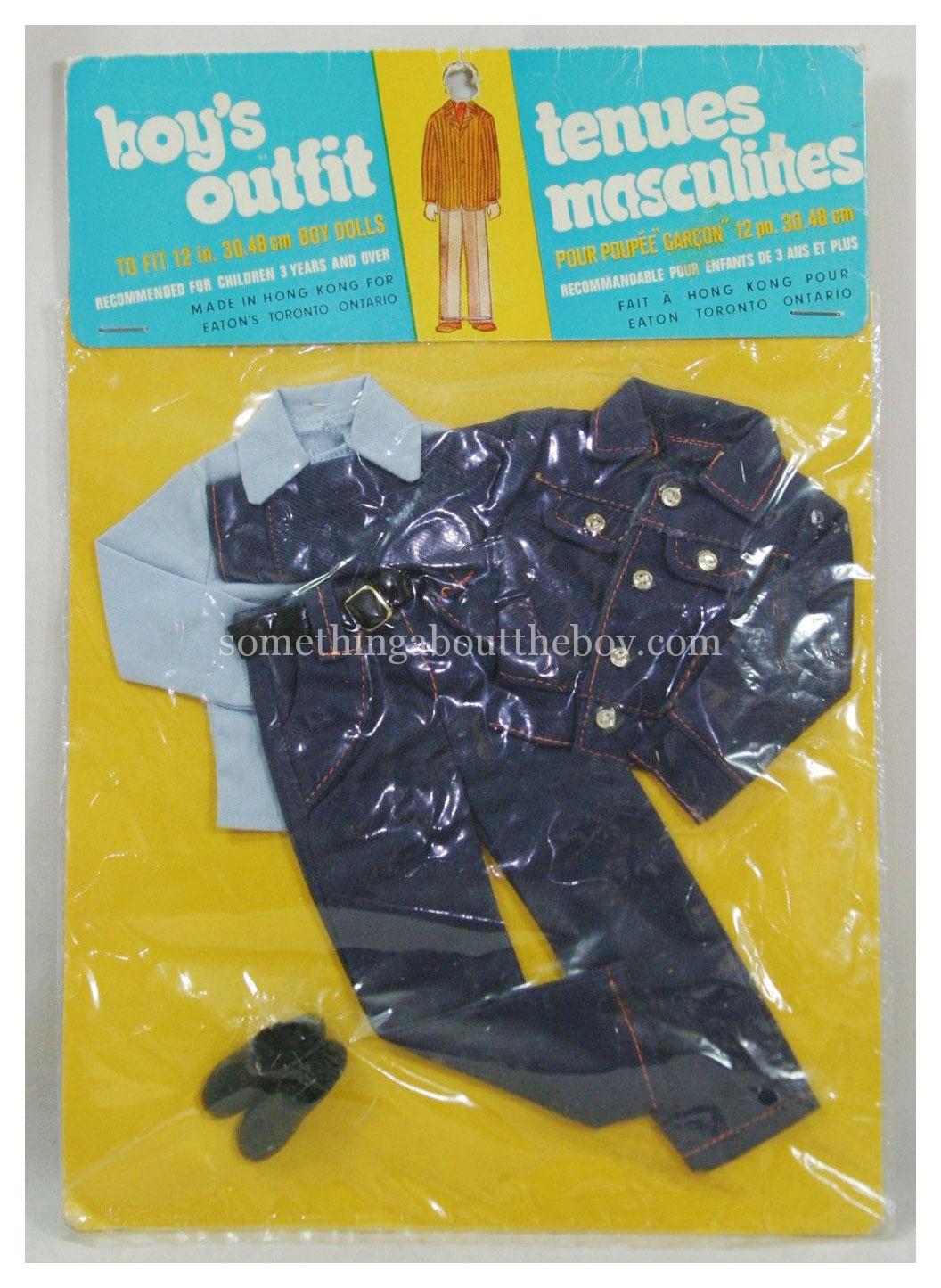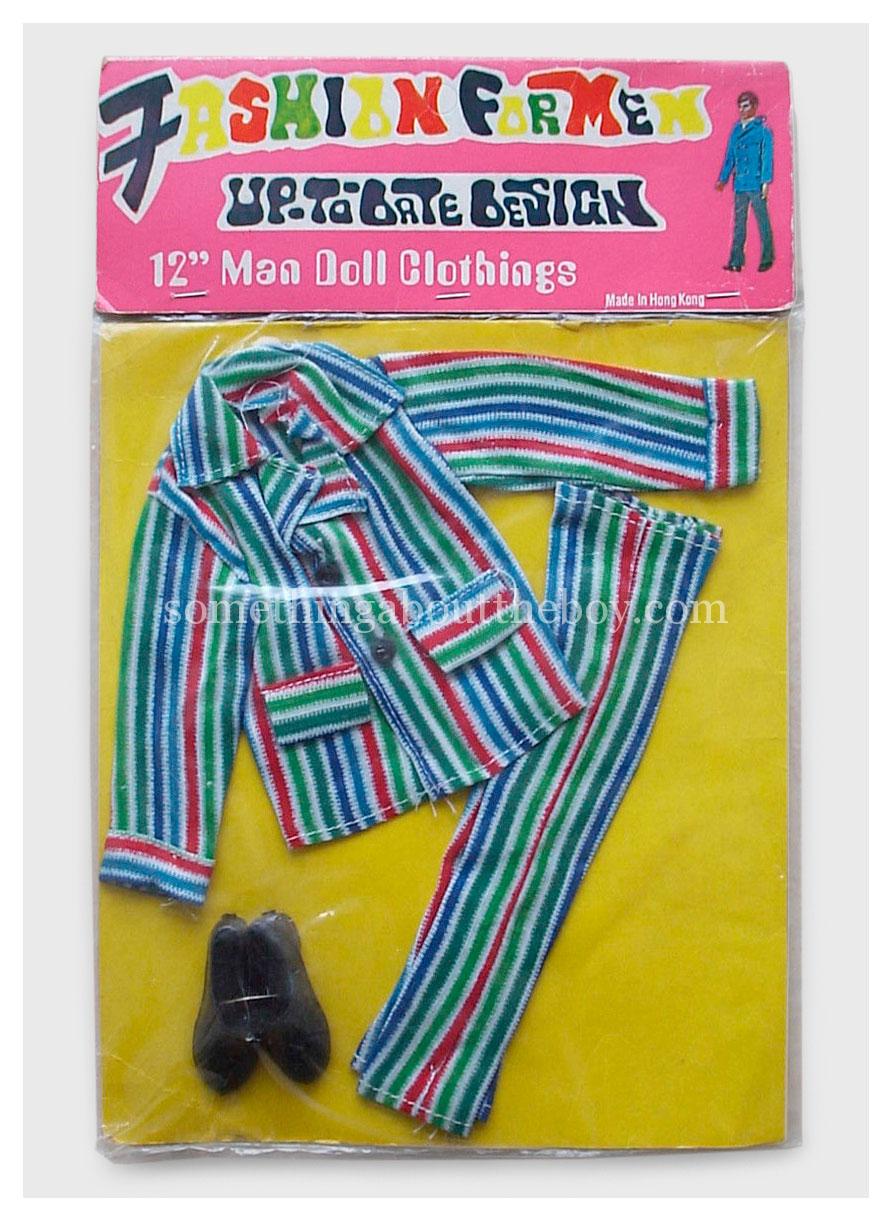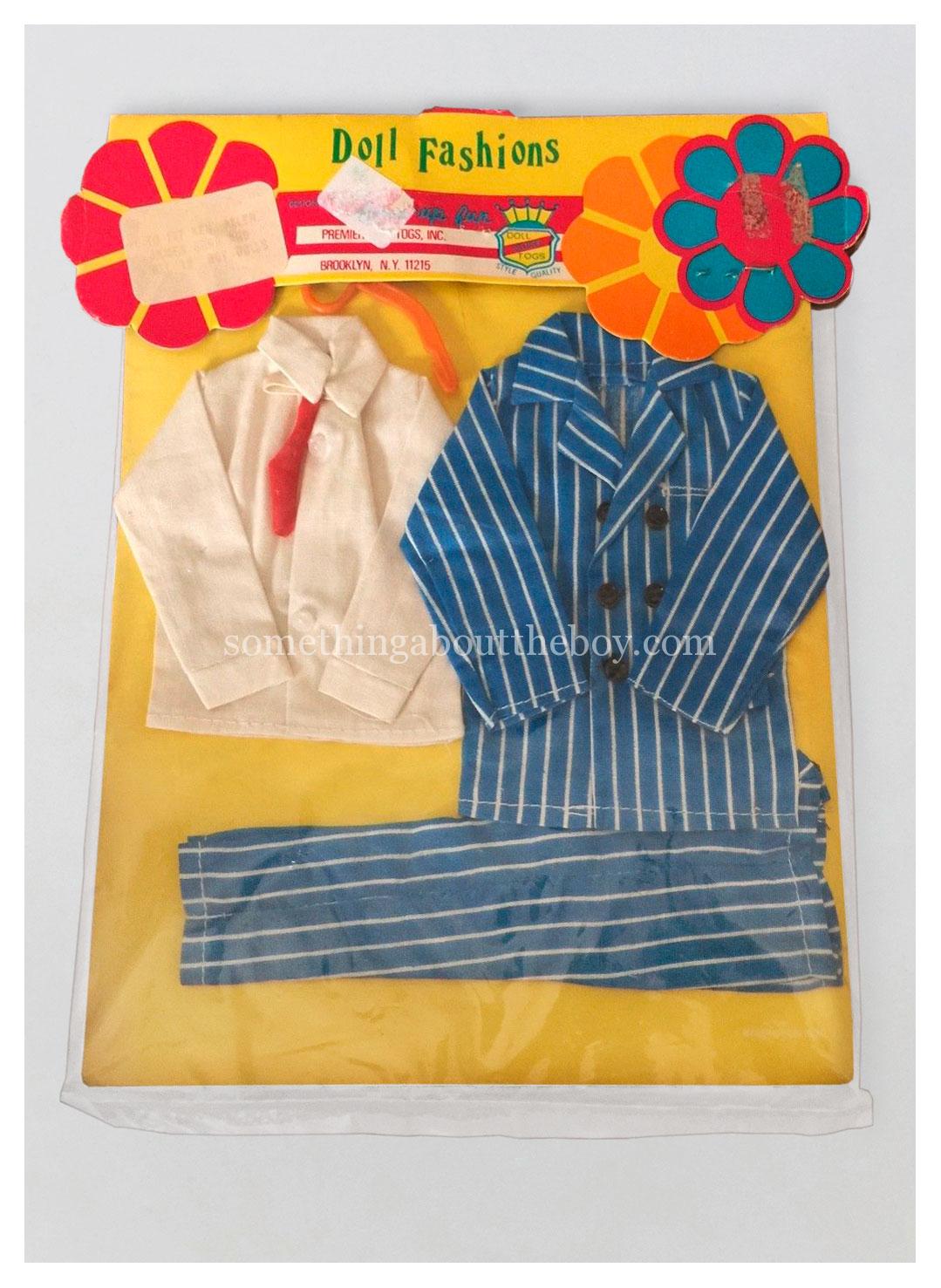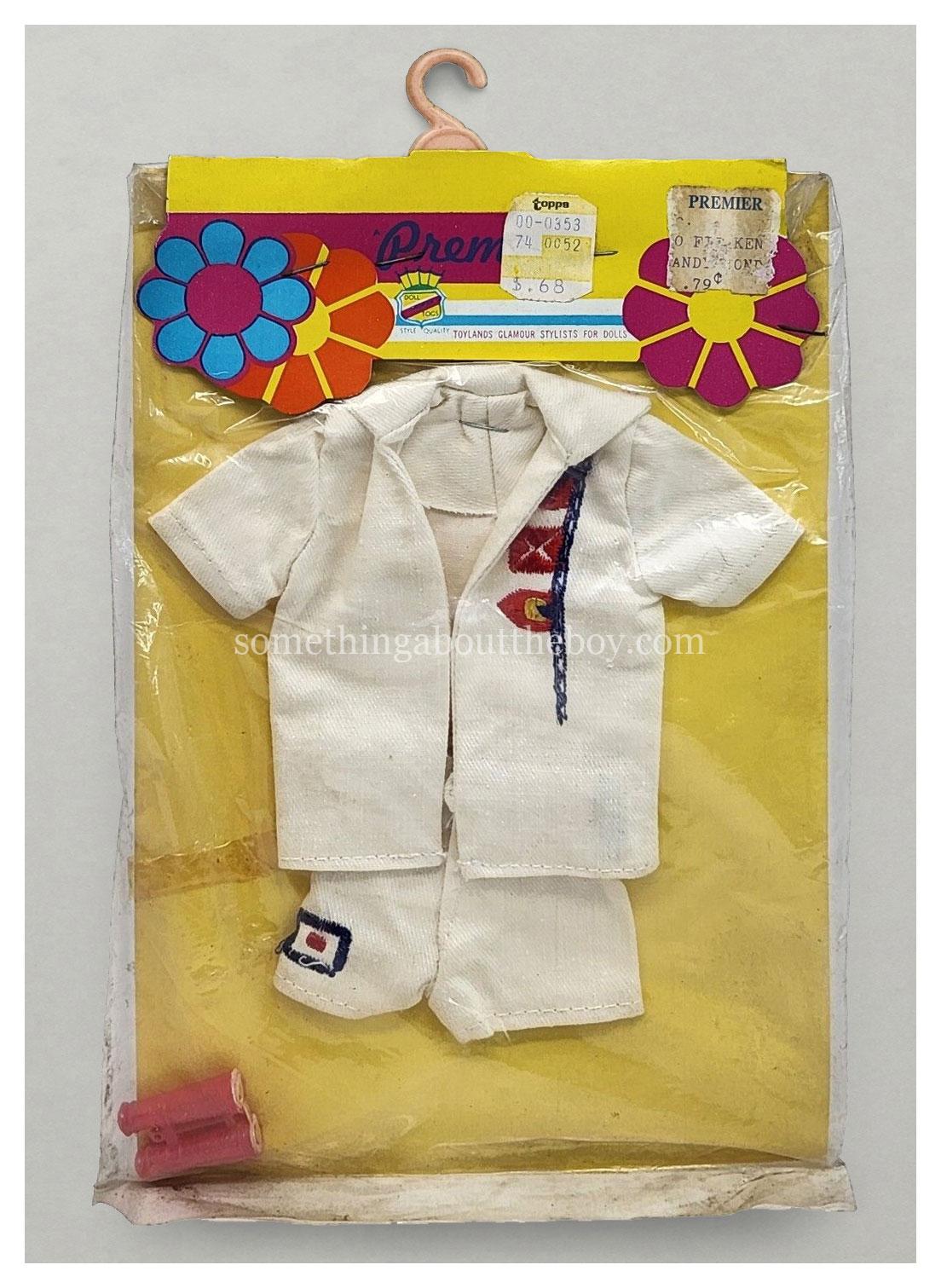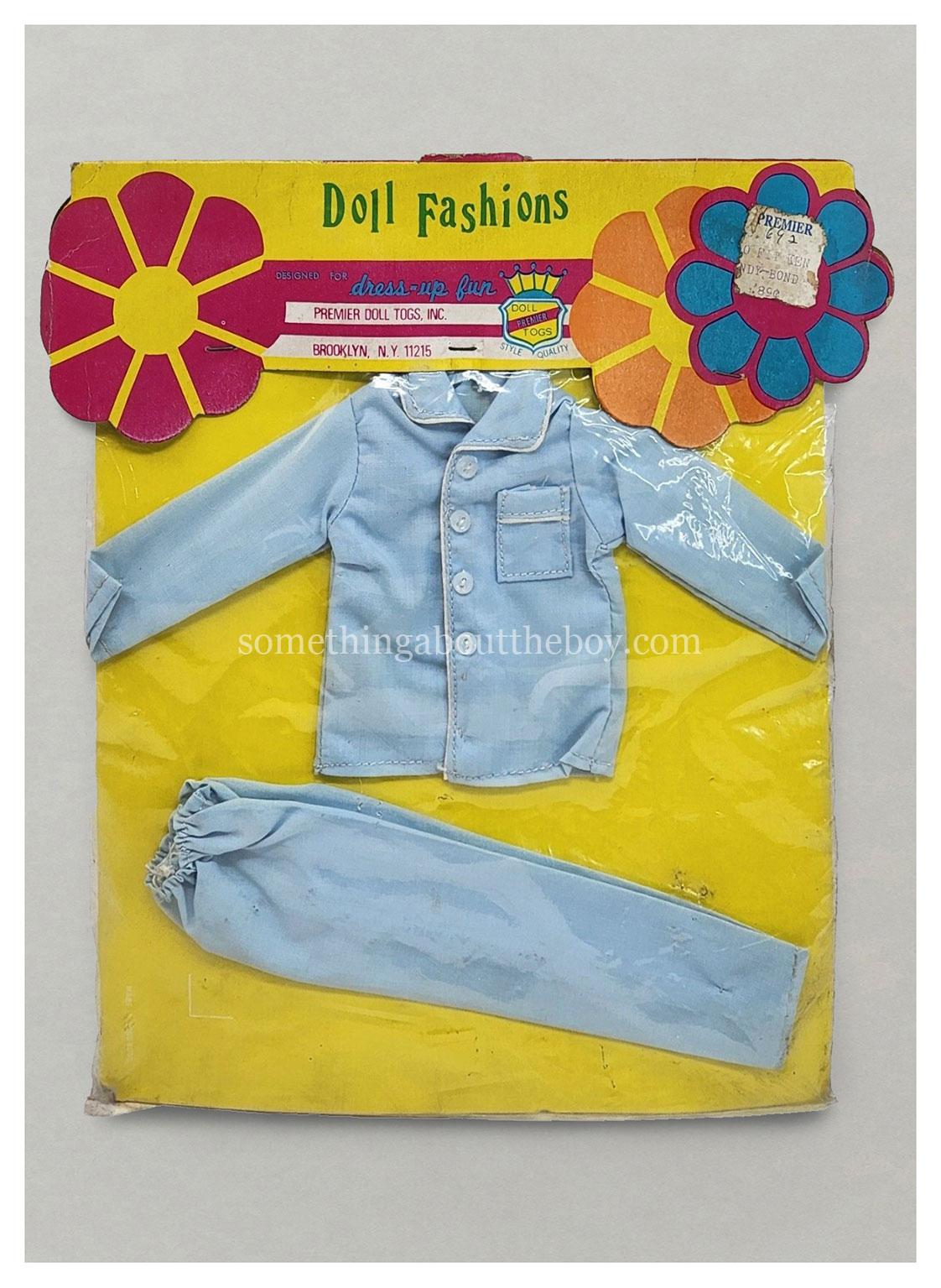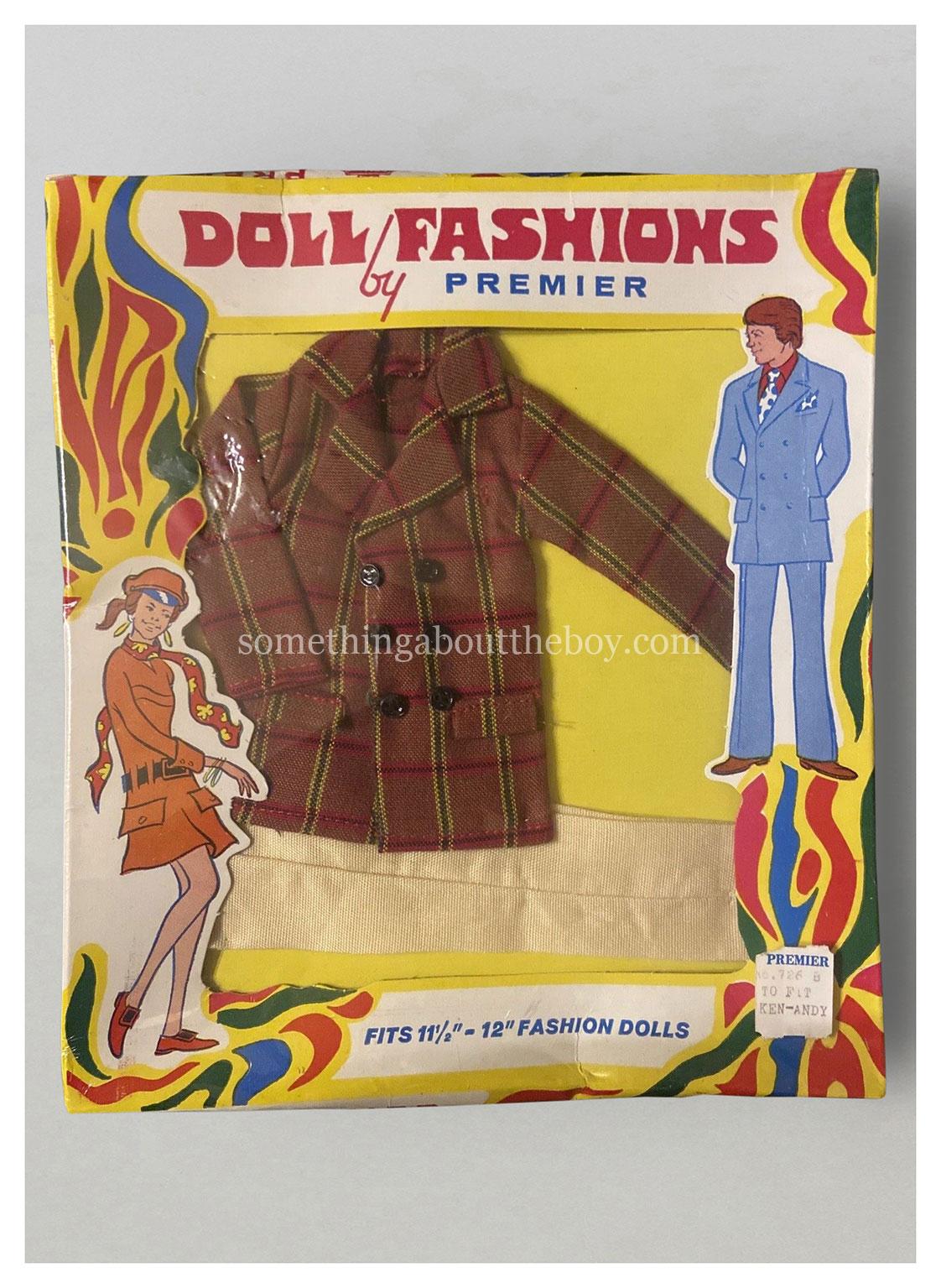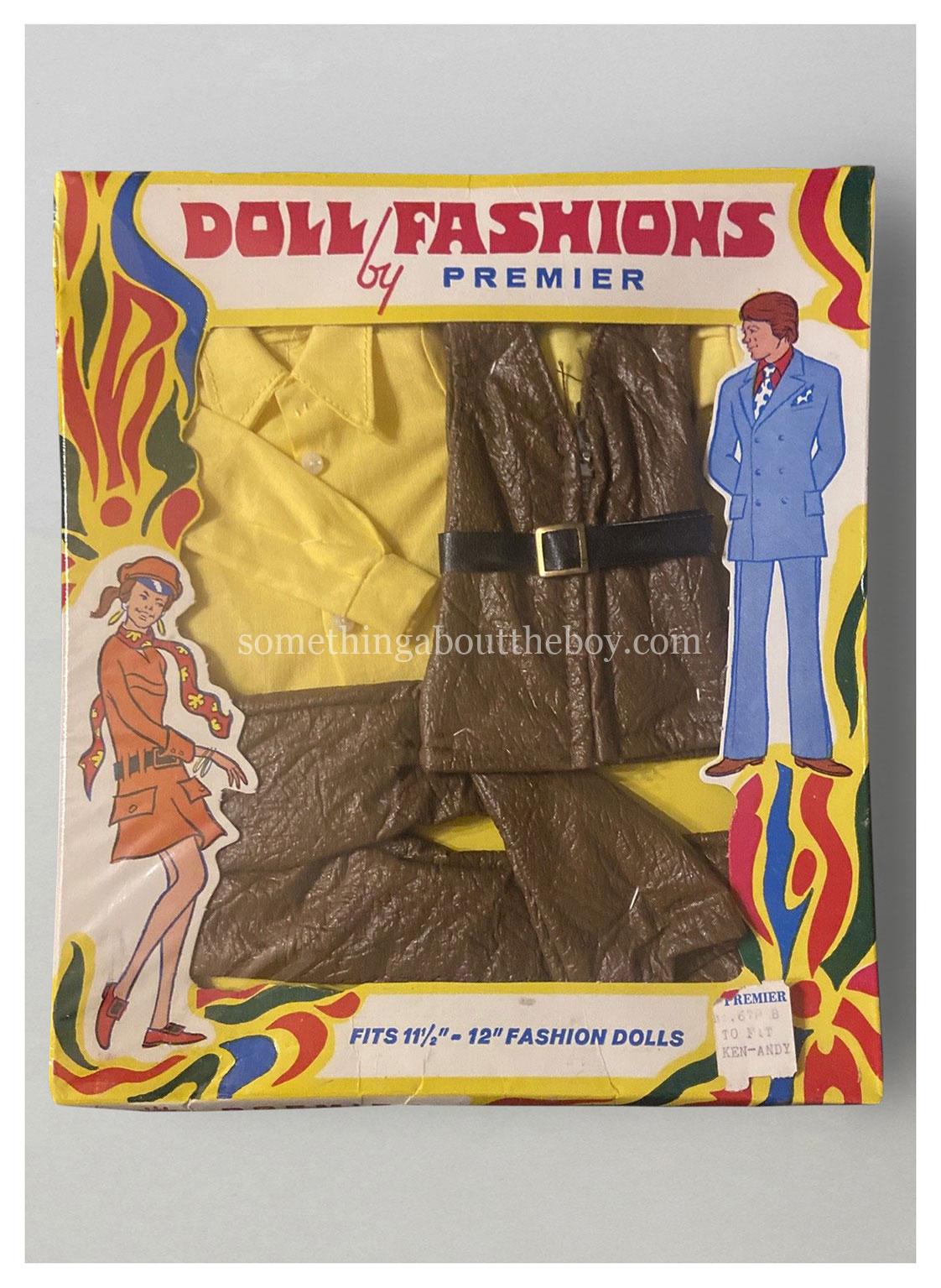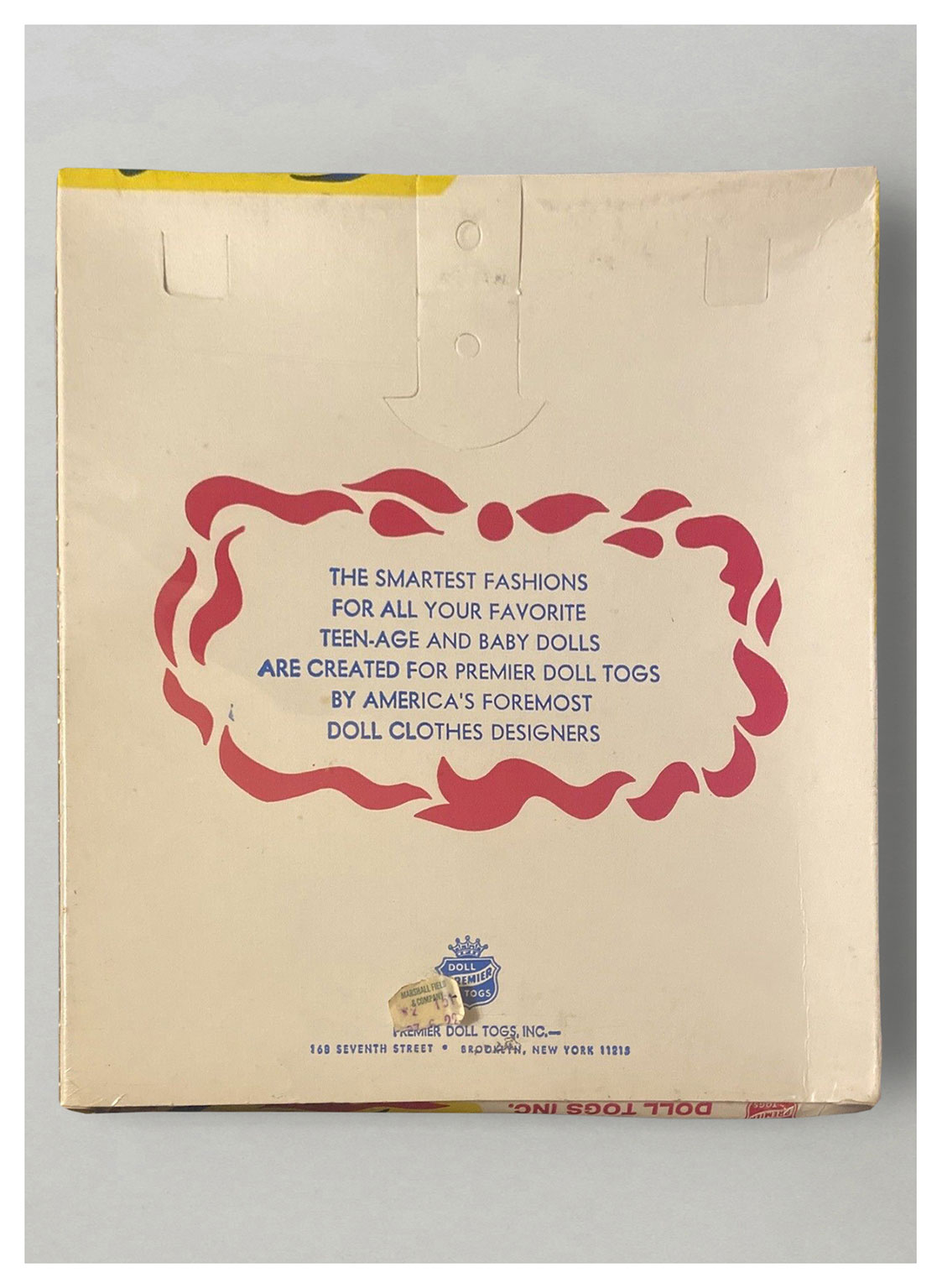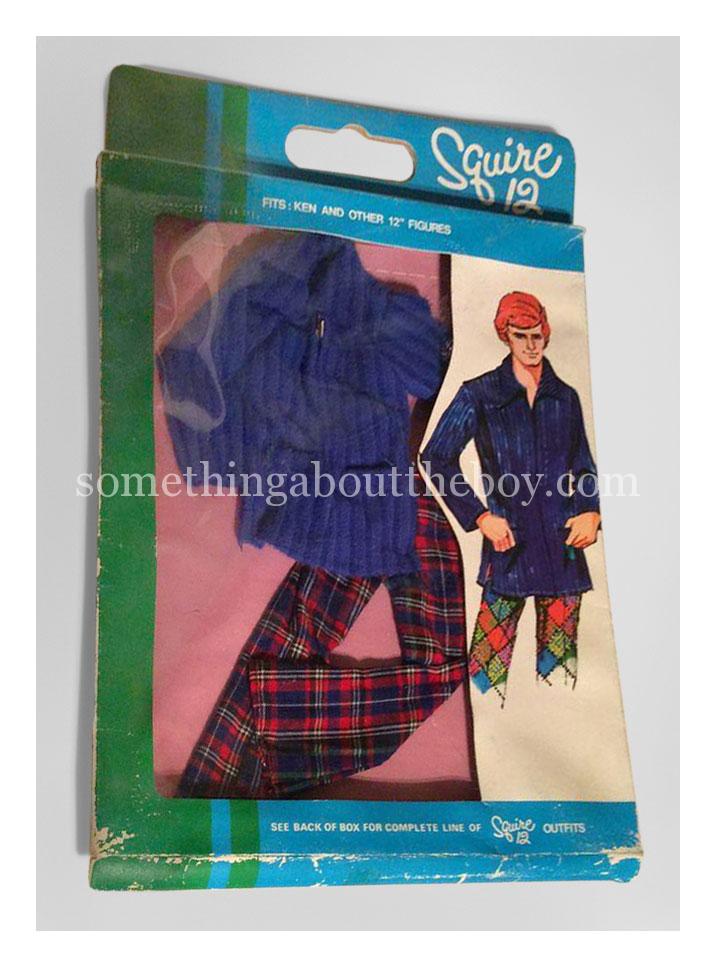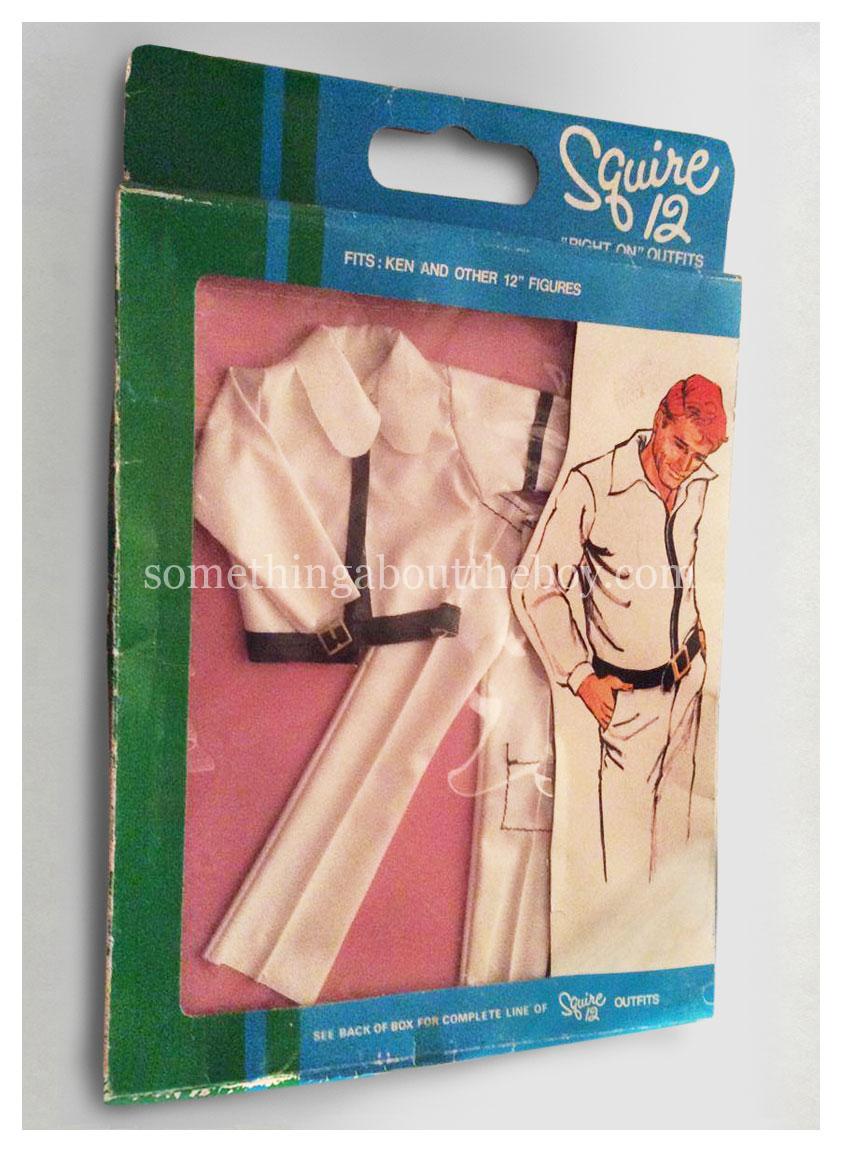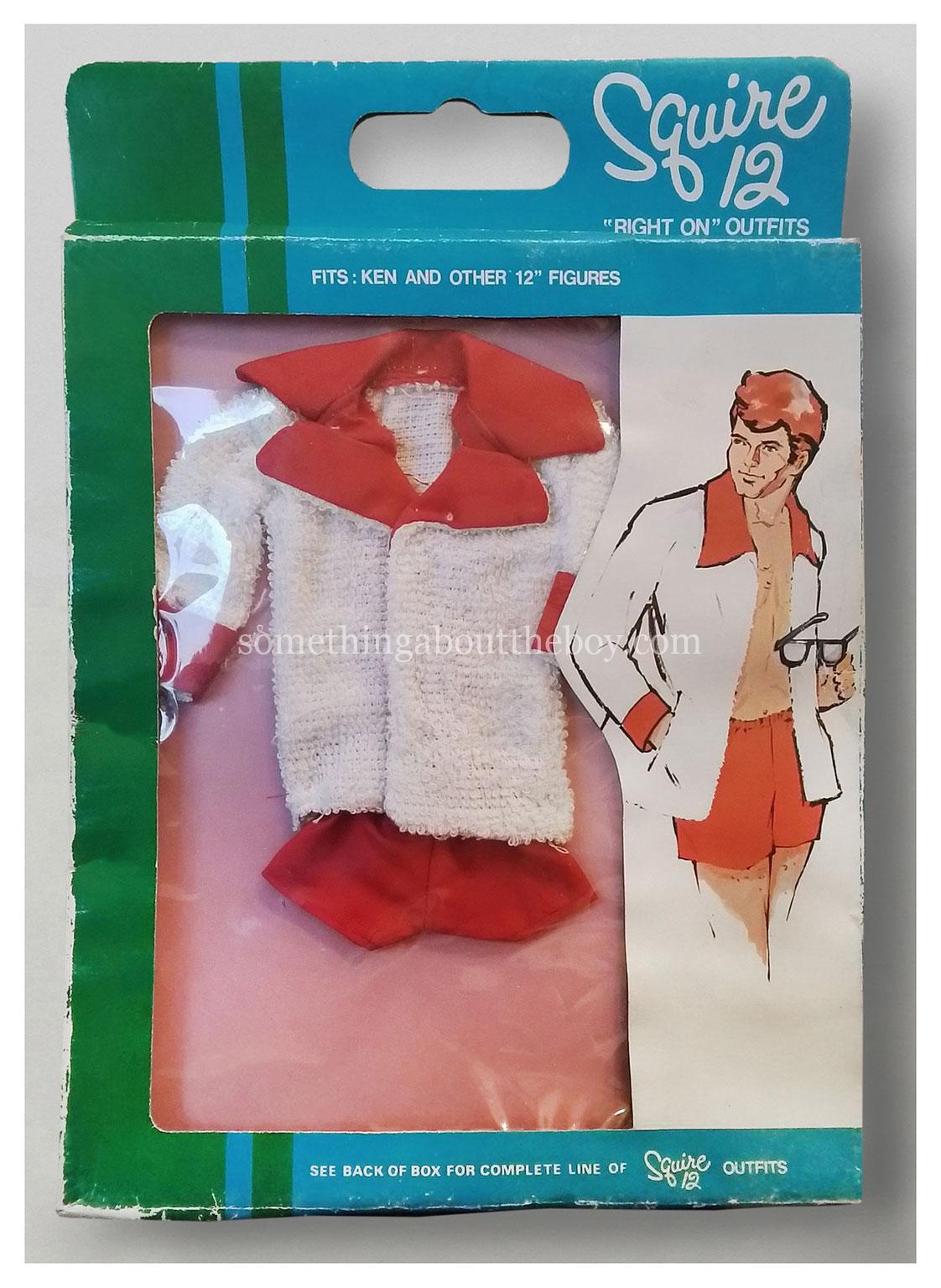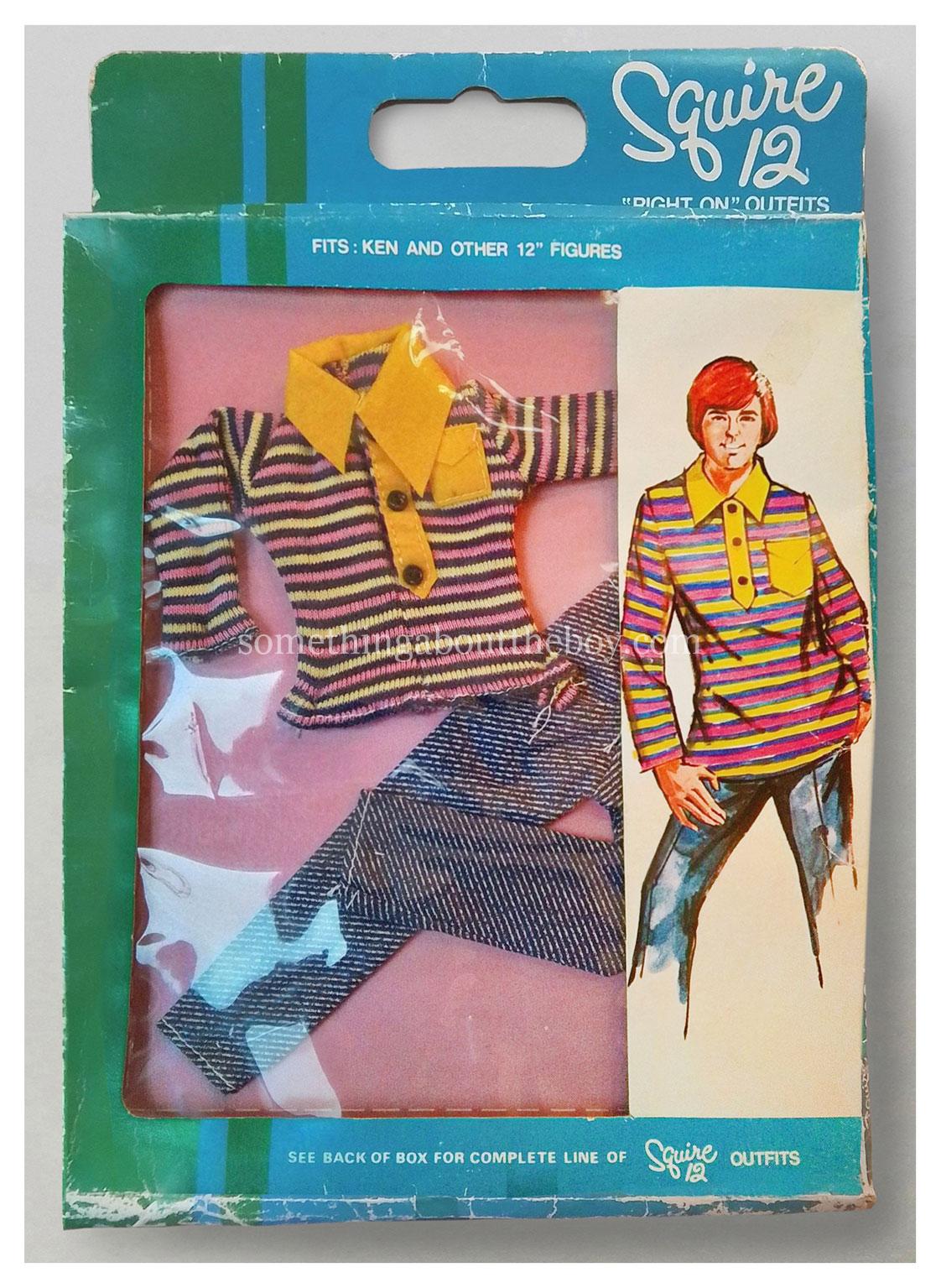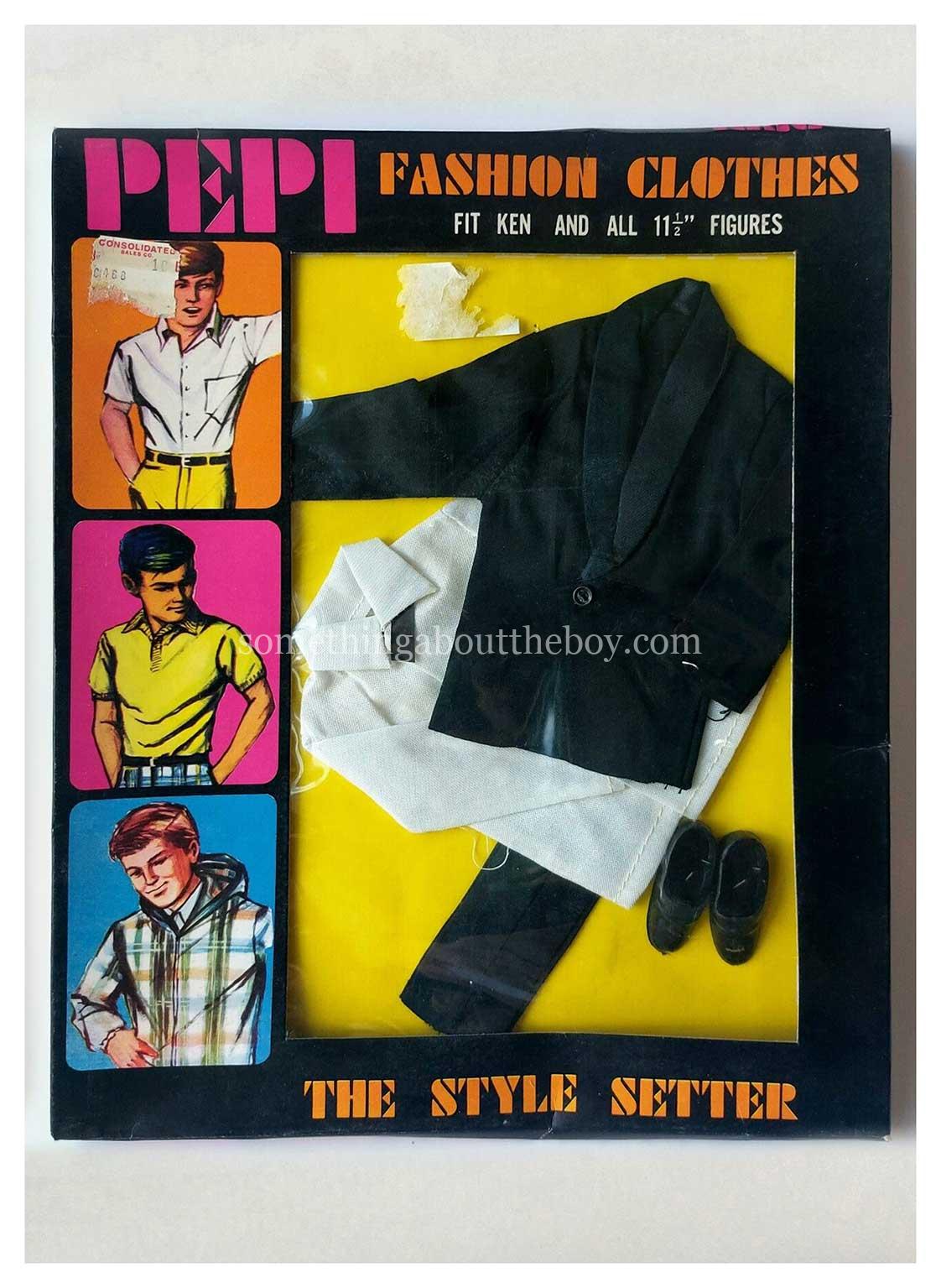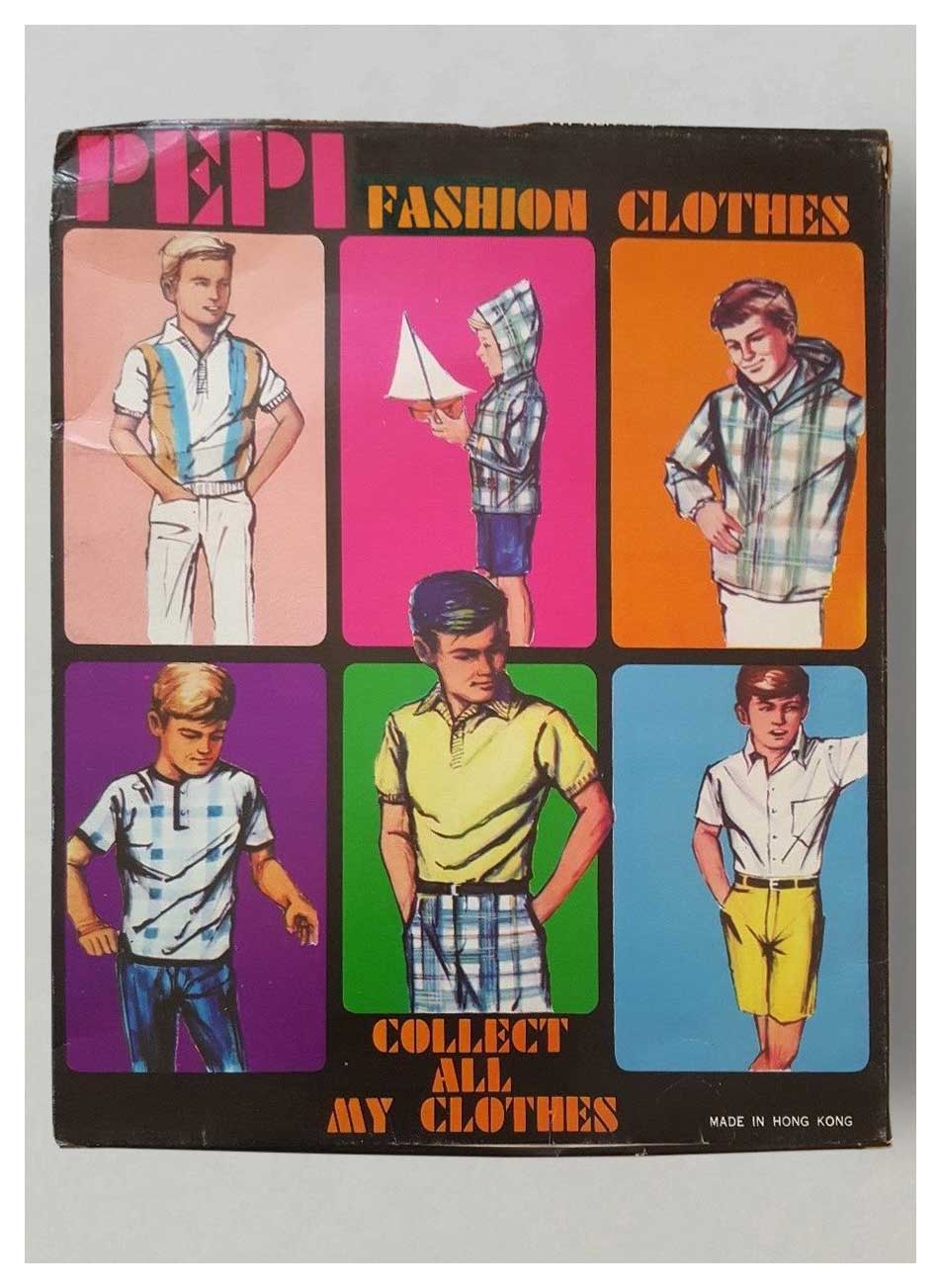It didn’t take long for the clone companies to catch up with Mattel, and by 1971 clone Kens and clothing in the new Mod-look dimensions were readily available. While most US department store catalogues still sold the genuine Mattel Kens, many of them now offered this cheaper clothing, usually produced in Hong Kong. Occasionally a clothing set is offered together with a Ken doll at a reduced price, but mostly the clothing is sold independently “for Ken or similar 12″ doll”. Sears seems to be the only exception – Mattel worked with Sears throughout the 1970s, producing exclusive clothing and gift sets.
Ultimately it was this mass of cheap clone clothing from Hong Kong which was responsible for Mattel’s own decline in quality. Forced to compete, they moved production from Japan to Korea in 1972. They introduced their own cheap line called Best Buy Fashions, but even the supposedly high-end range of Get-Ups ‘N Go fashions were very poorly-made compared to the earlier Japan-produced clothing.
I don’t really collect clones myself so most the images below have been sent to me by collectors or are taken from past online autions, for which I do not claim to own copyright.

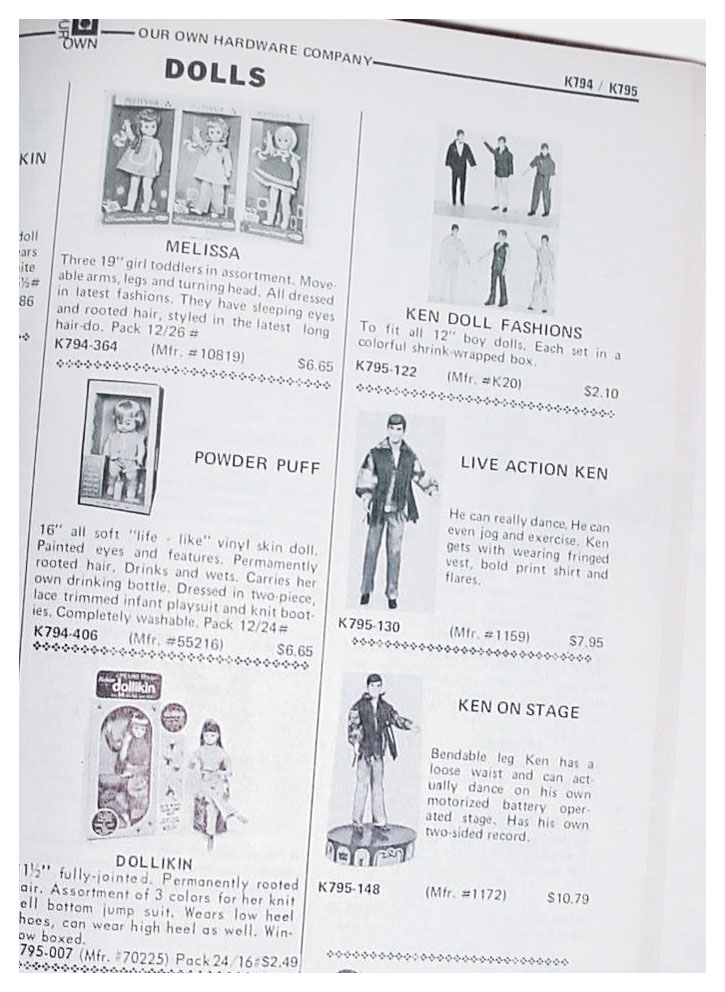
The Montgomery Ward Christmas catalogues for 1971 and 1972 sold clone clothing which was also available by Mego. The 1971 trench coat outfit was sold as Tan Trench, the middle outfit (came in many colour variations) as Cool Cardigan, and the denim suit as Captain Cool for Mego’s 1971 Richie doll (see further below). The two other outfits from the 1972 Ward Christmas catalogue (below right) had been packaged in 1970 as Bachelor 1 and Eligible Receiver for Mego’s Joe Namath doll.
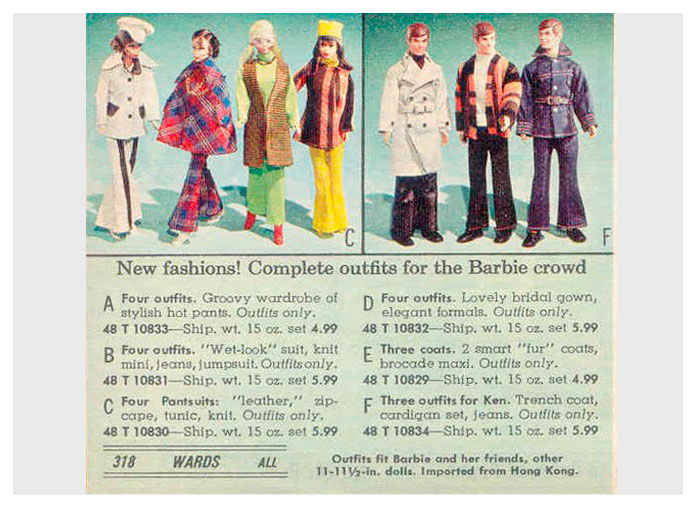
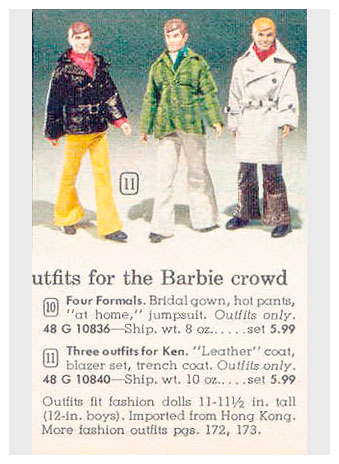
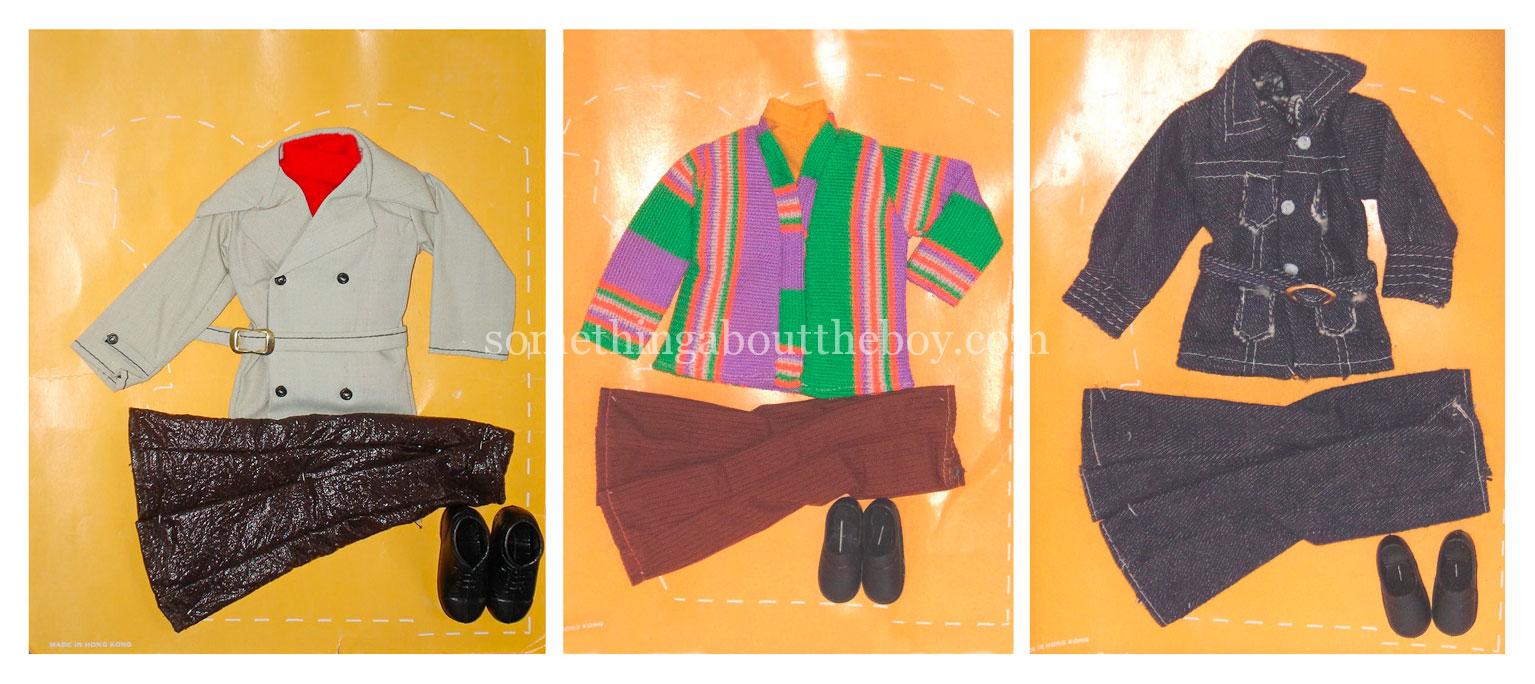
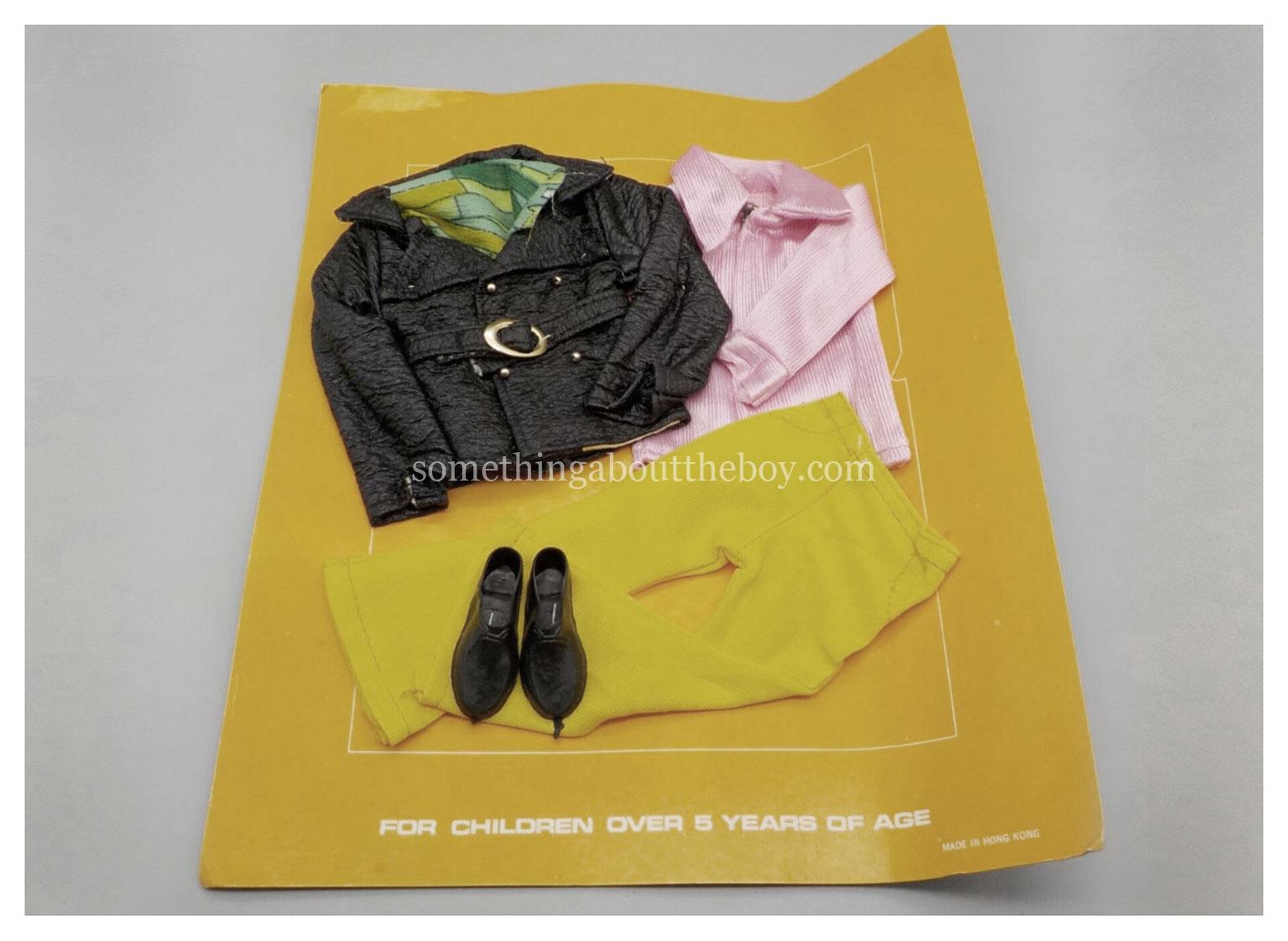
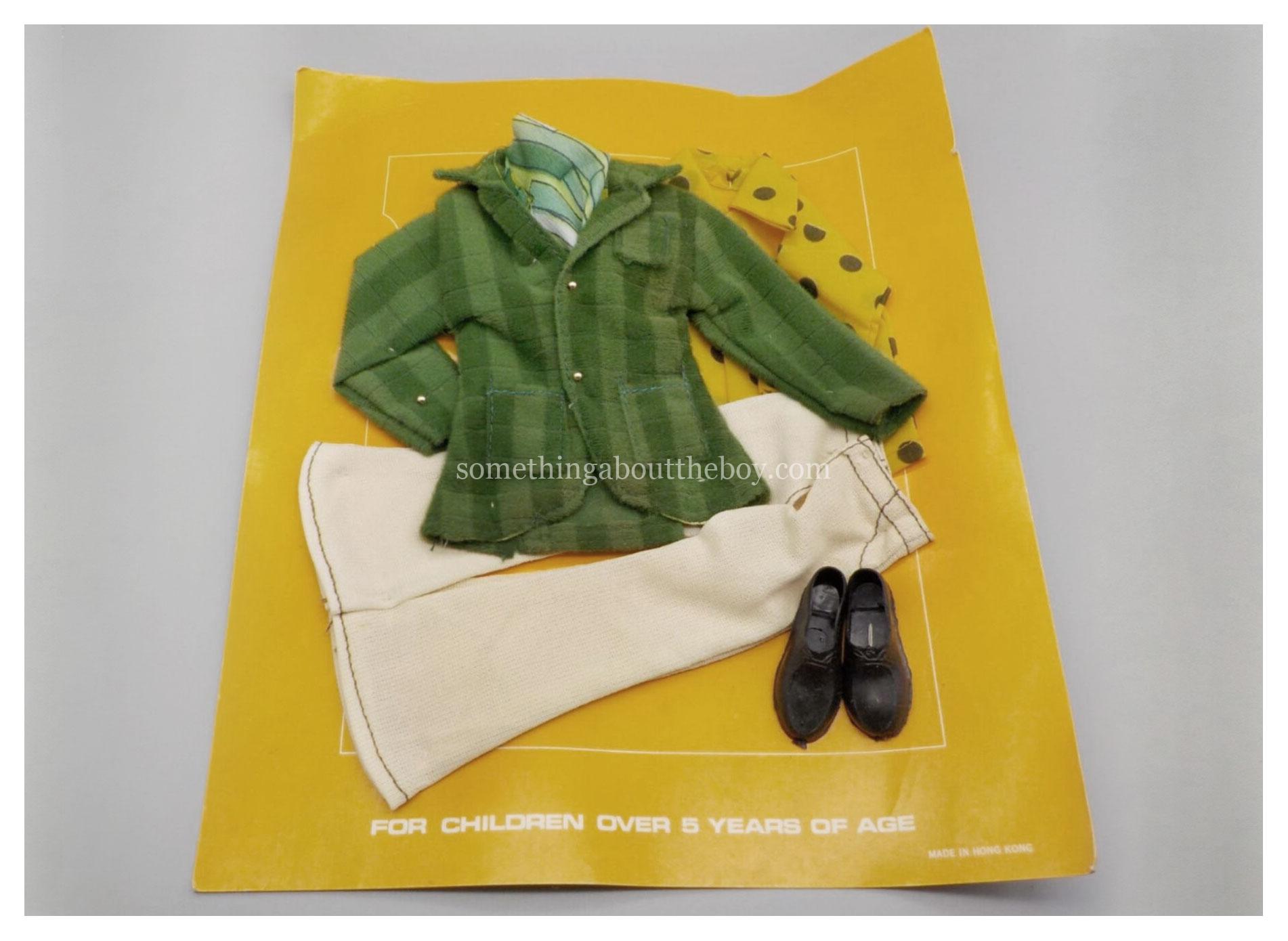
JOE NAMATH & HIS MOD-ABOUT TOWN WARDROBE BY MEGO
Between 1970 and 1971 Mego produced the Broadway Joe Namath doll and his Mod-About Town Wardrobe. The outfits are great, well-made and perfect examples of high Mod fashion. He is one of the very few male dolls ostensibly aimed at boys to come with a purely fashion wardrobe. As with Ken, these outfits were available with some great variation fabrics.
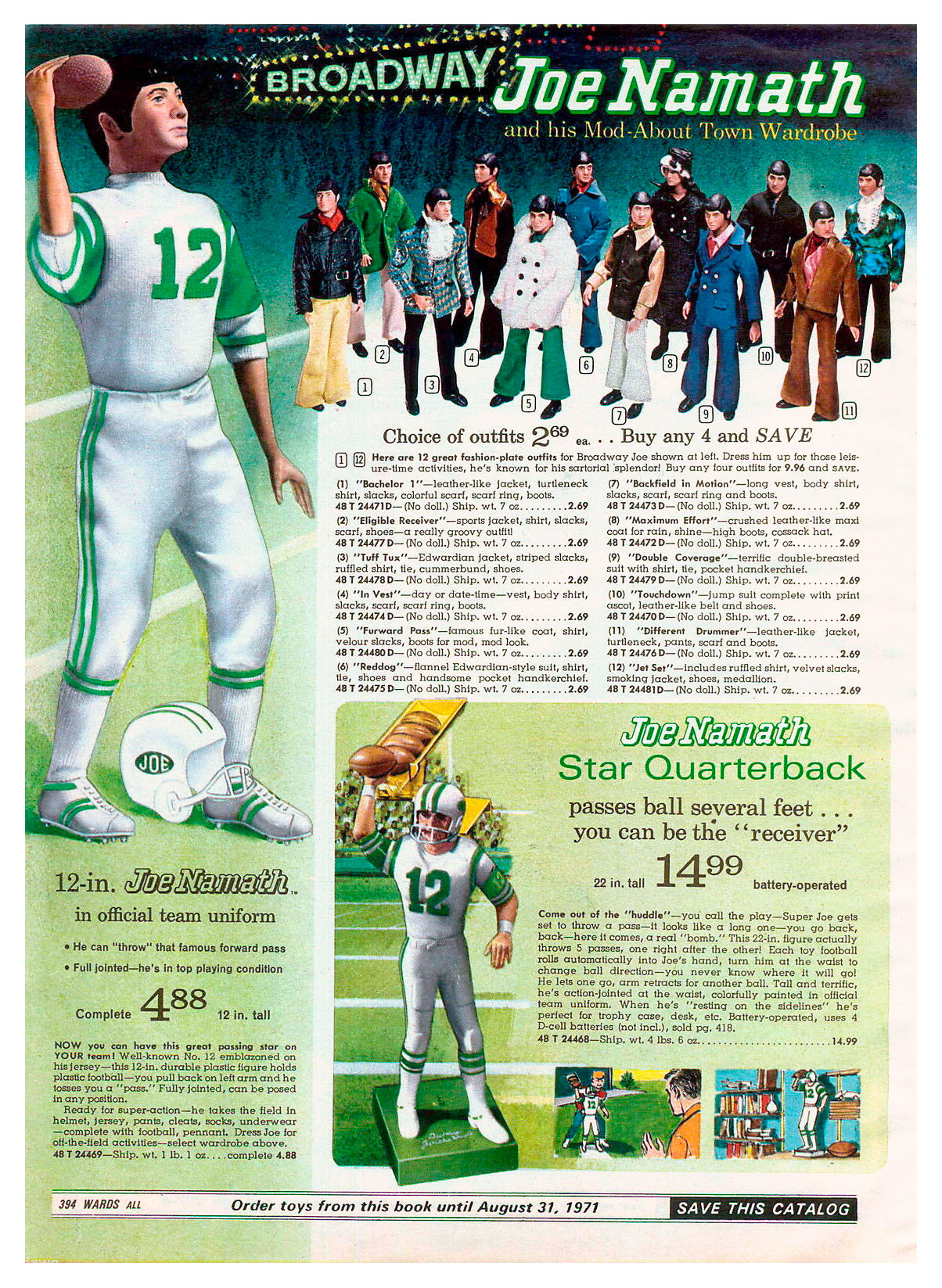
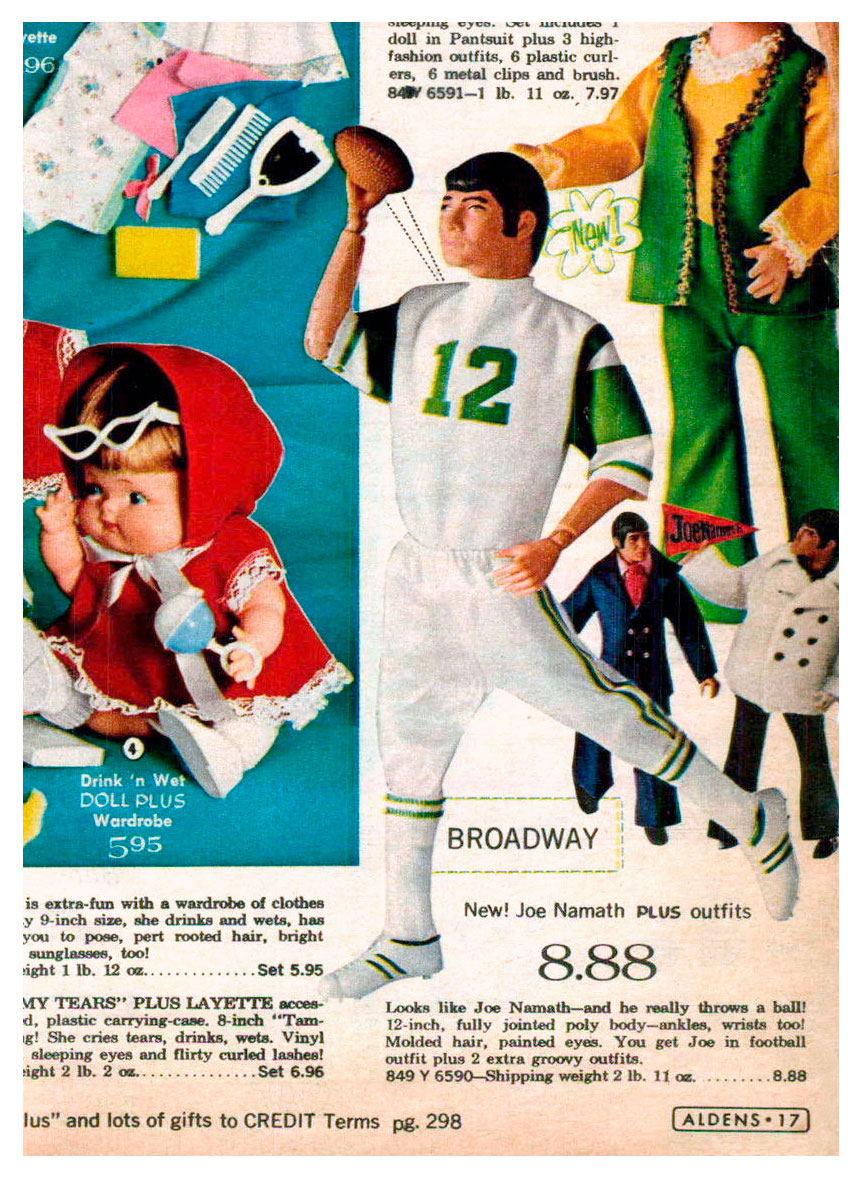
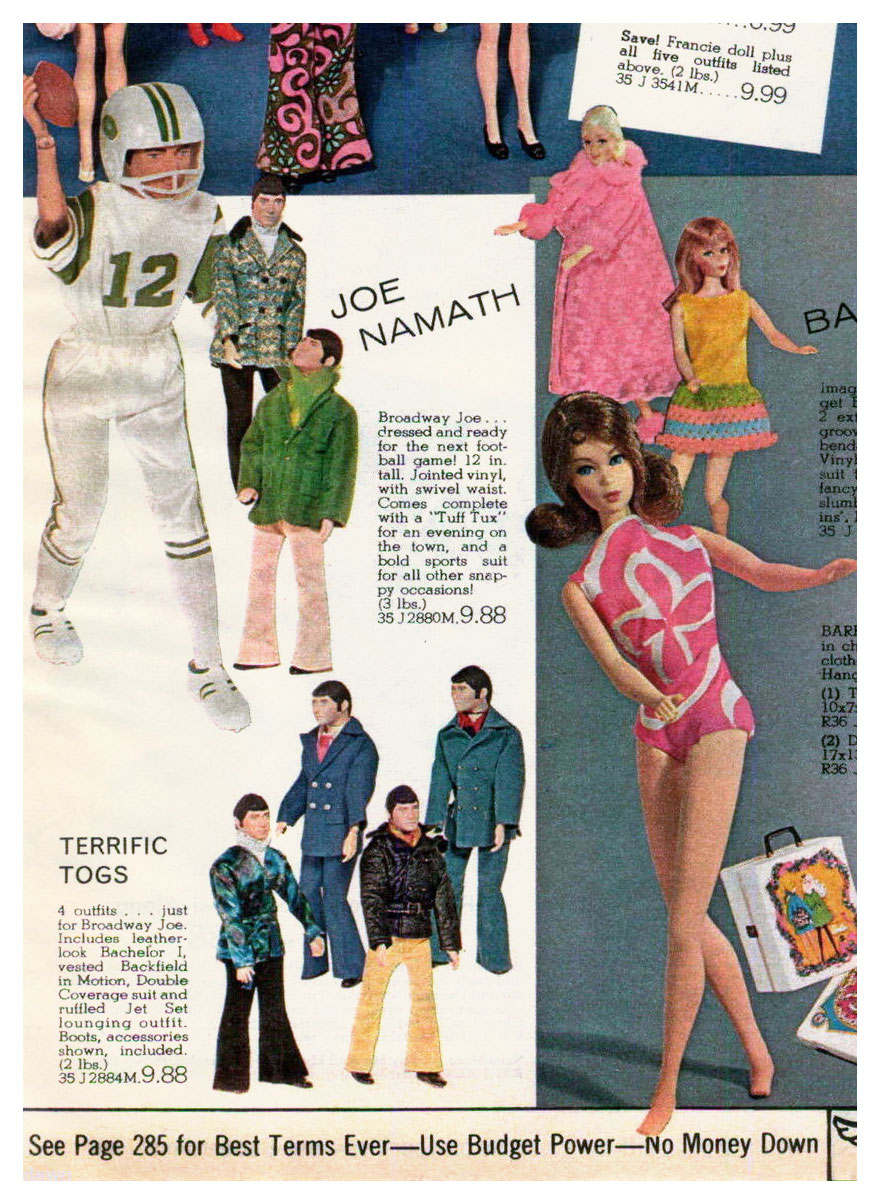
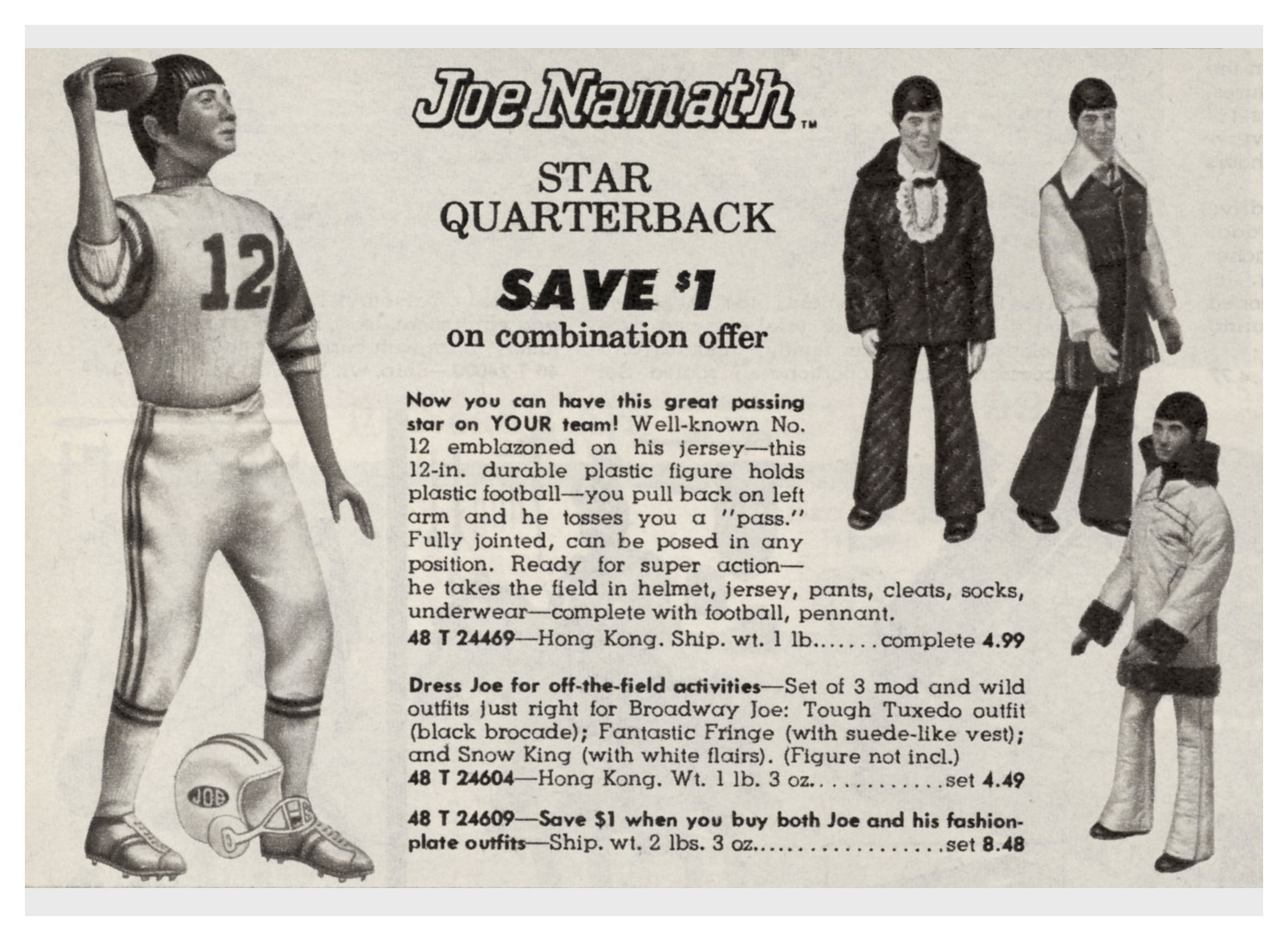
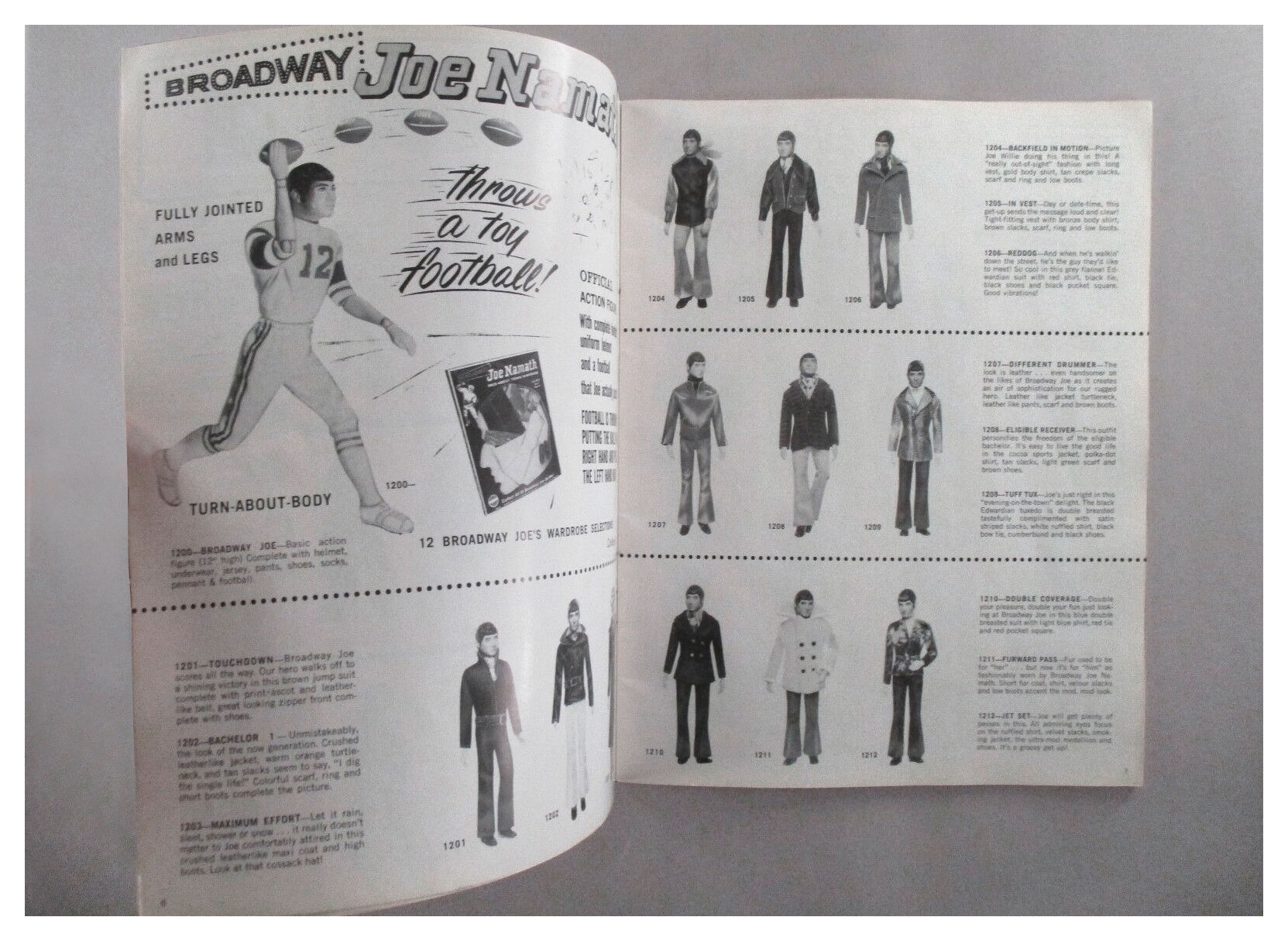
Click on the photo below left to see all 13 outfits.
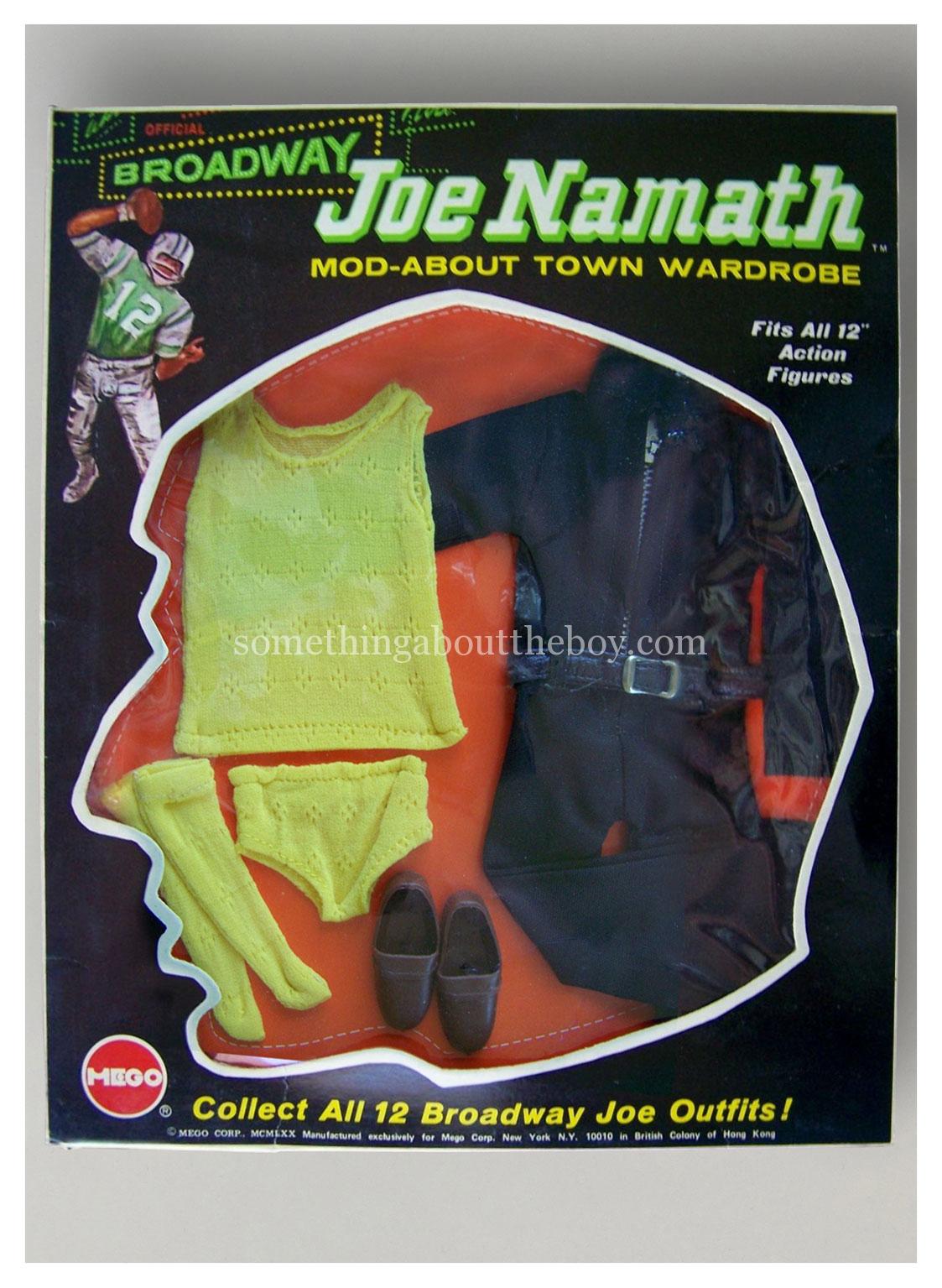

RICHIE BY MEGO / RICKY
Richie by Mego is dated 1970 on his back (the mold was originally used for Mego’s 1970 Fighting Yank doll), and the packaging is dated 1971. His wardrobe is an extension of Joe Namath’s range really (also produced by Mego). The outfit Snow King even appears packaged for Richie and as a Joe Namath outfit in the 1971 Montgomery Ward Christmas catalogue. Richie has a kind of light flocking on his molded head/hair. Rather than develop a unique and convincing-looking black doll, or even copy Brad, Richie (like many other clones) was simply available with the same head-mold in light and dark skin versions.
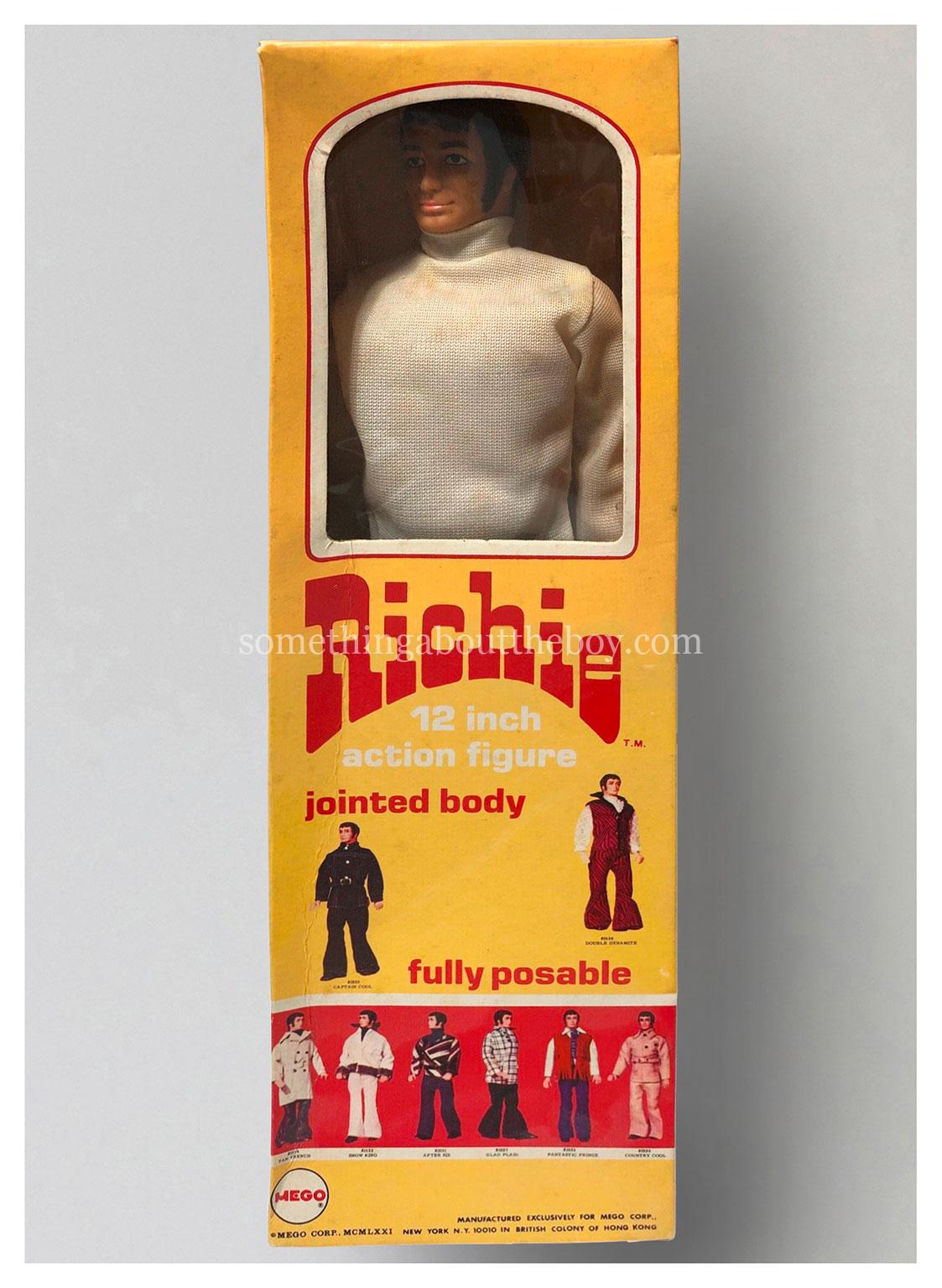
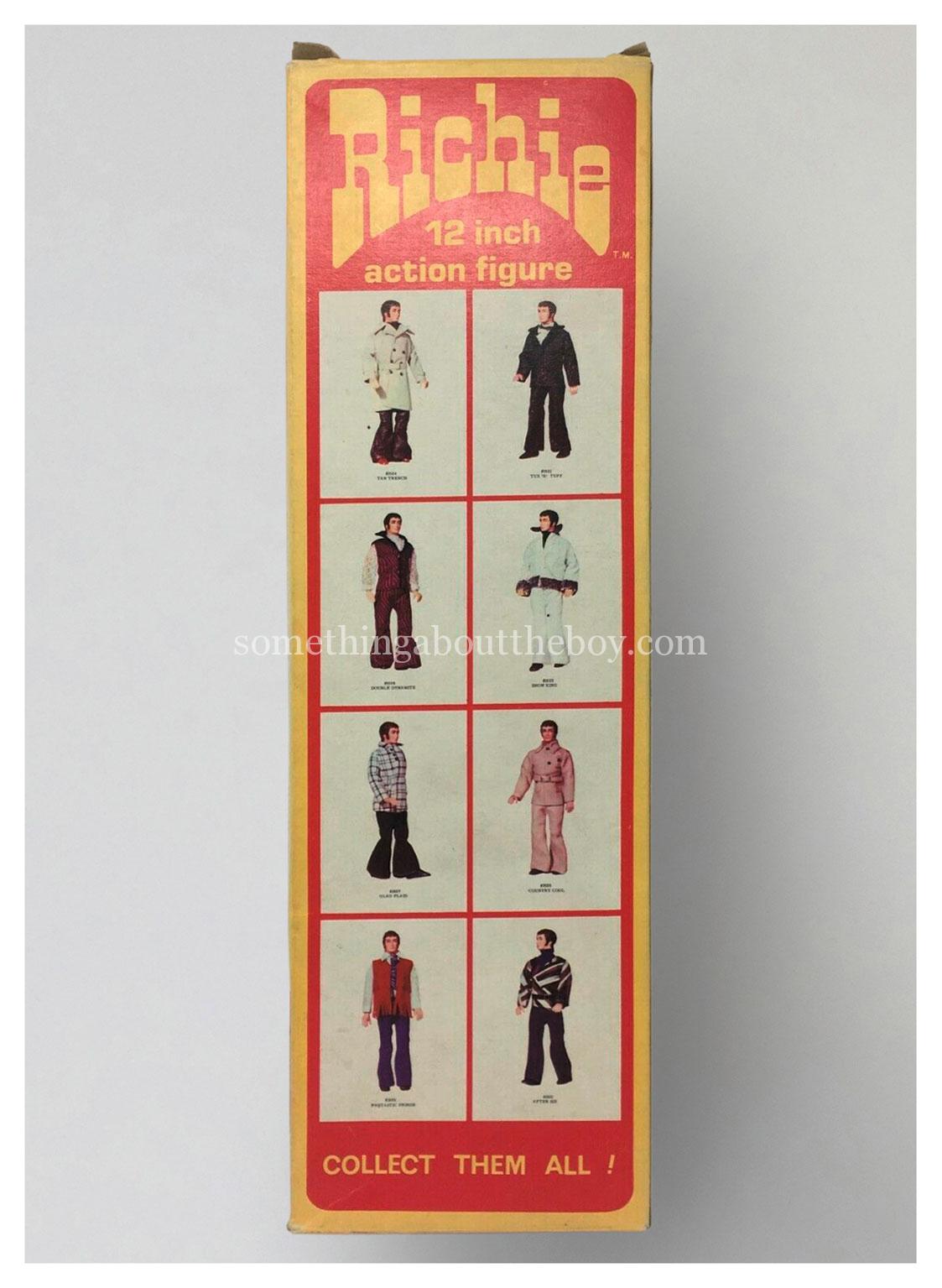
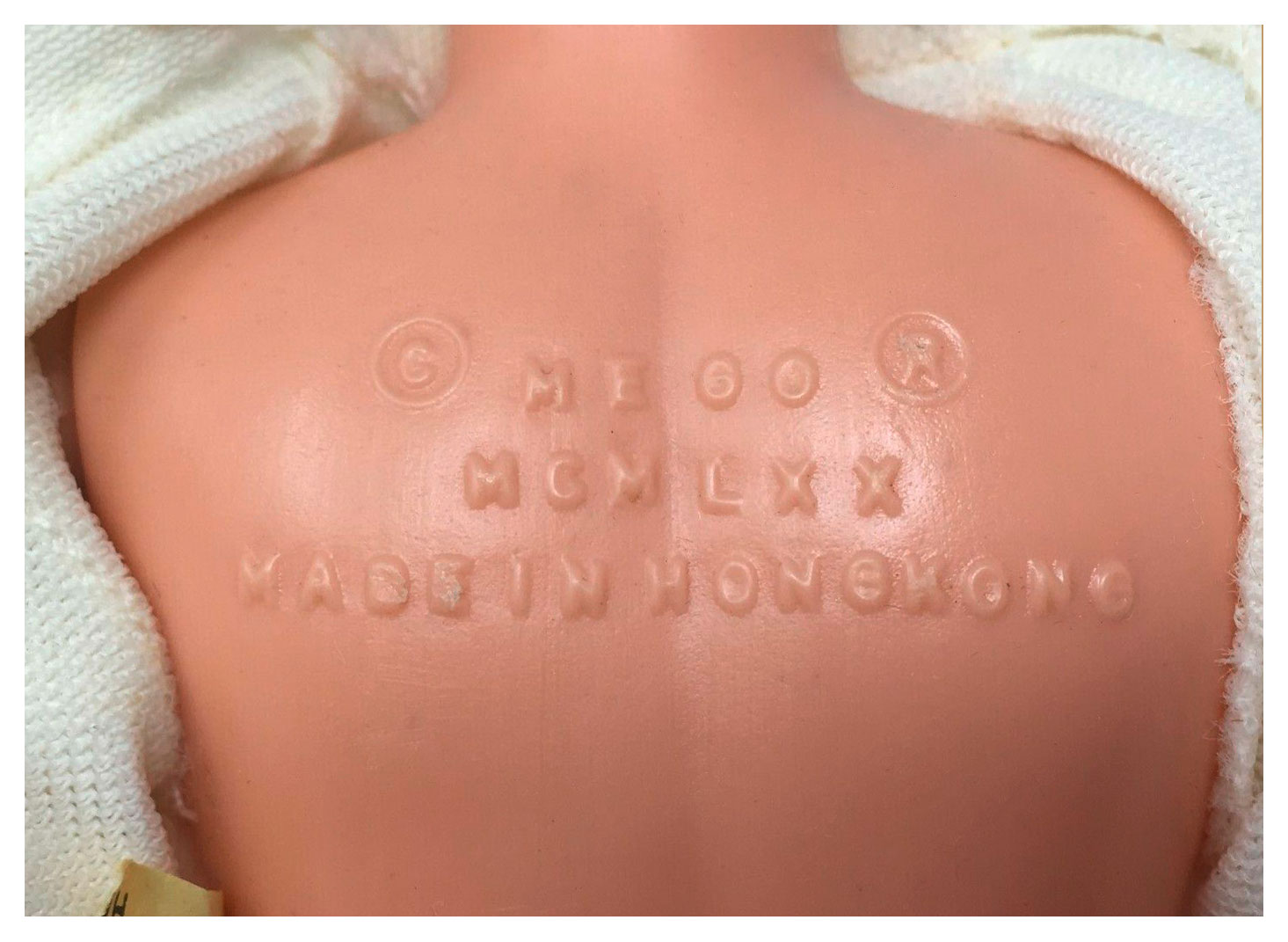
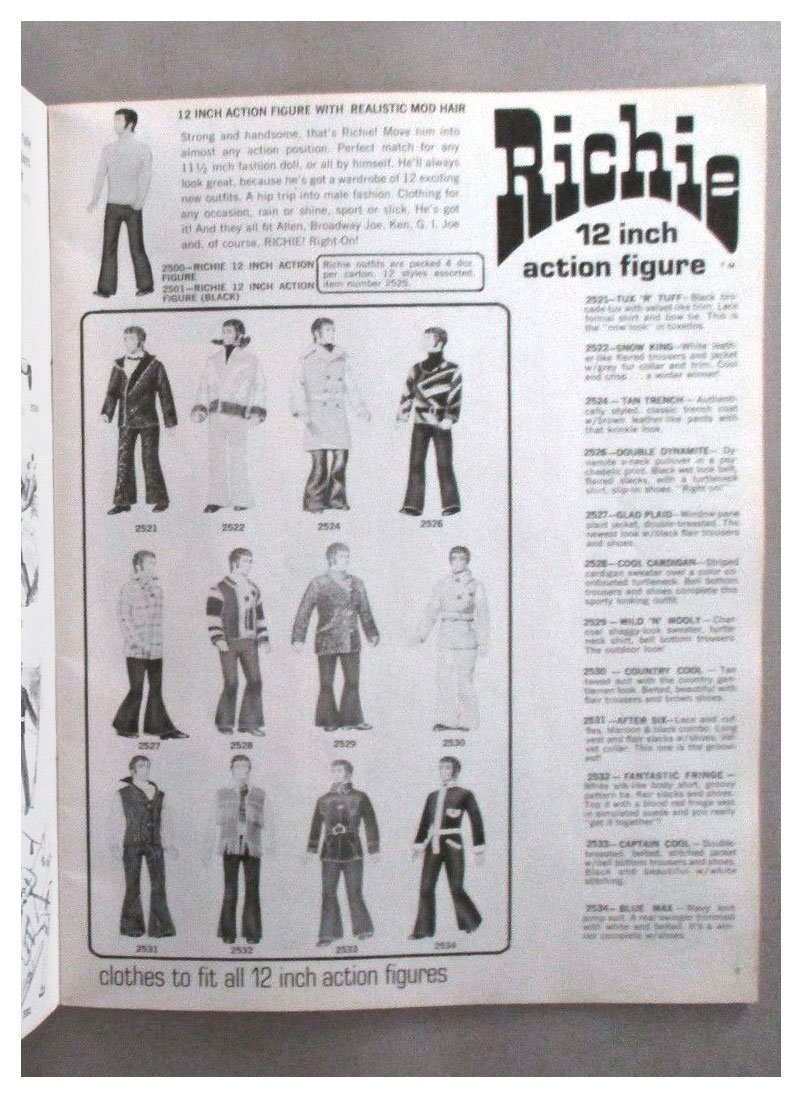

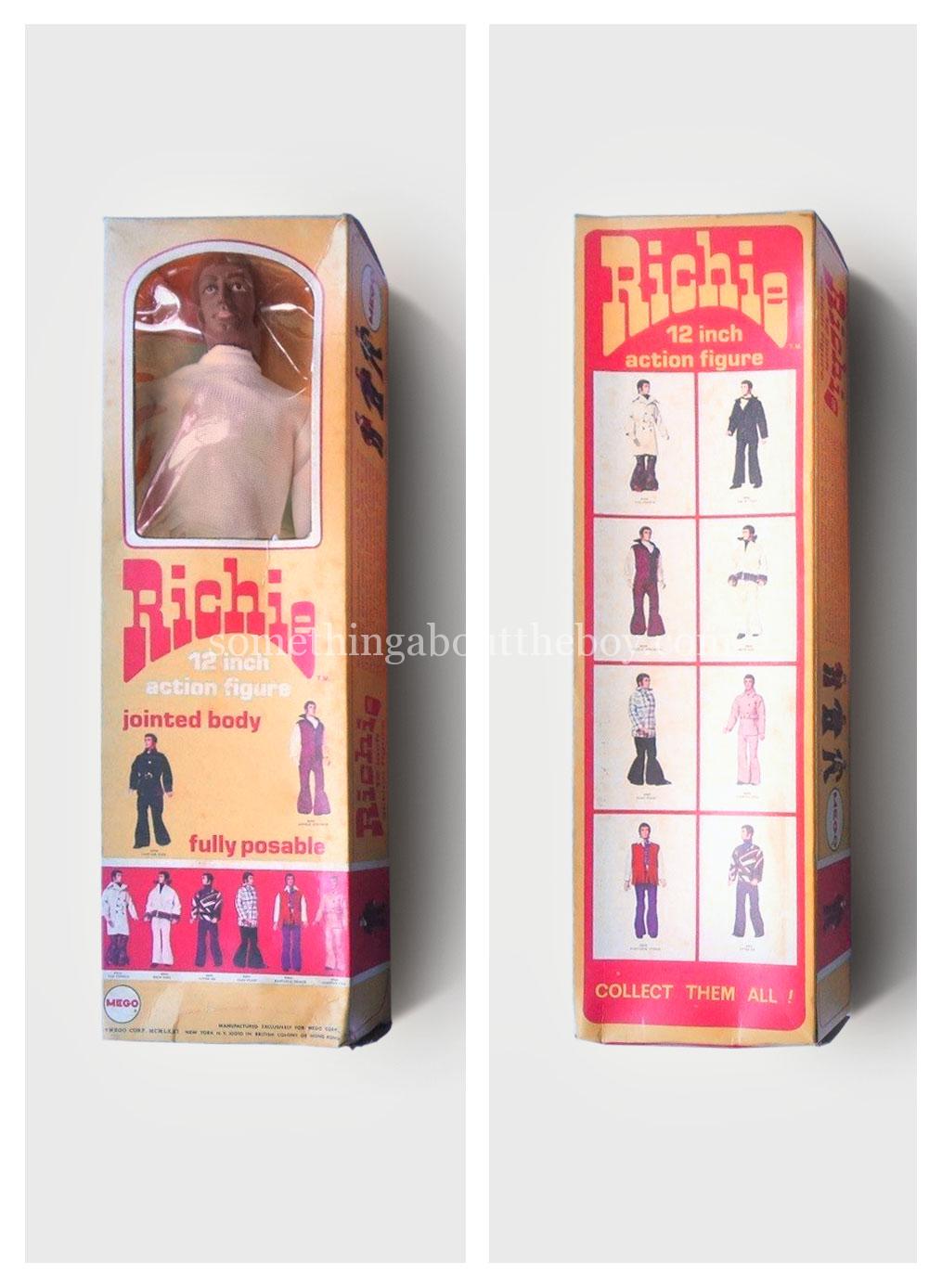
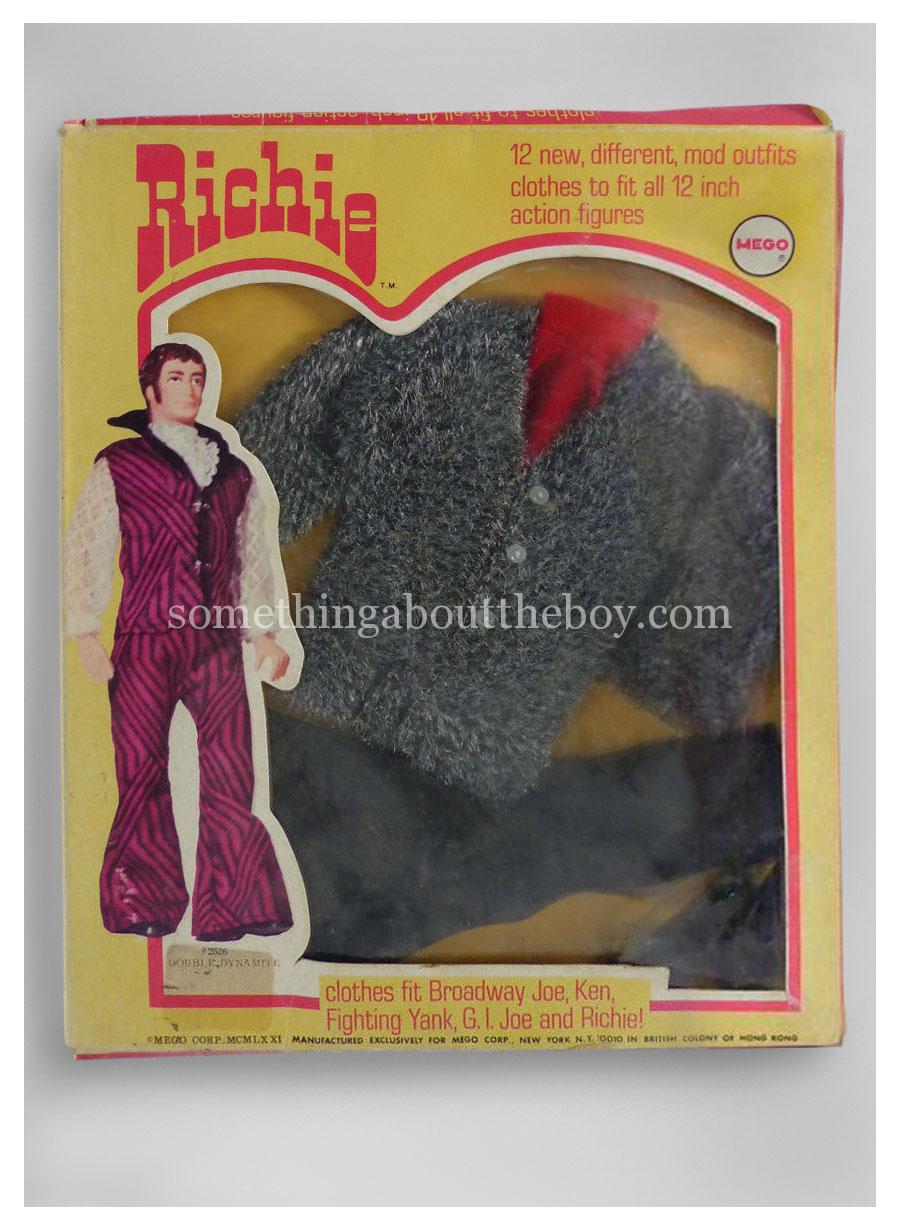
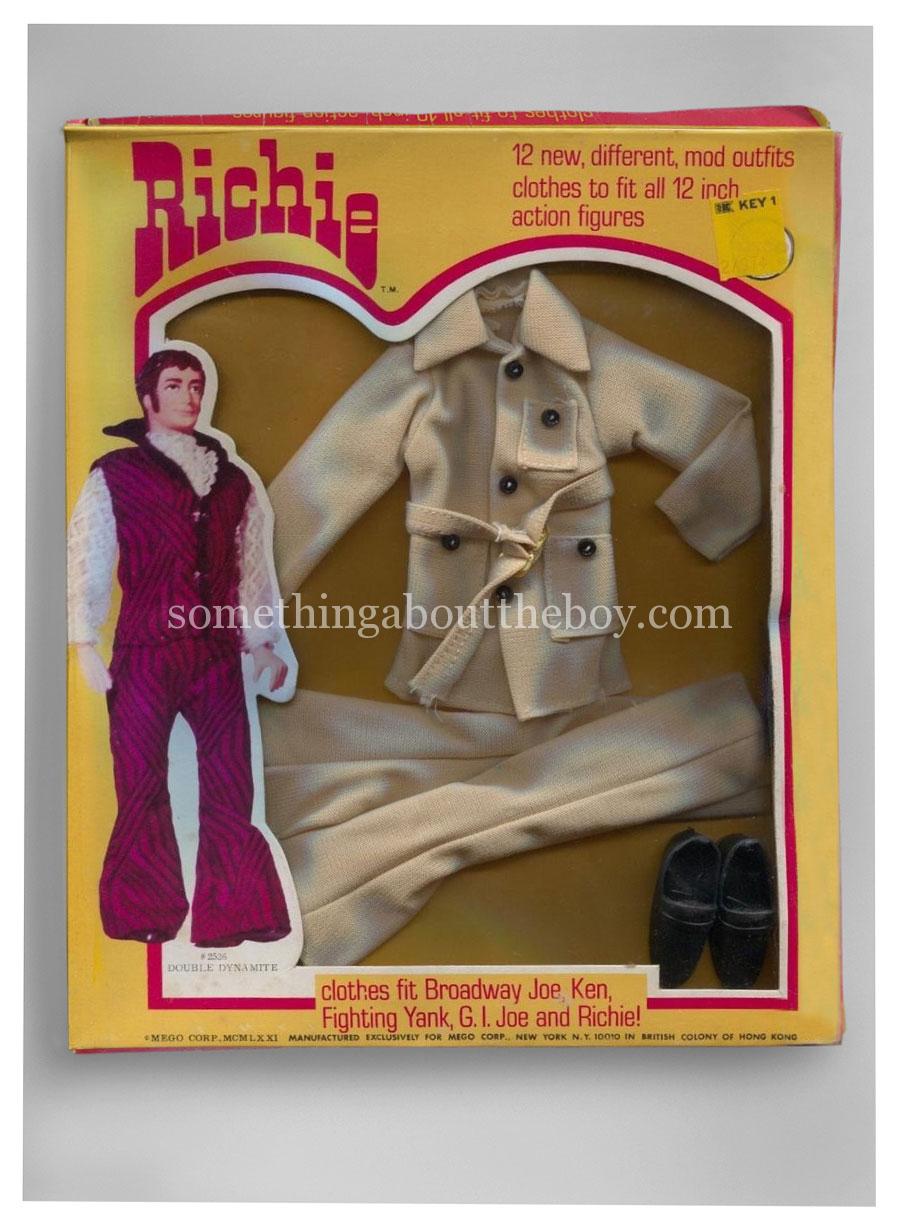
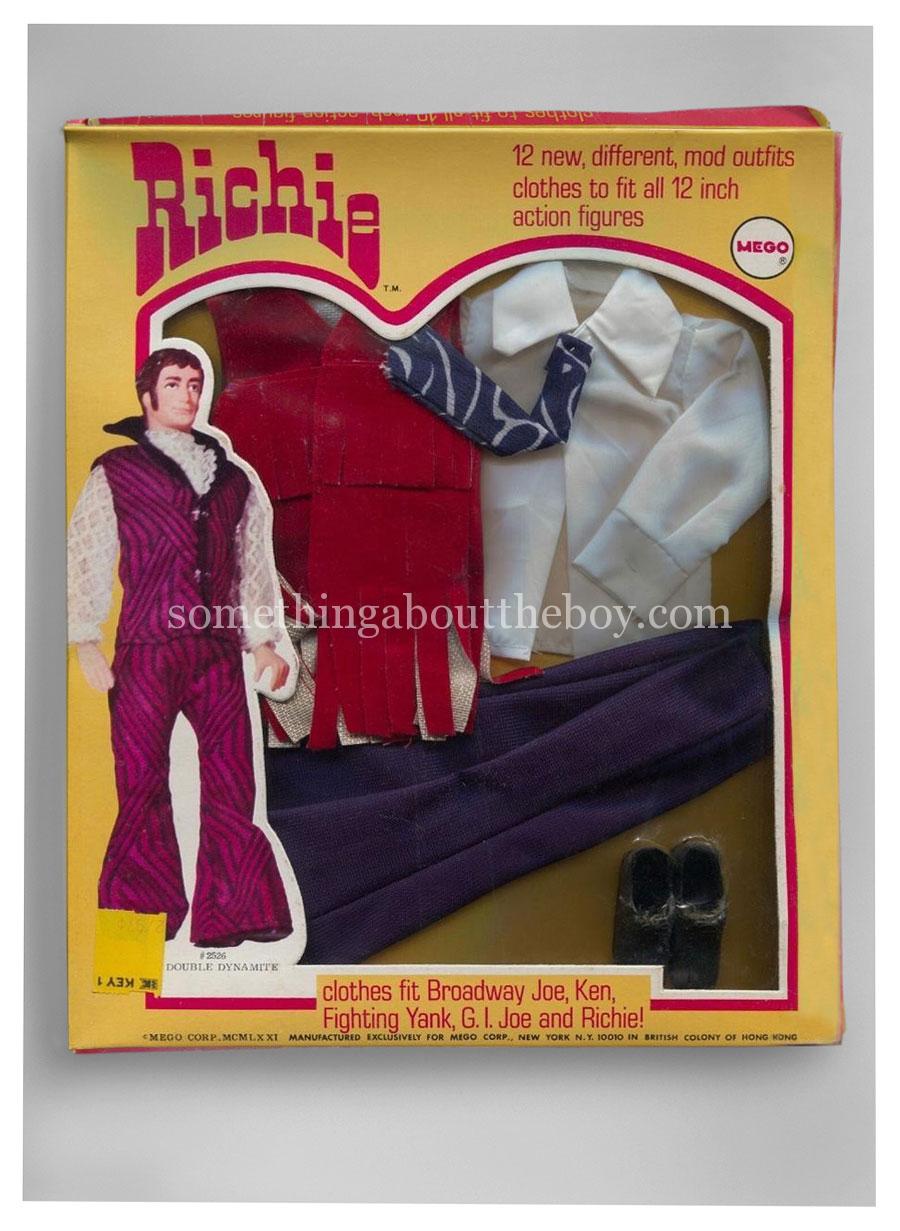
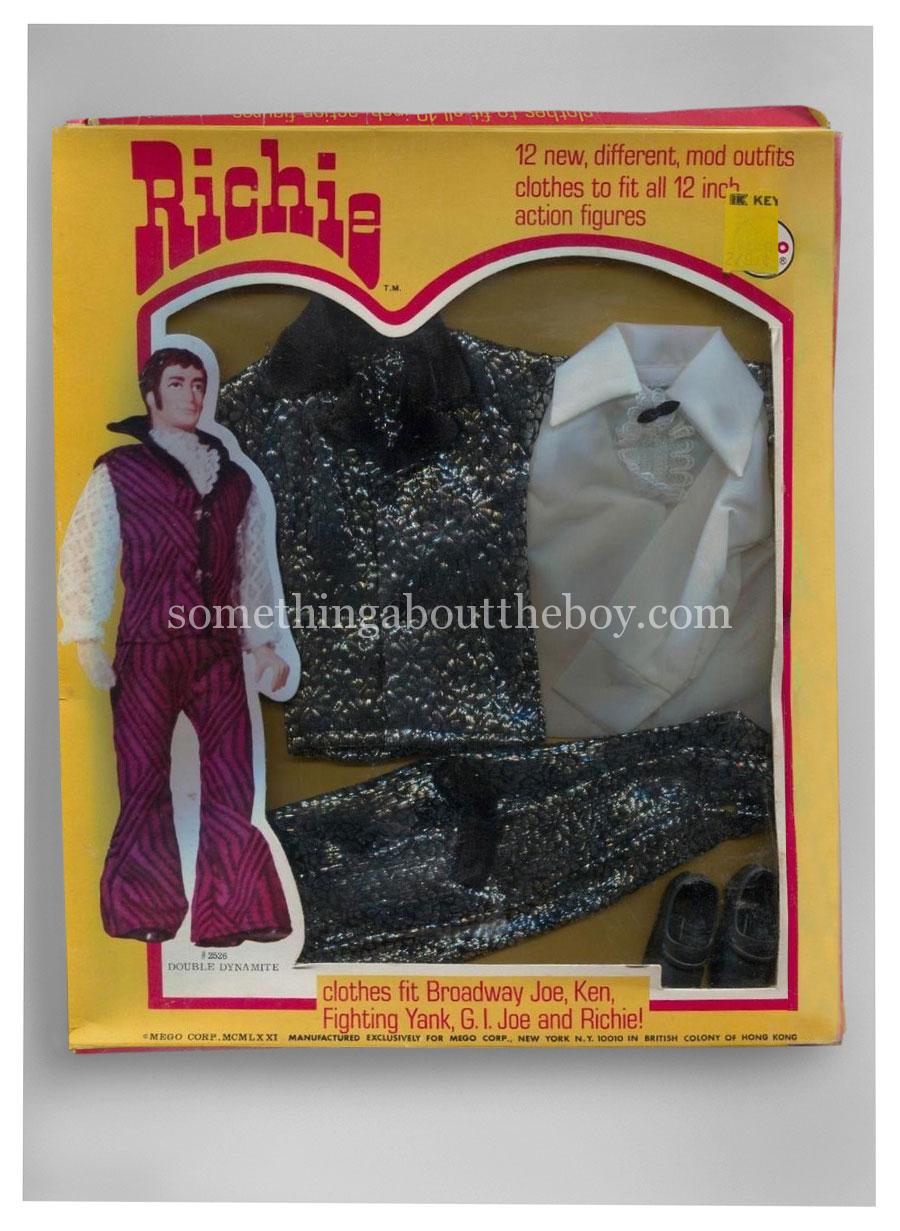
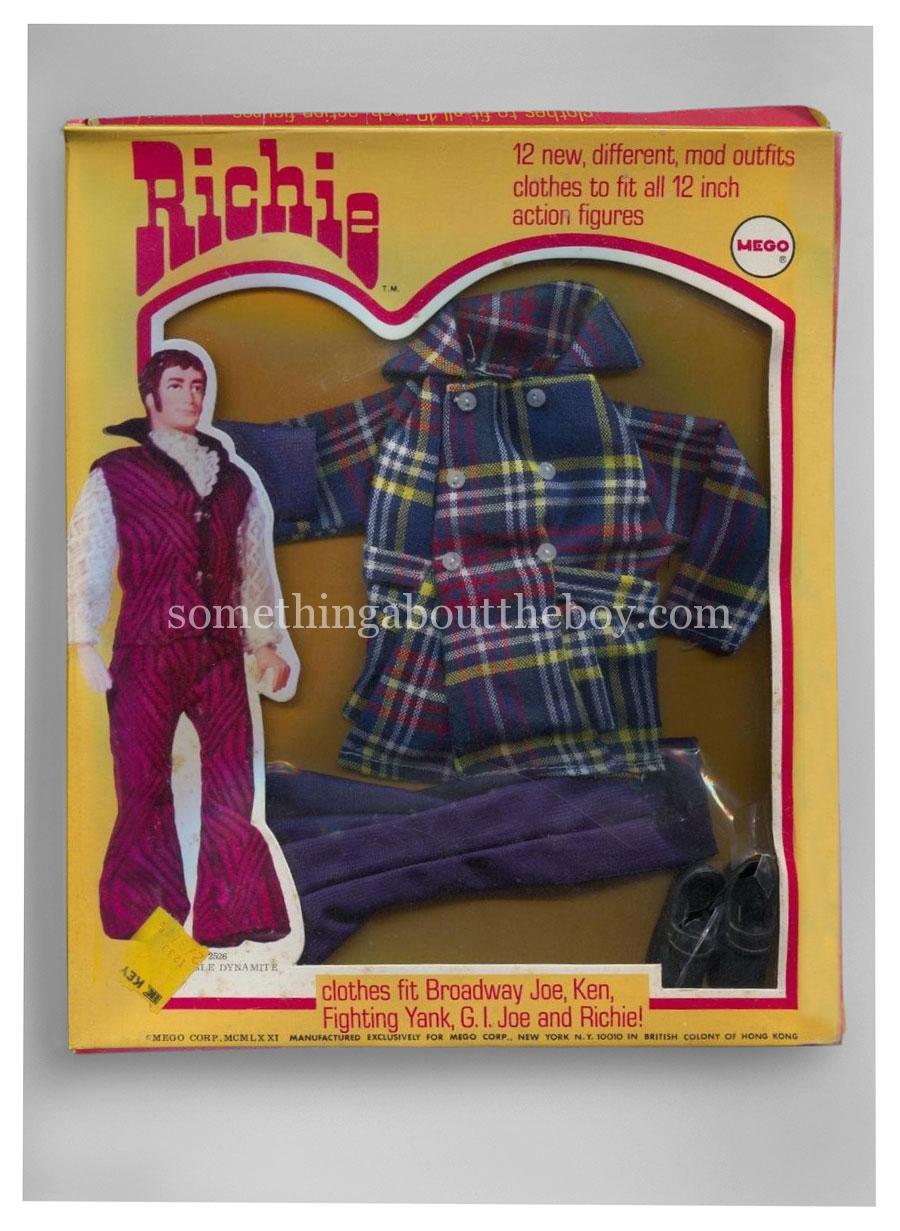
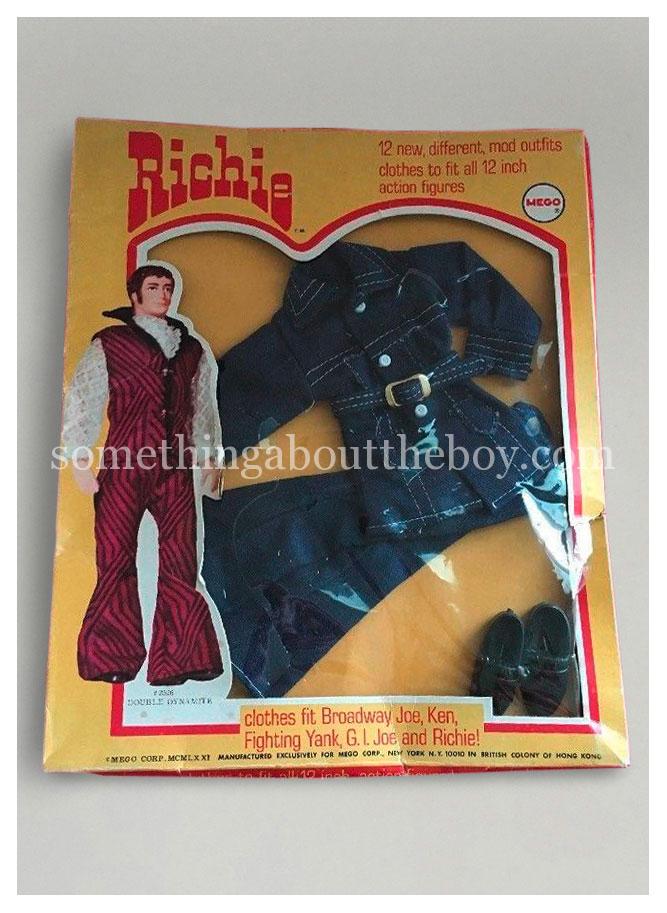

There is an almost identically-packaged clothing range for Ricky. The Mego logo doesn’t appear, so he was either a clone of Richie or the version of him as sold through one of the store catalogues. The 1972 Aldens Christmas catalogue sells him as Posin’ Adam (see further below), and he also appears in the Canadian Eaton’s Christmas catalogues of 1973-75.
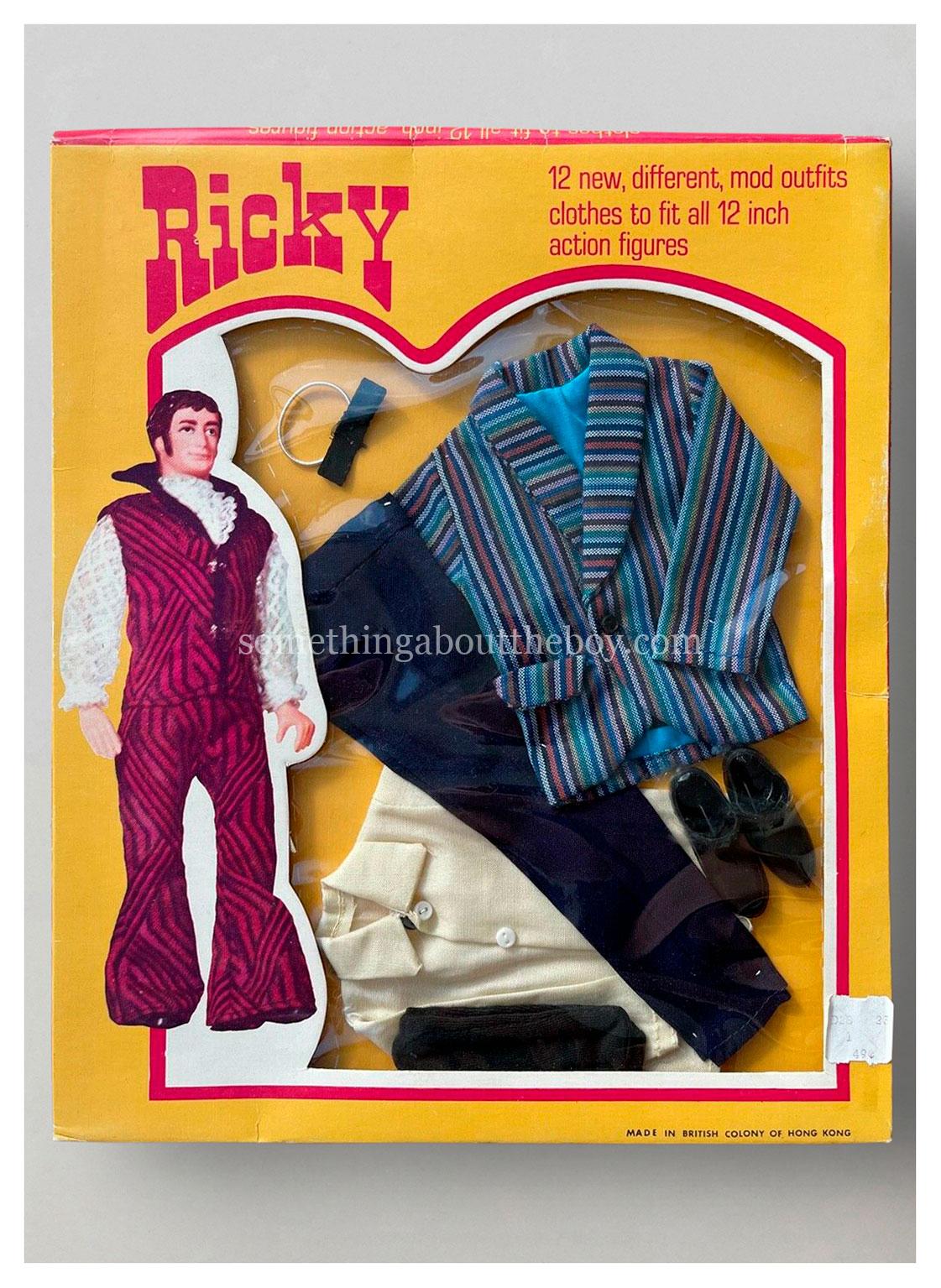
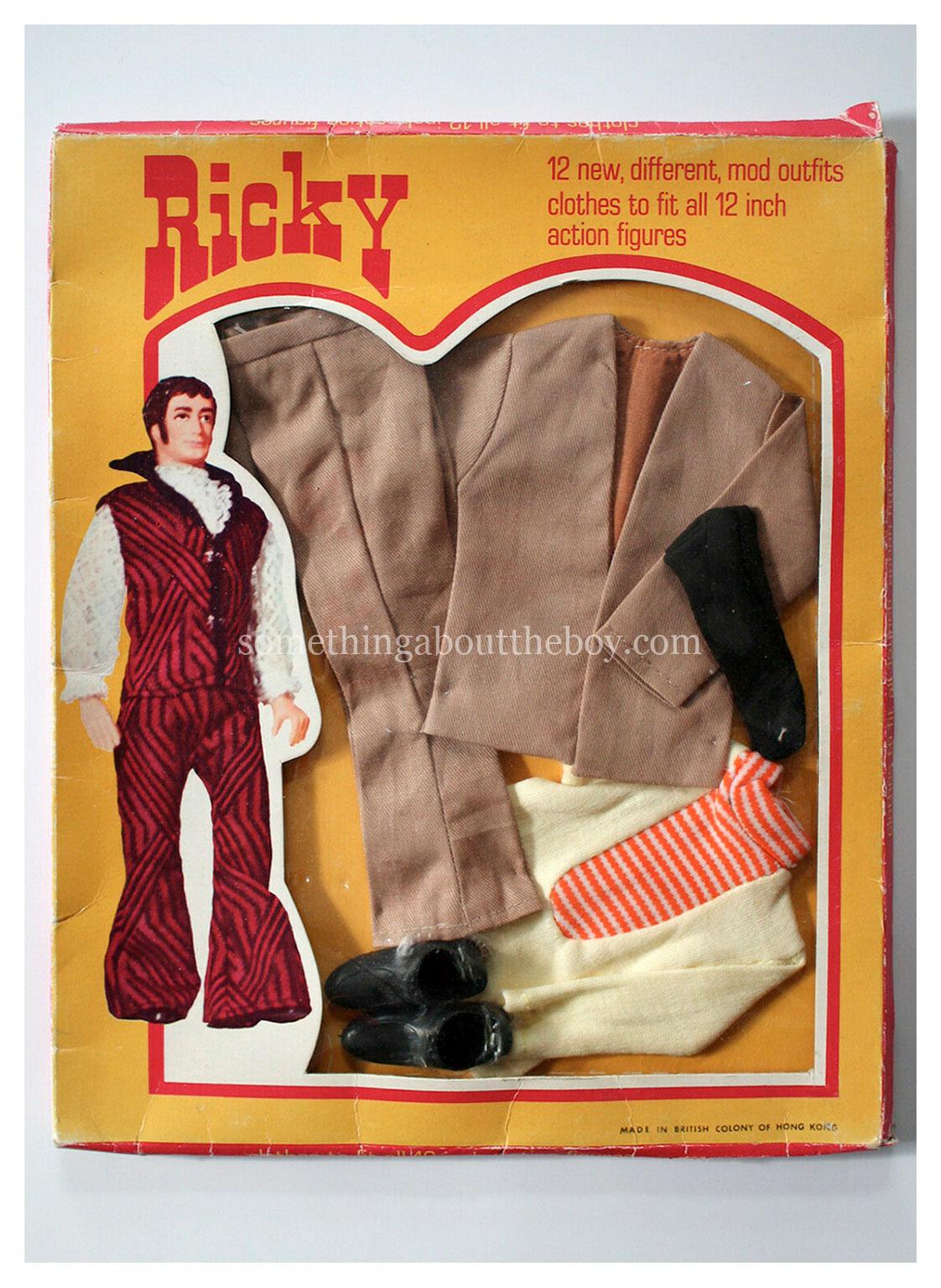
These other Ricky outfits seem to have no connection to the above, but must certainly have been sold around the same time. There are even rarer outfit sets with the name Dicky.
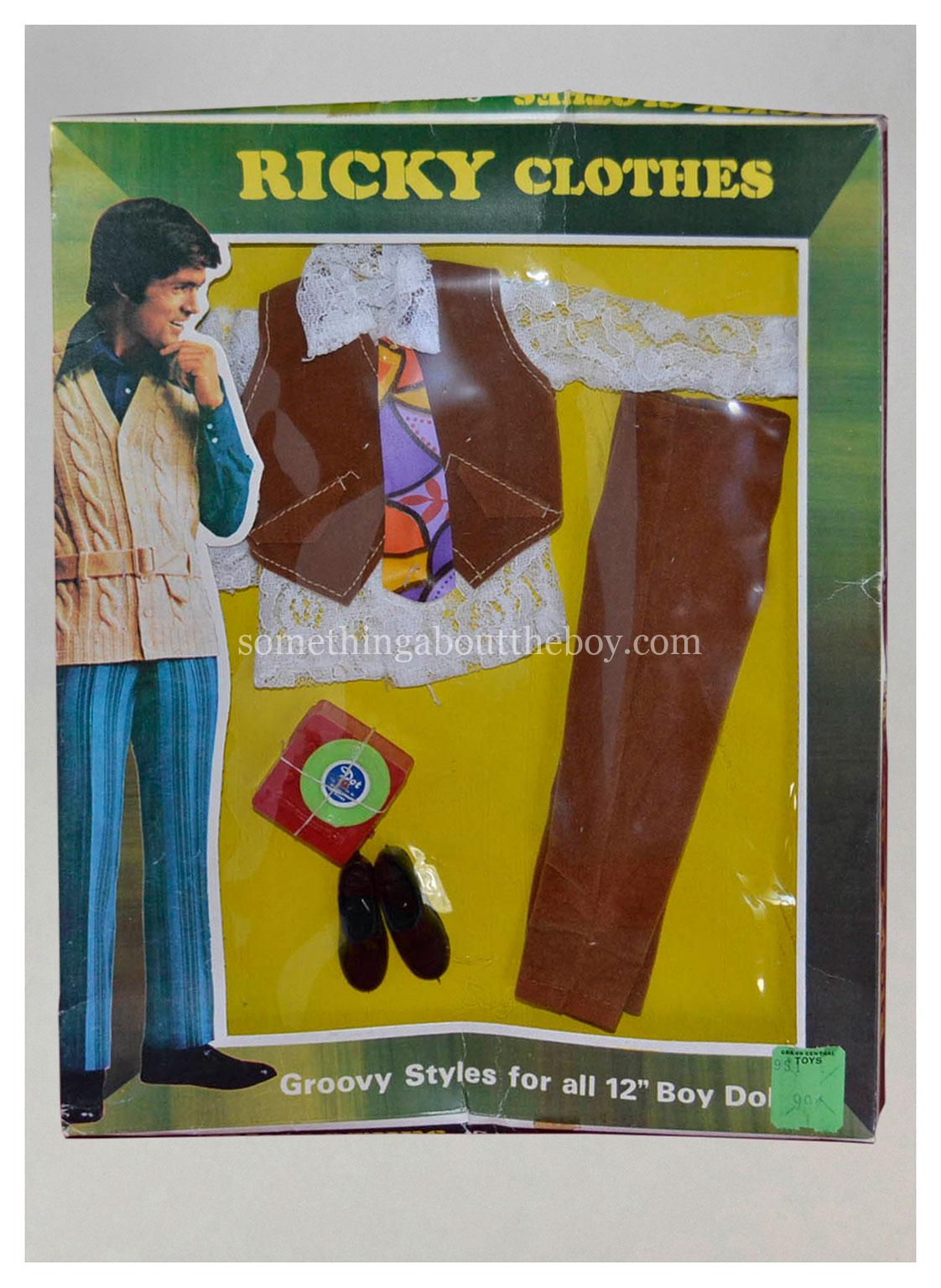
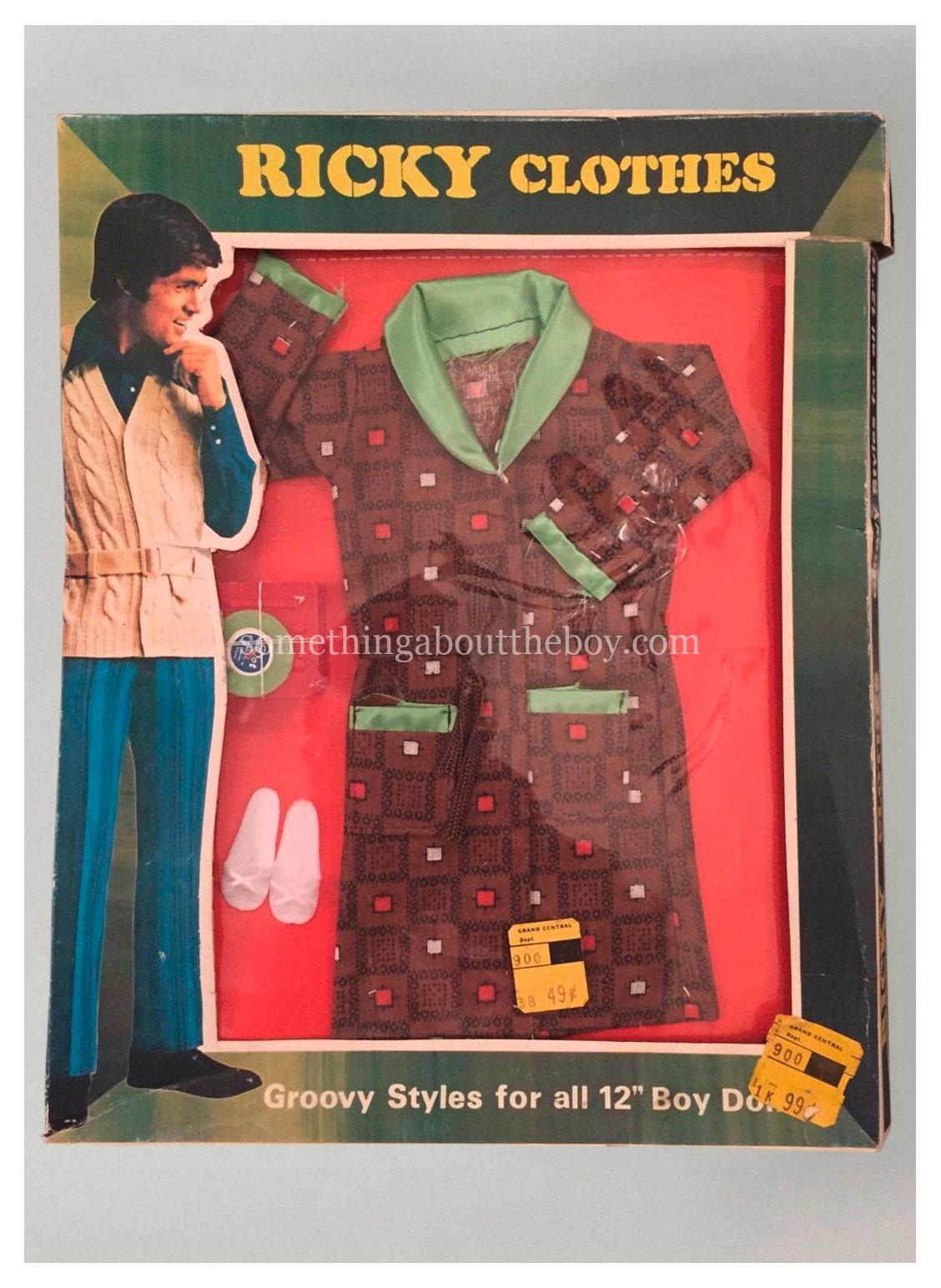
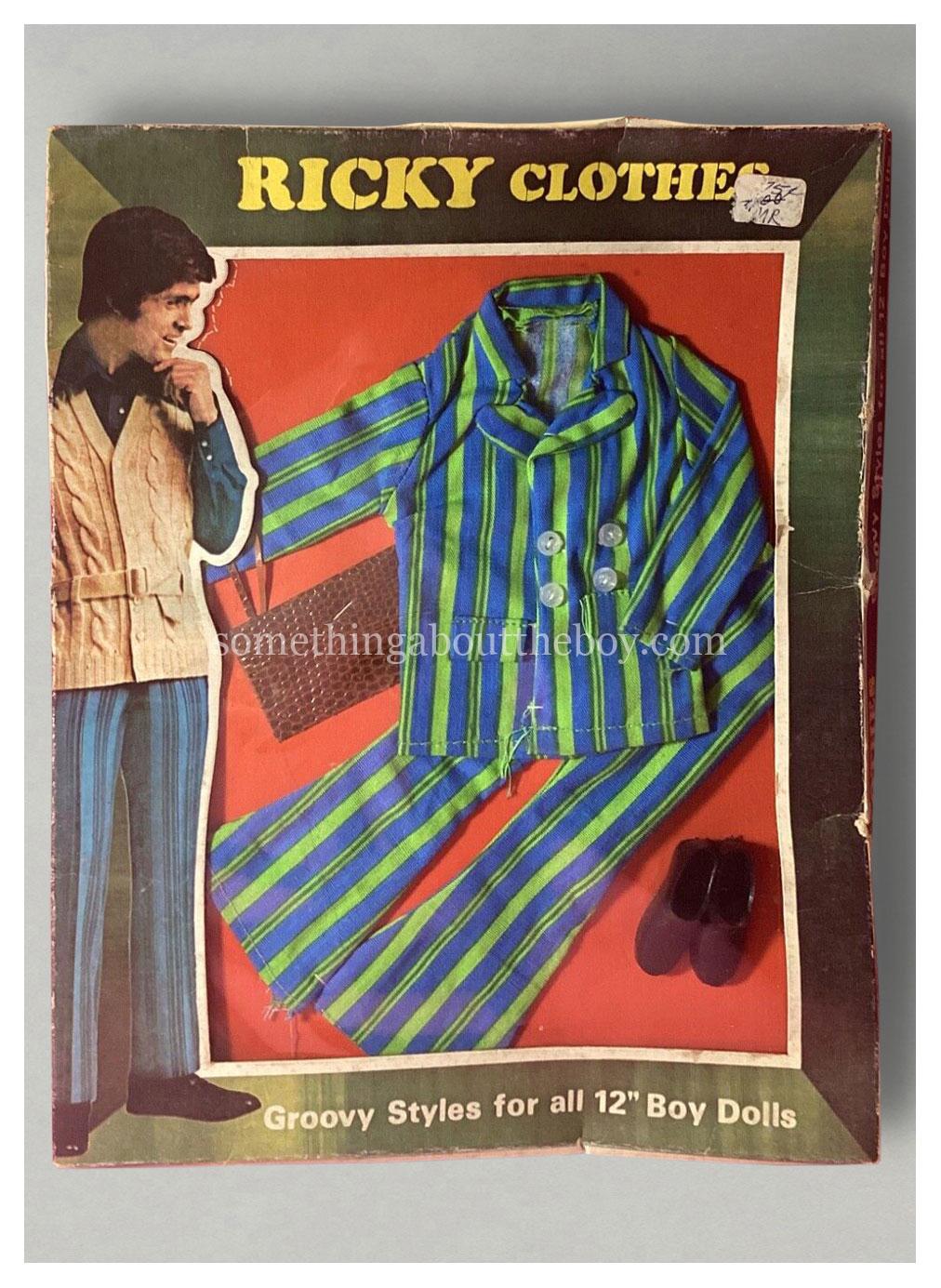

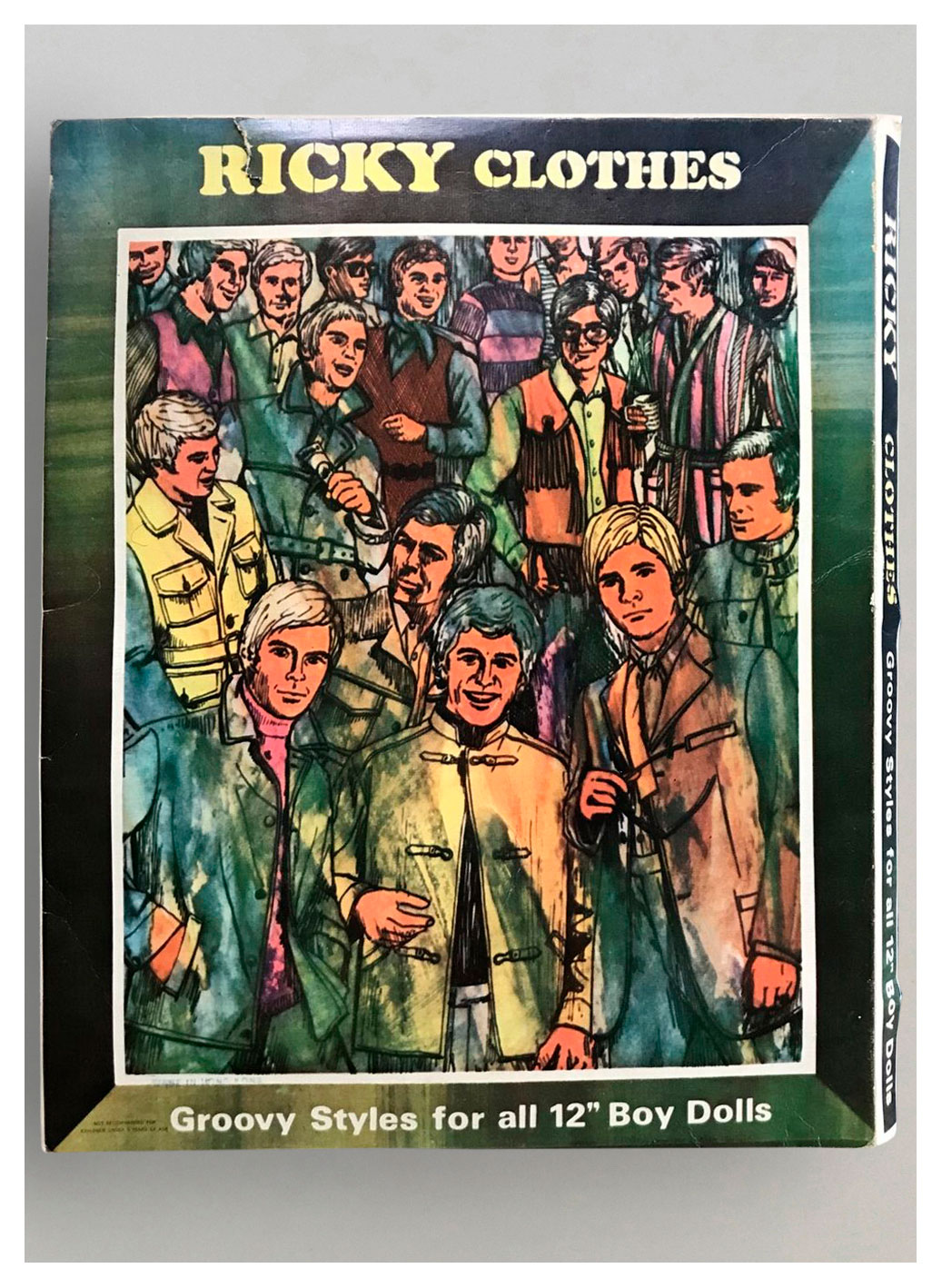
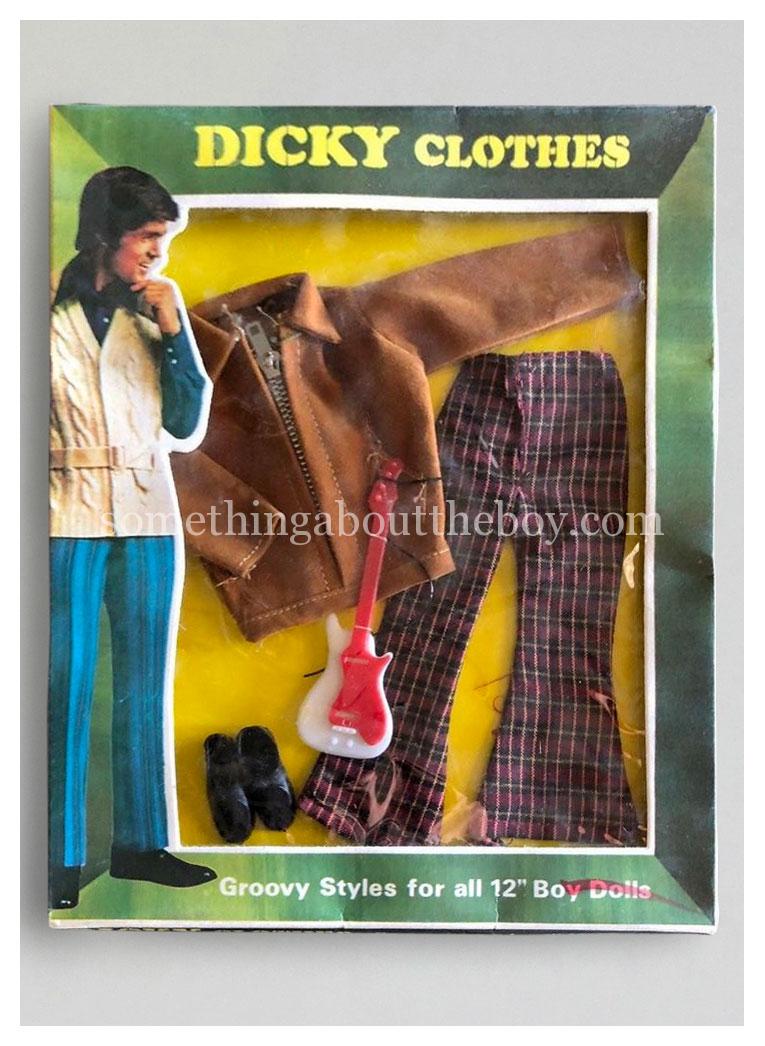
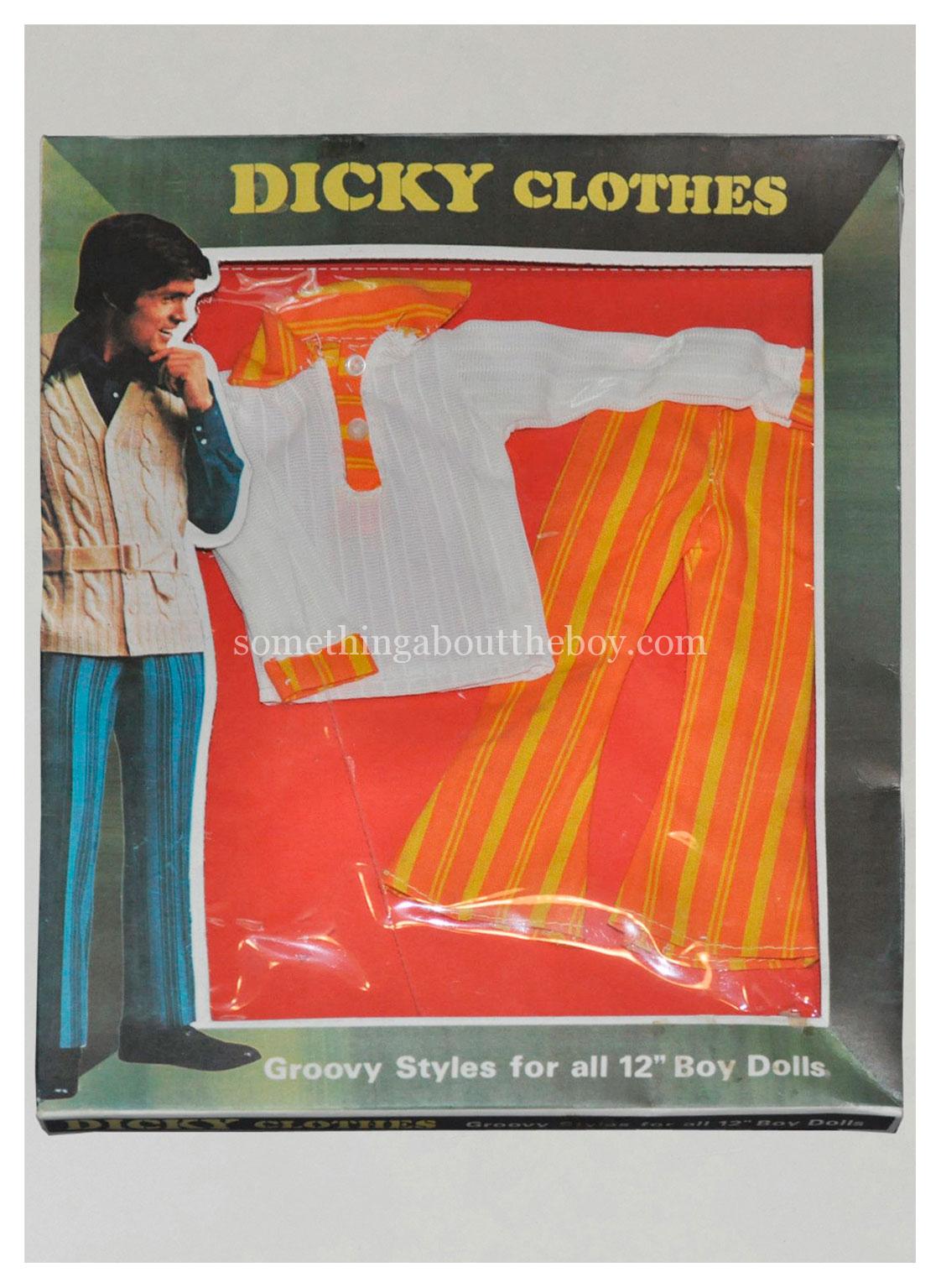
Posin’ Paul, featured in the 1971 Aldens catalogue (below left), was actually Randy by Totsy. A rarer version of Randy exists with dark brown skin.
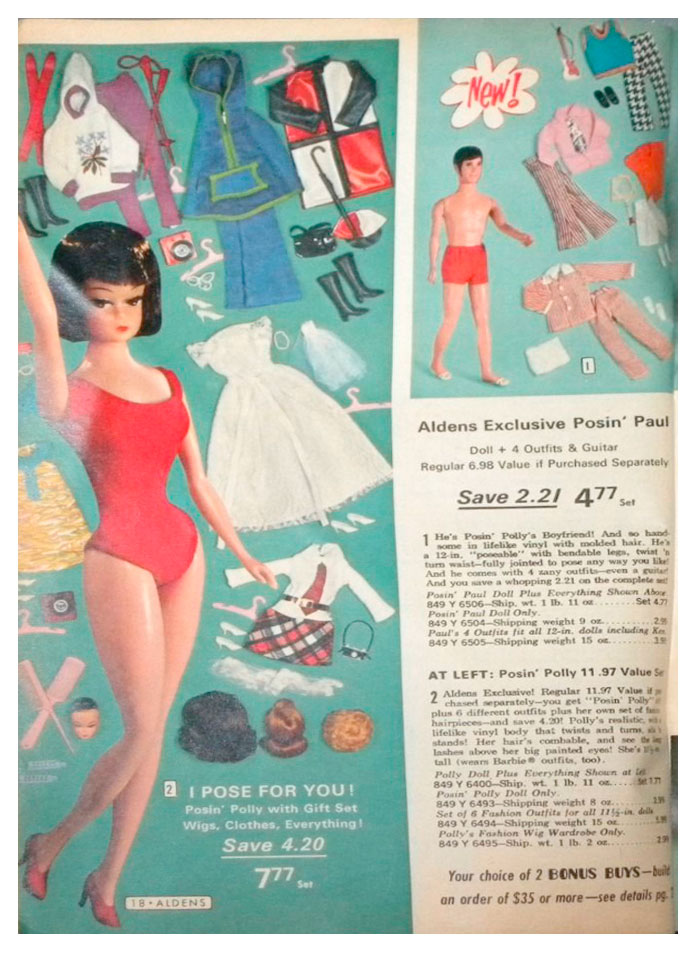
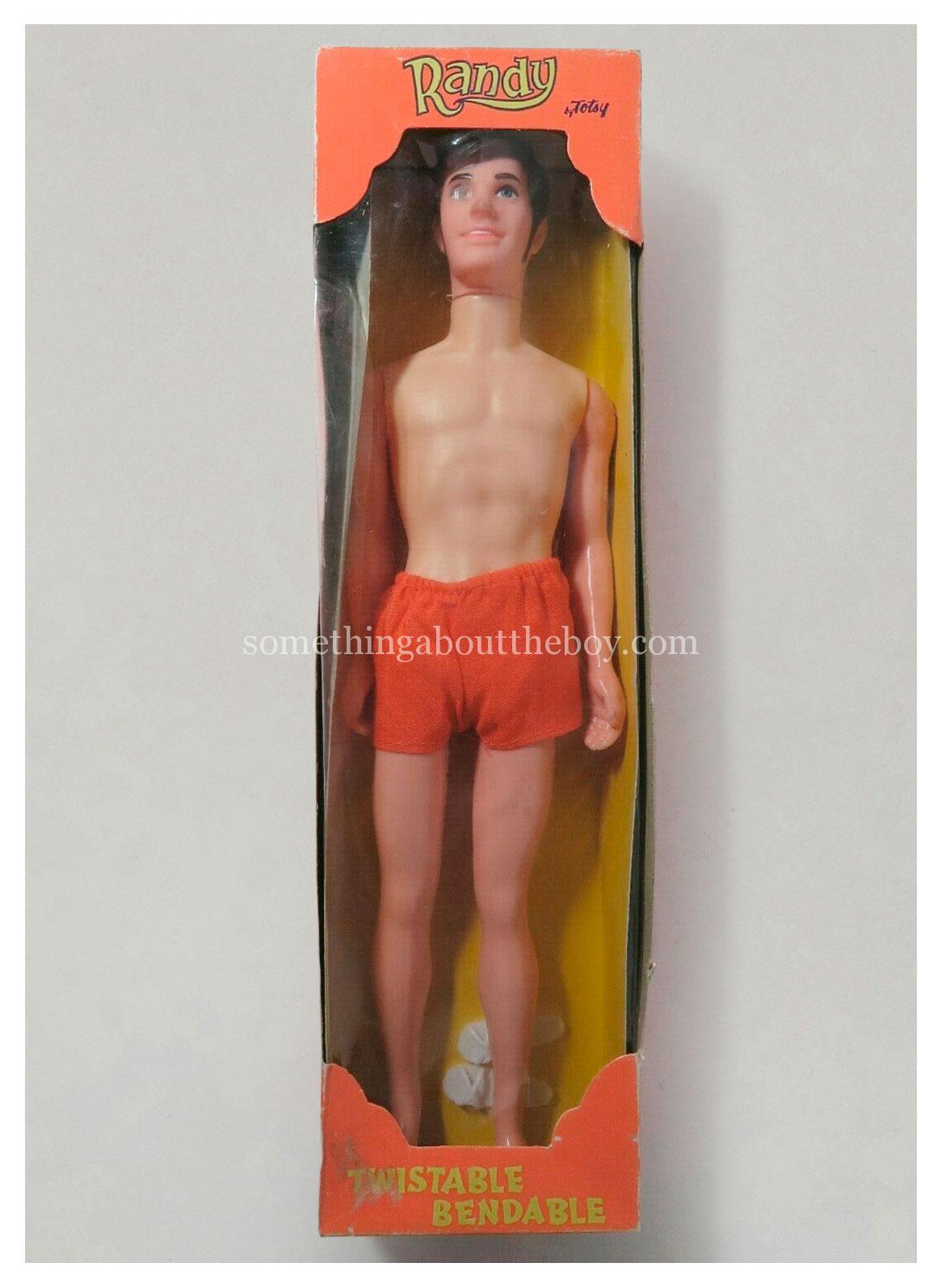
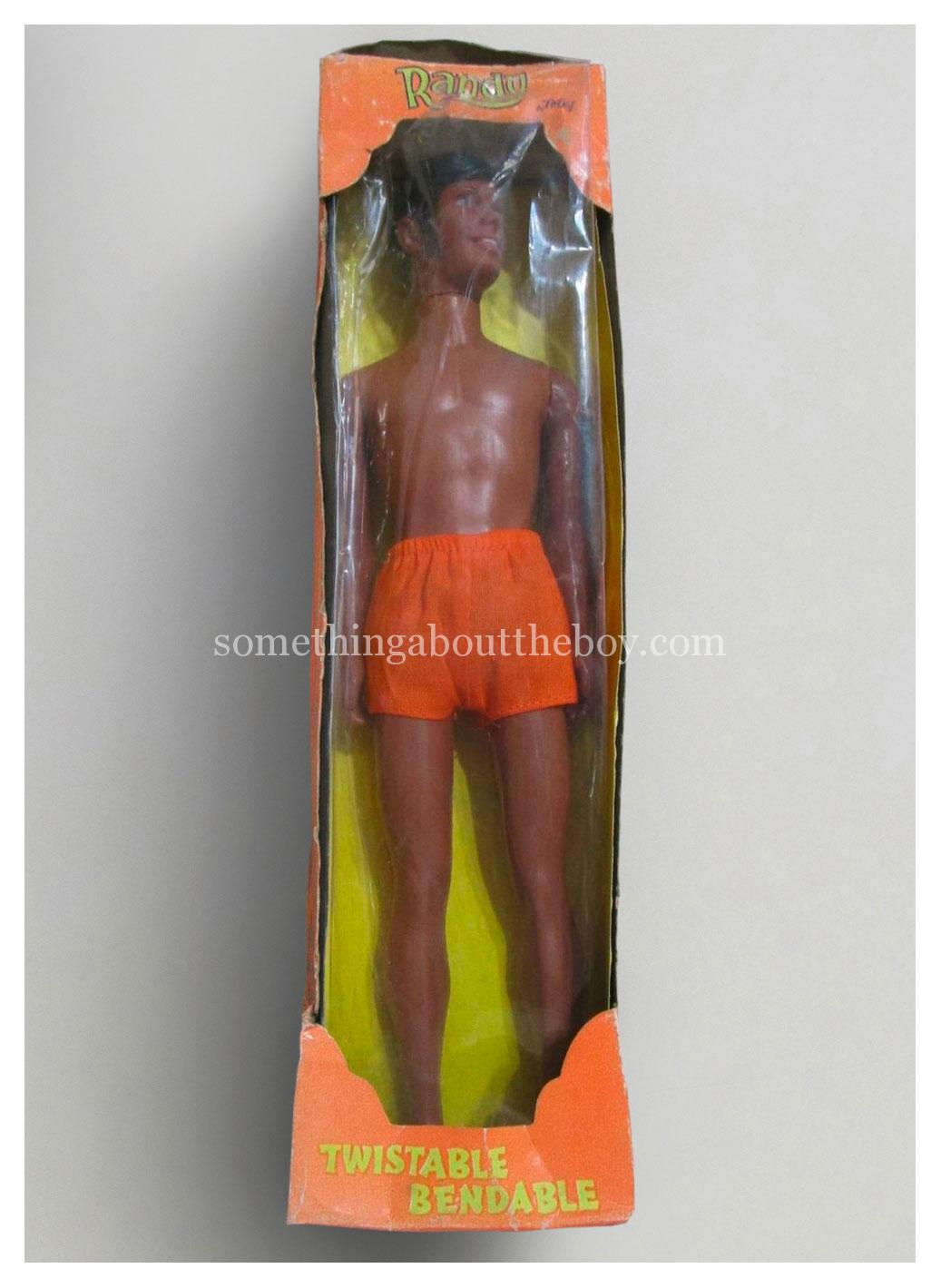
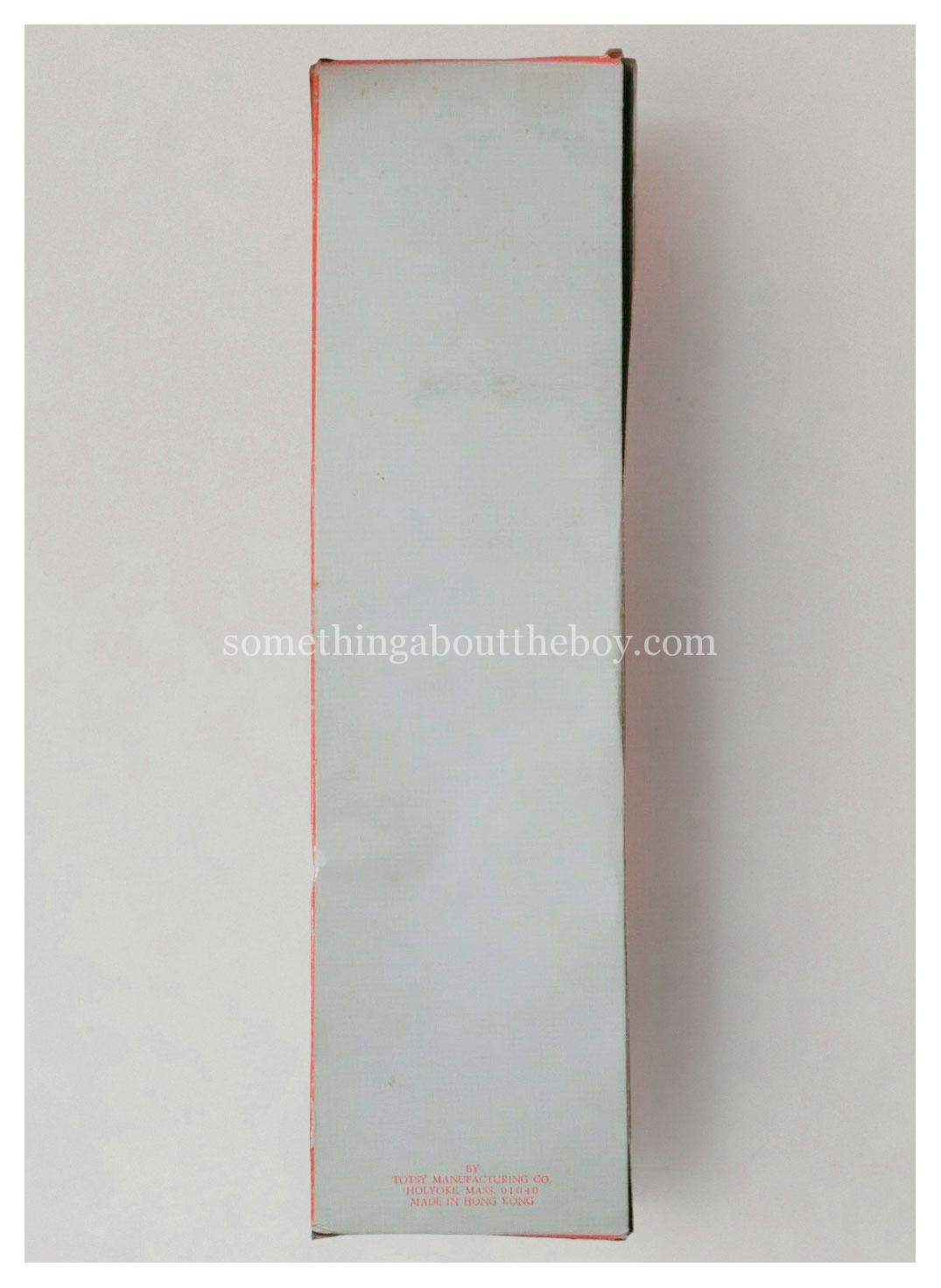
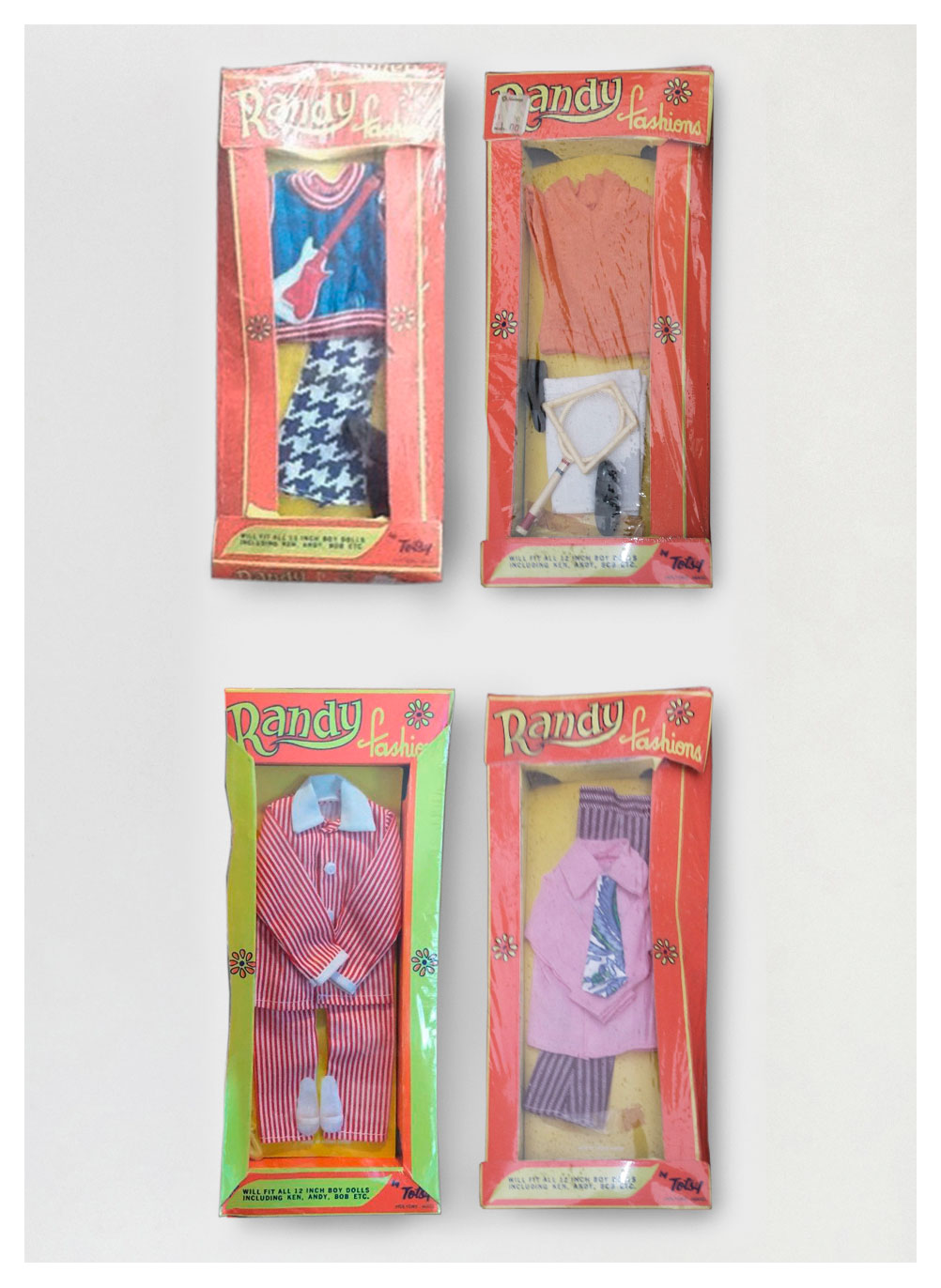
BRUCE AND CHUCK BY TOTSY
Although not featured in any of the catalogues I’ve found so far, Totsy produced other boy dolls, such as Bruce and Chuck. I’ve yet to establish exact production dates for these dolls, but they must be from the 1970s. I have seen advertising featuring a differently-packaged Chuck from 1980-81, so Totsy obviously produced him over a long period, but this Chuck’s clothing range also mentions Brad, so it’s most likely to date from the early 1970s. Chuck has the distinction of having the coolest designed packaging combined with the worst quality clothing.
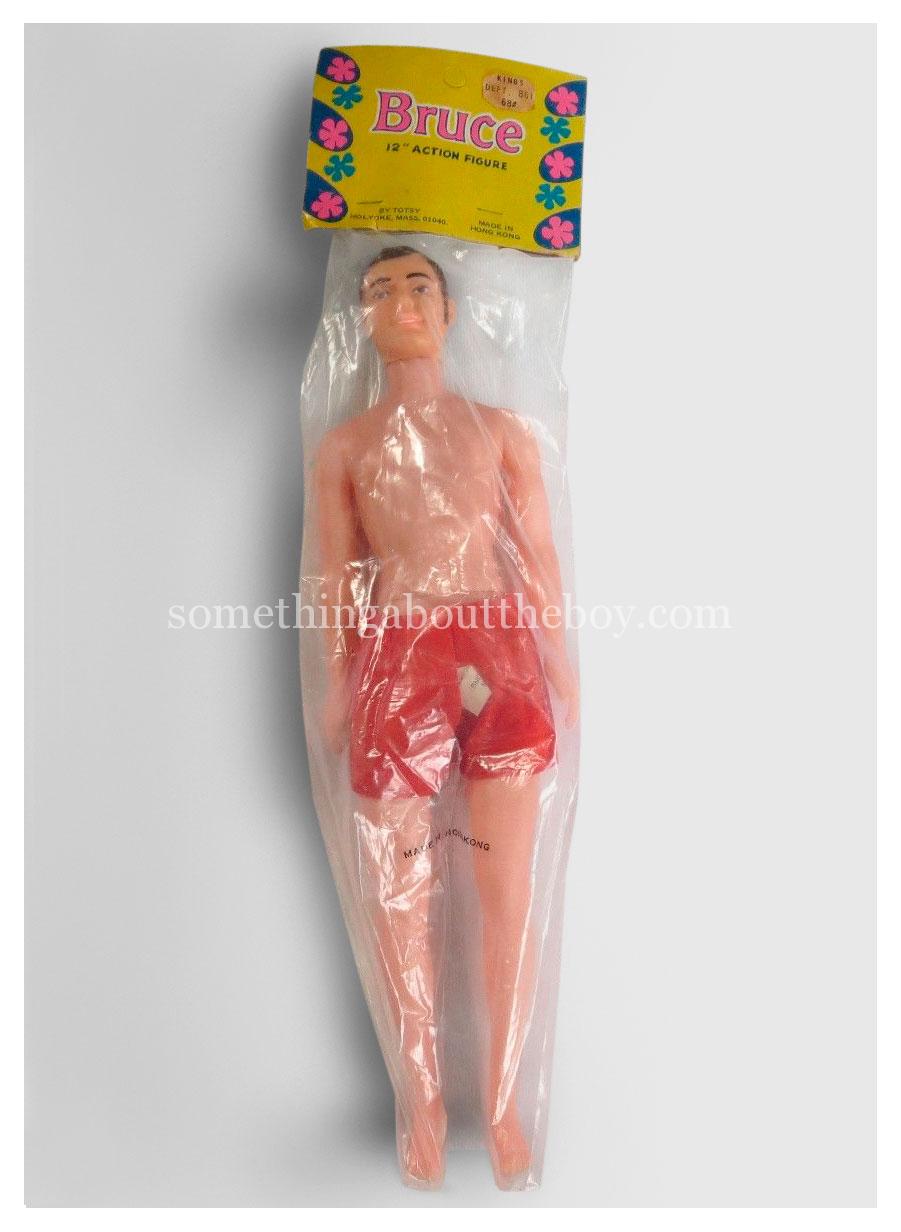
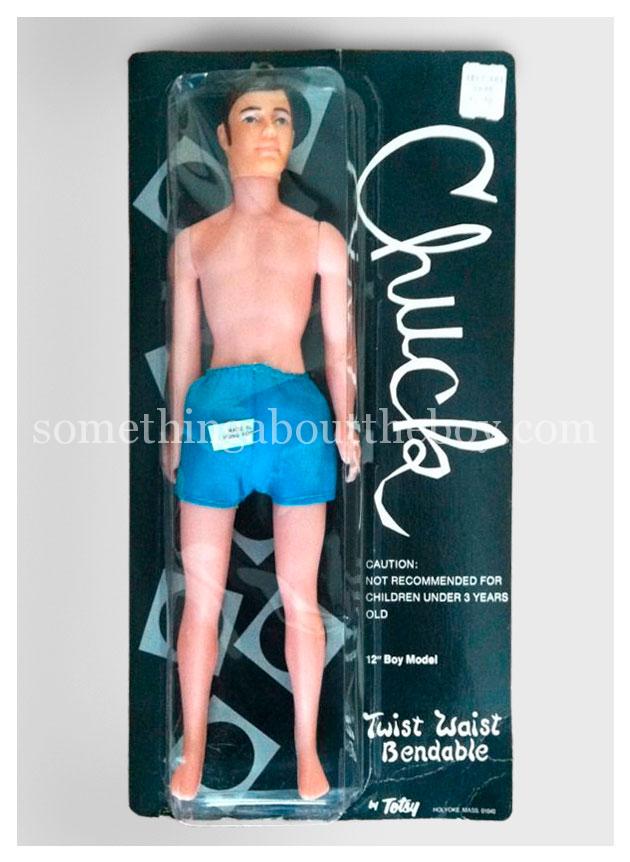
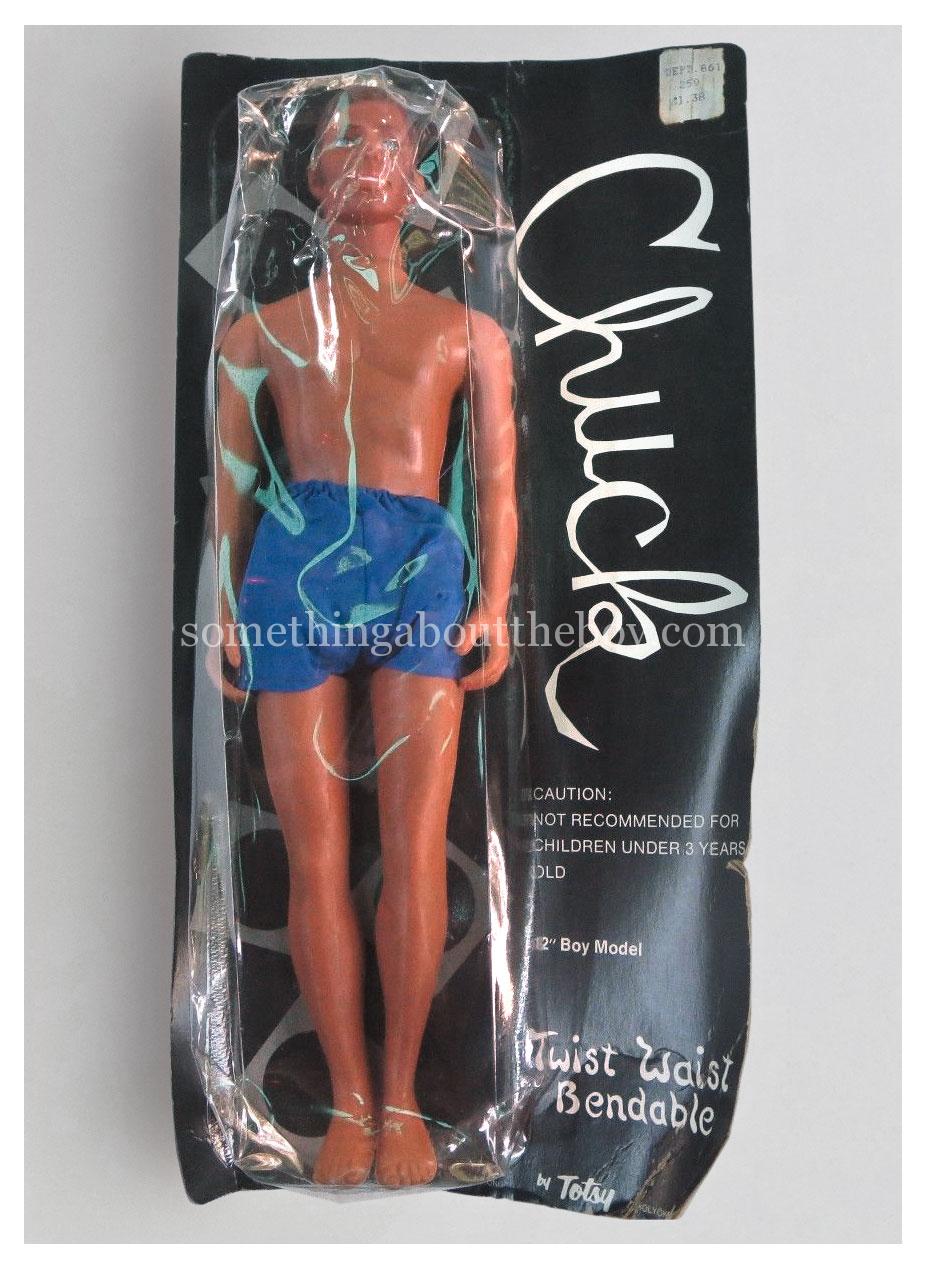
Click on the photo below left to see more Action Fashion outfits for Chuck.
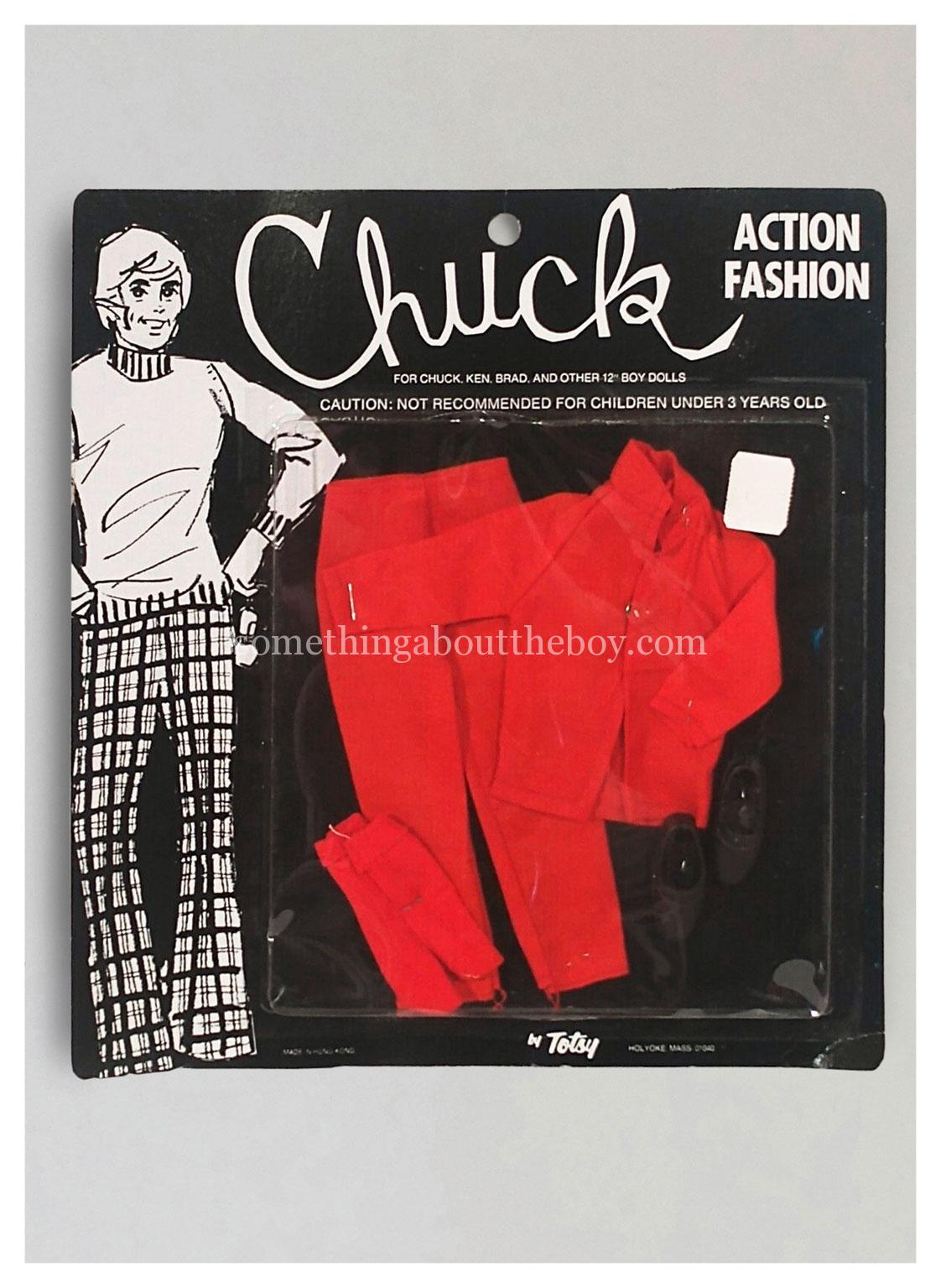
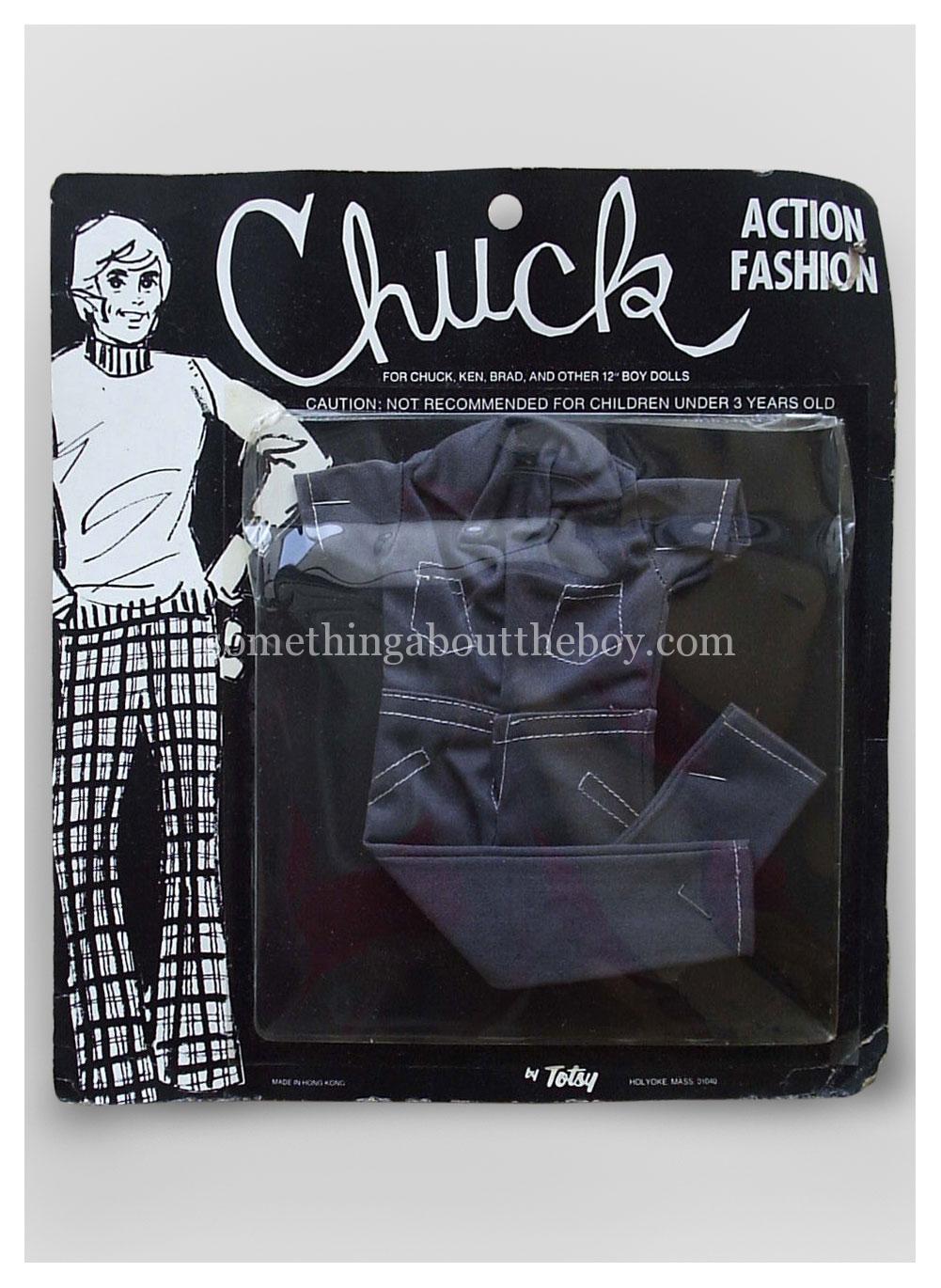
“Happening HANK” by Peggy-Ann Doll Clothes Inc.
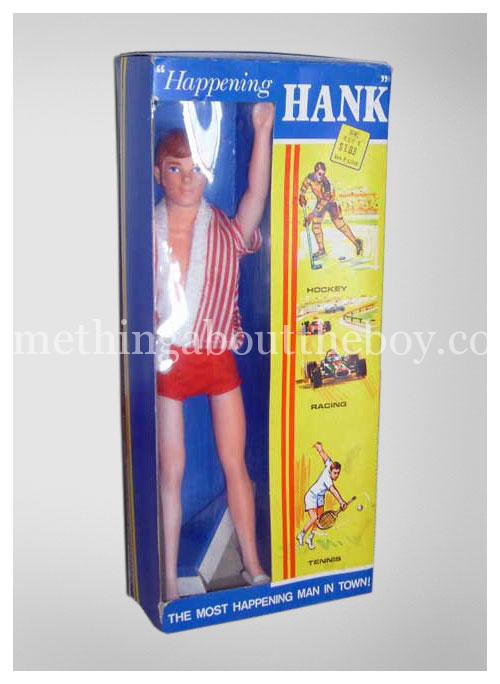
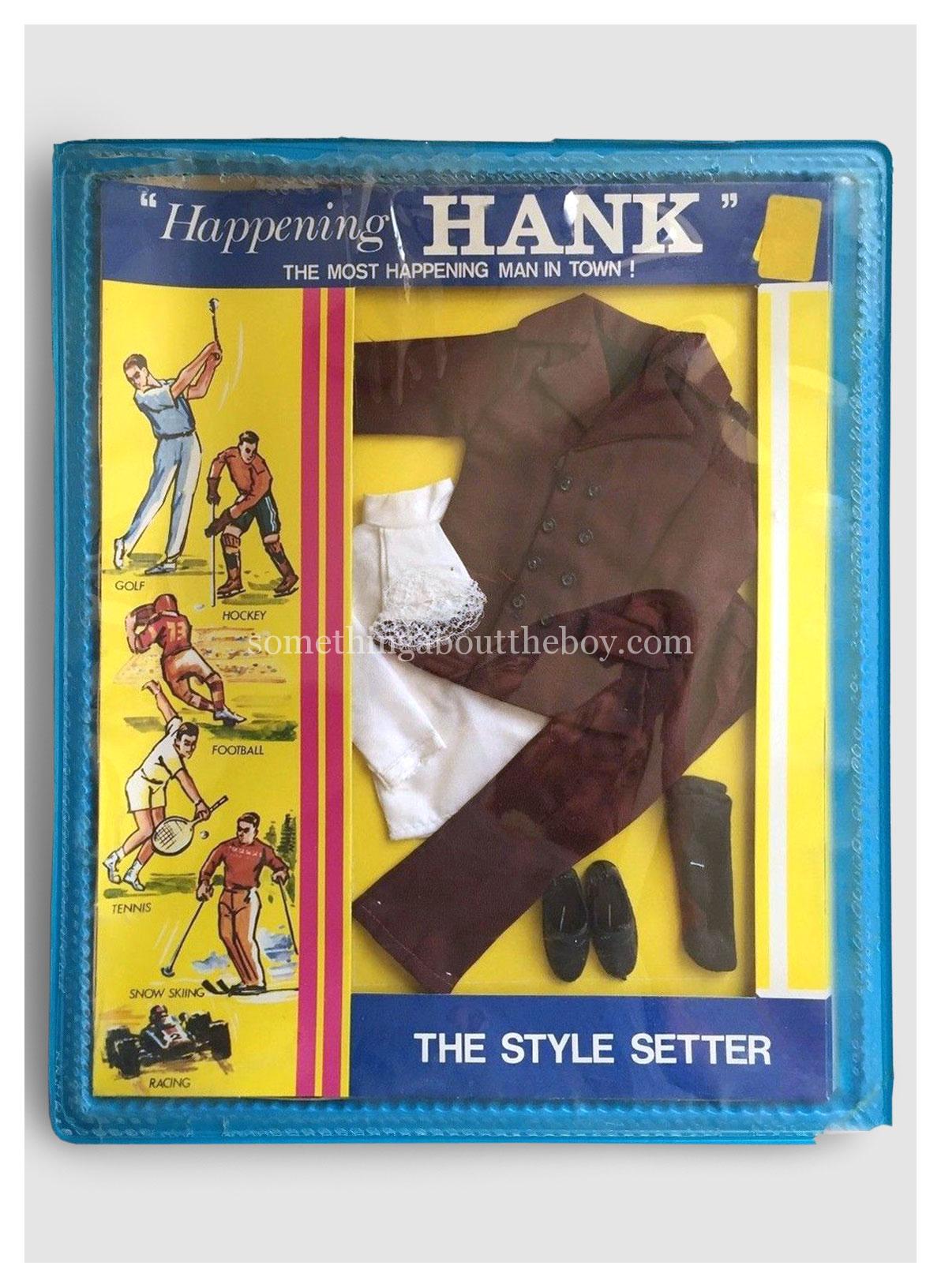
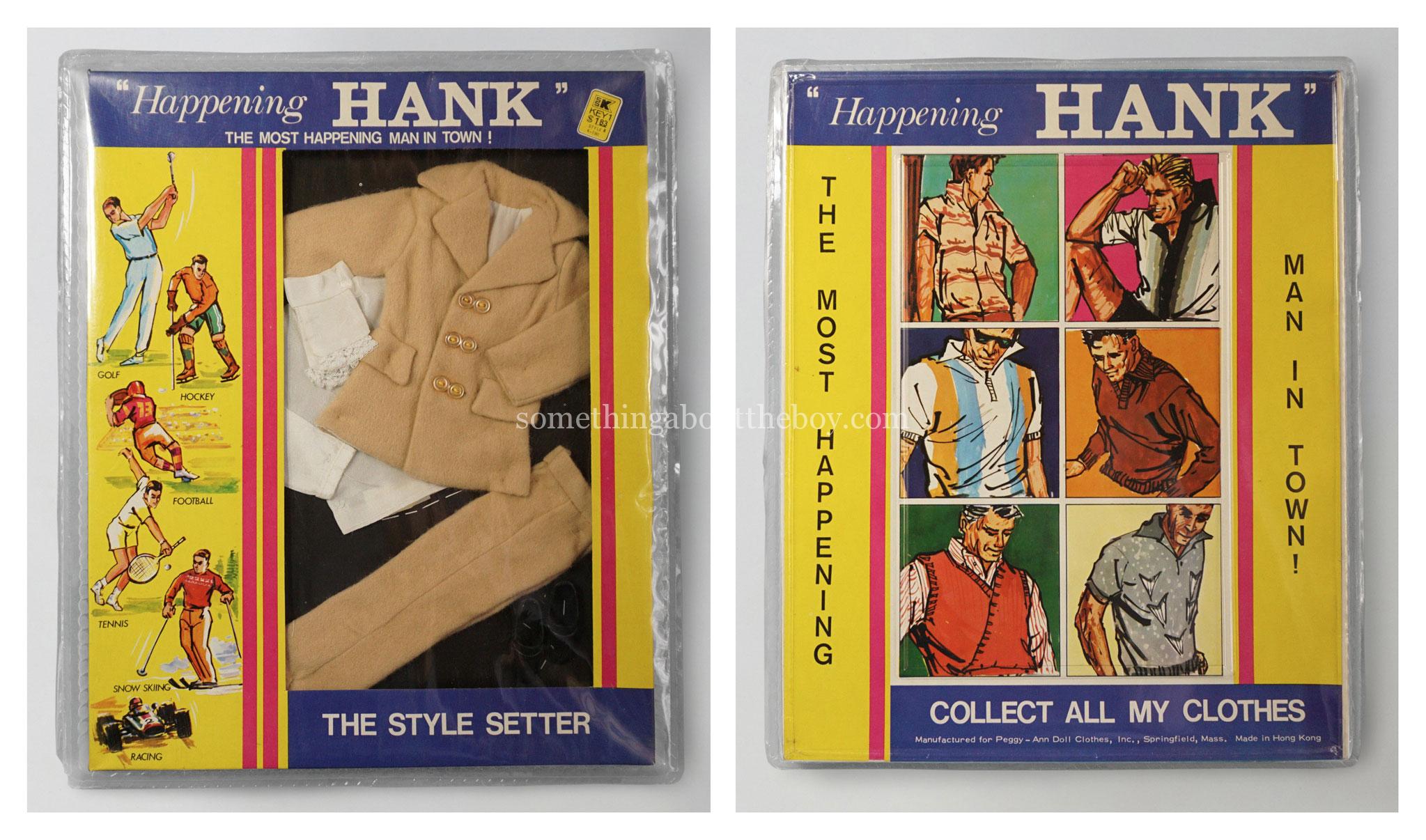

The two clones below are basically the same doll as “Happening Hank”. The Dealer Doll was presumably to be found in Las Vegas gift shops. The Footballer was sold in Germany.
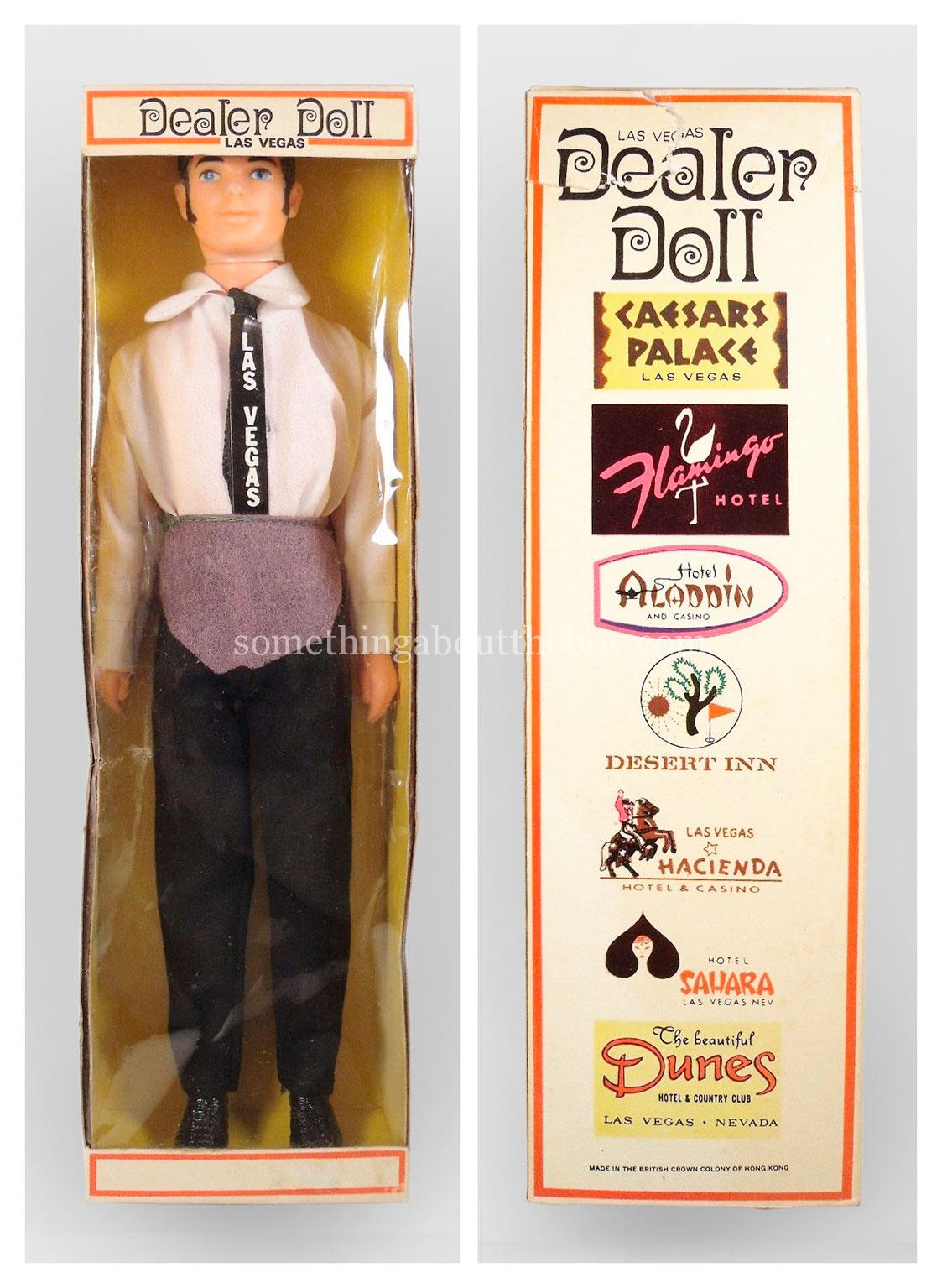
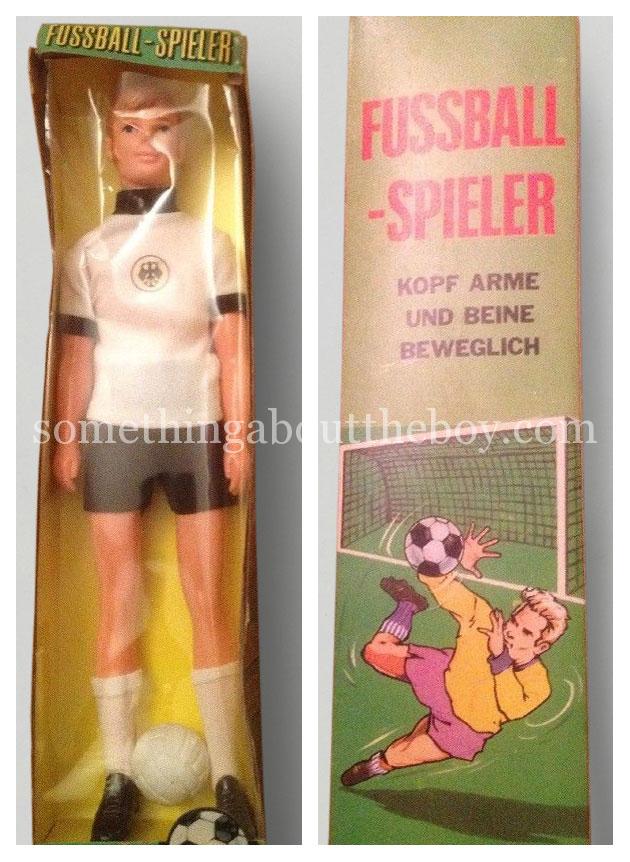
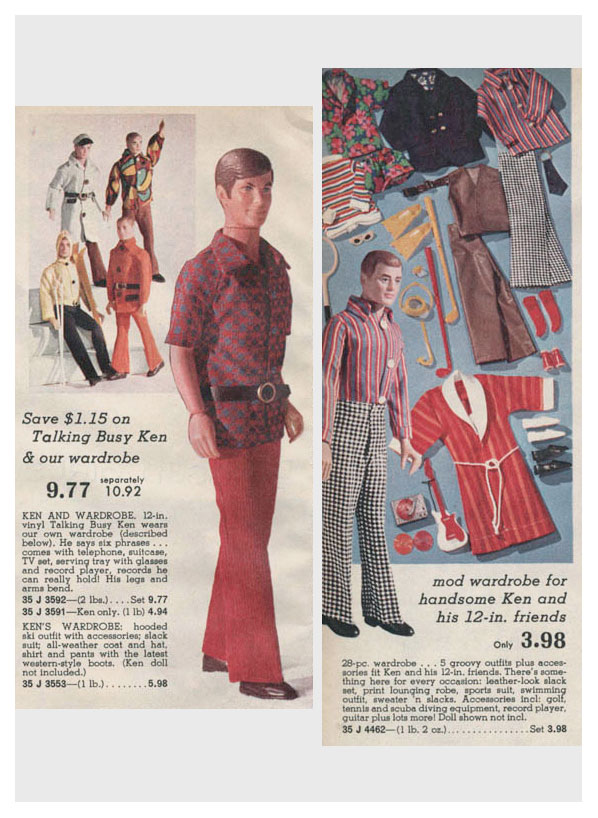
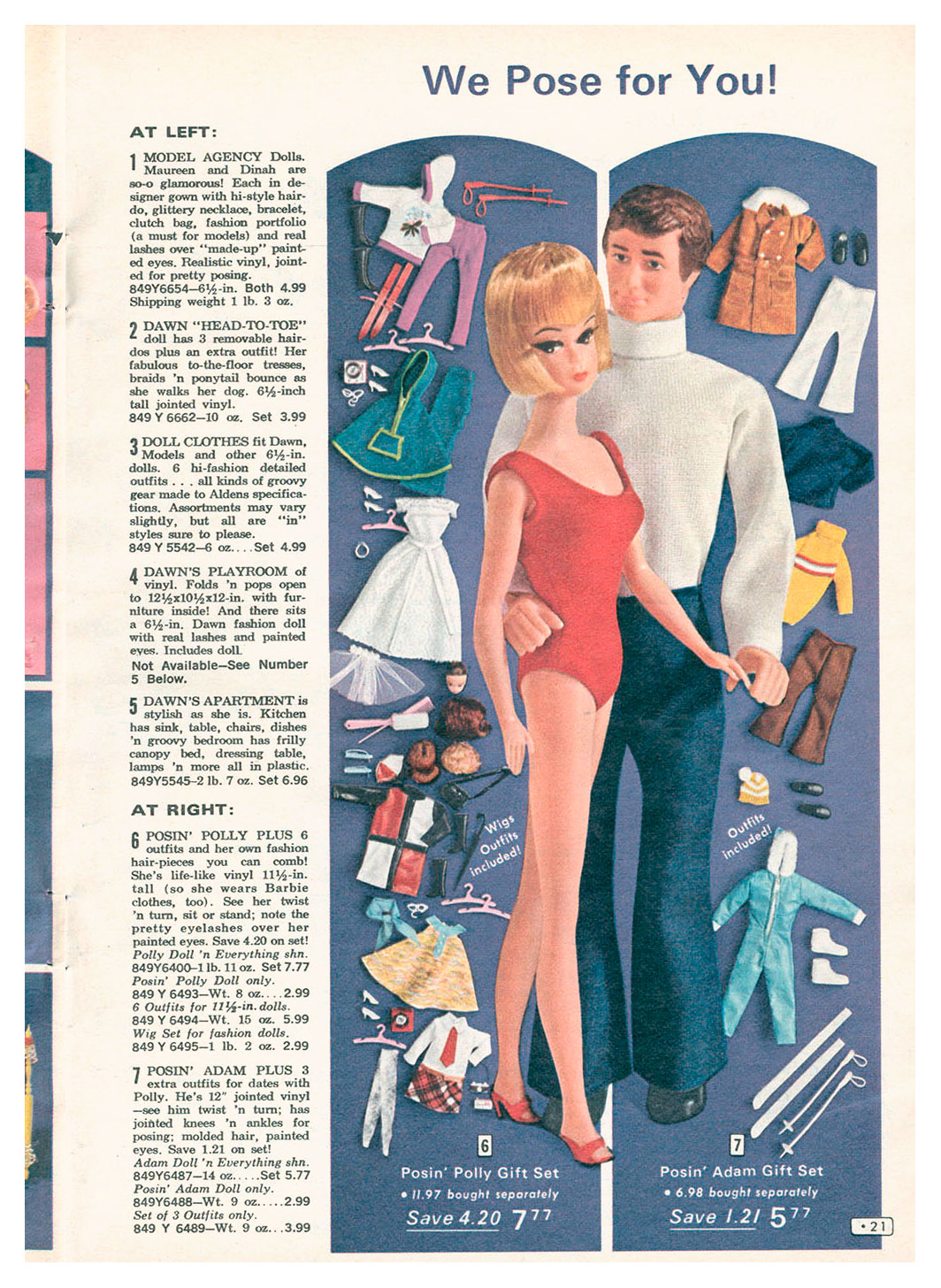
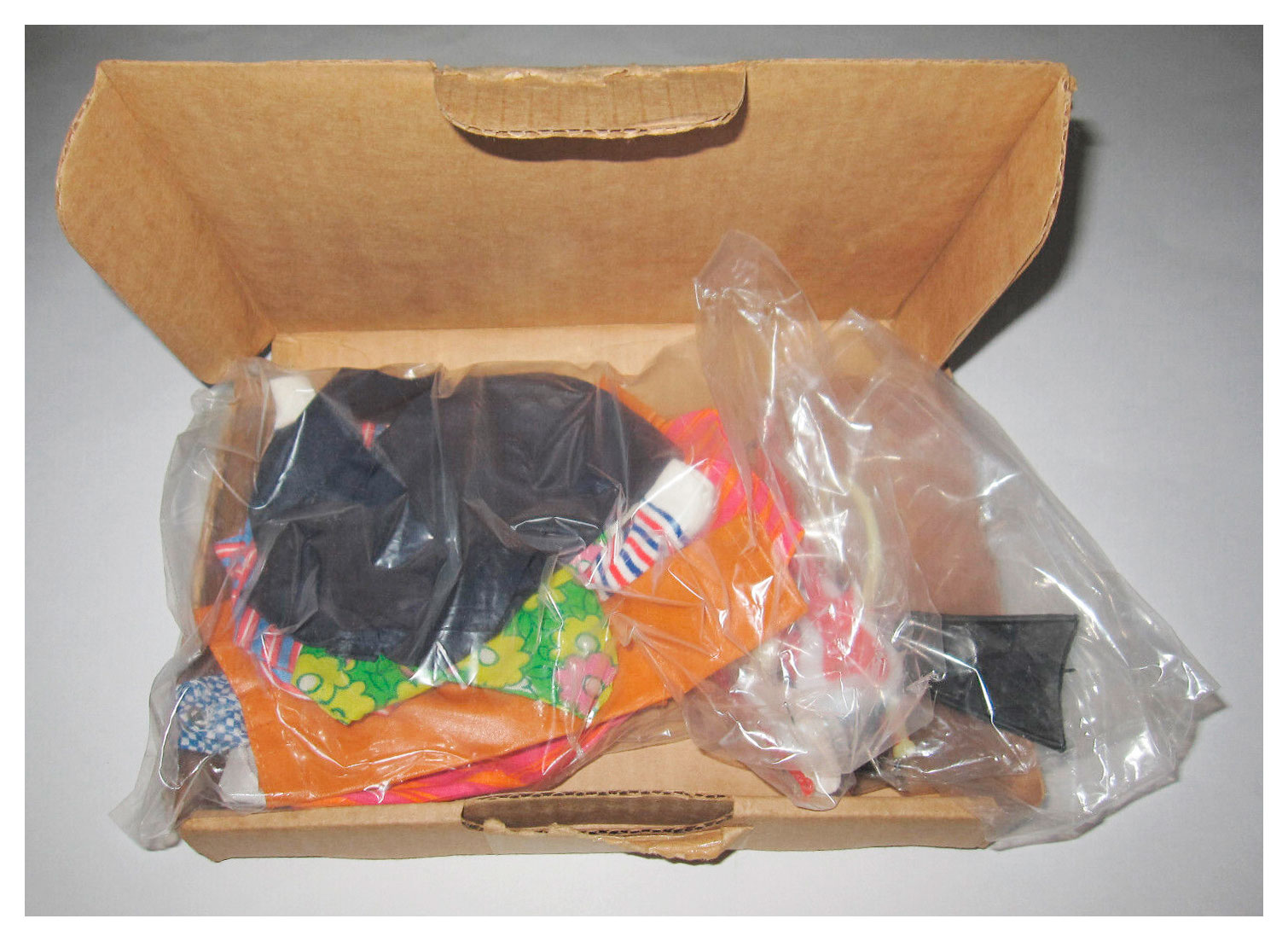
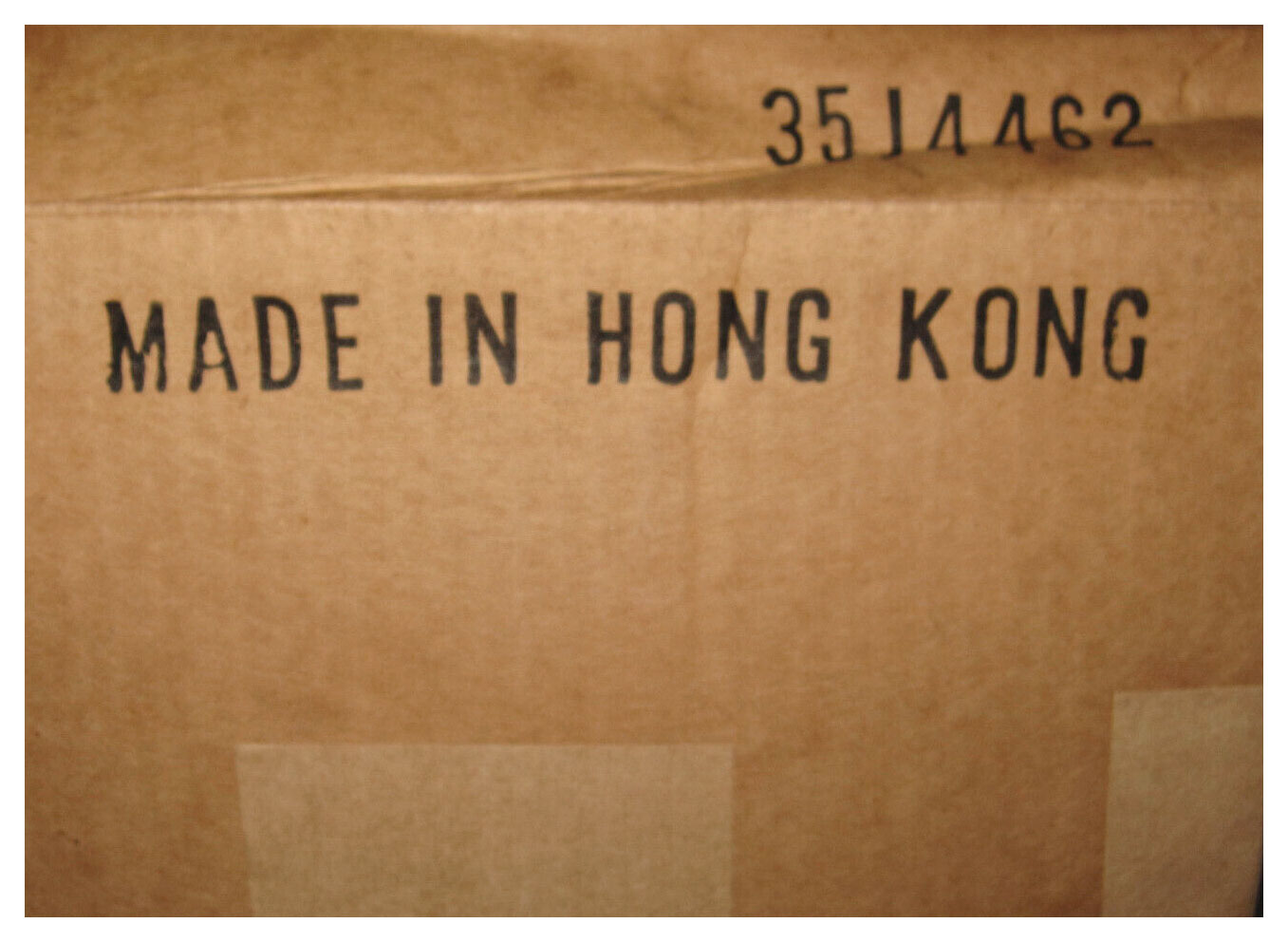
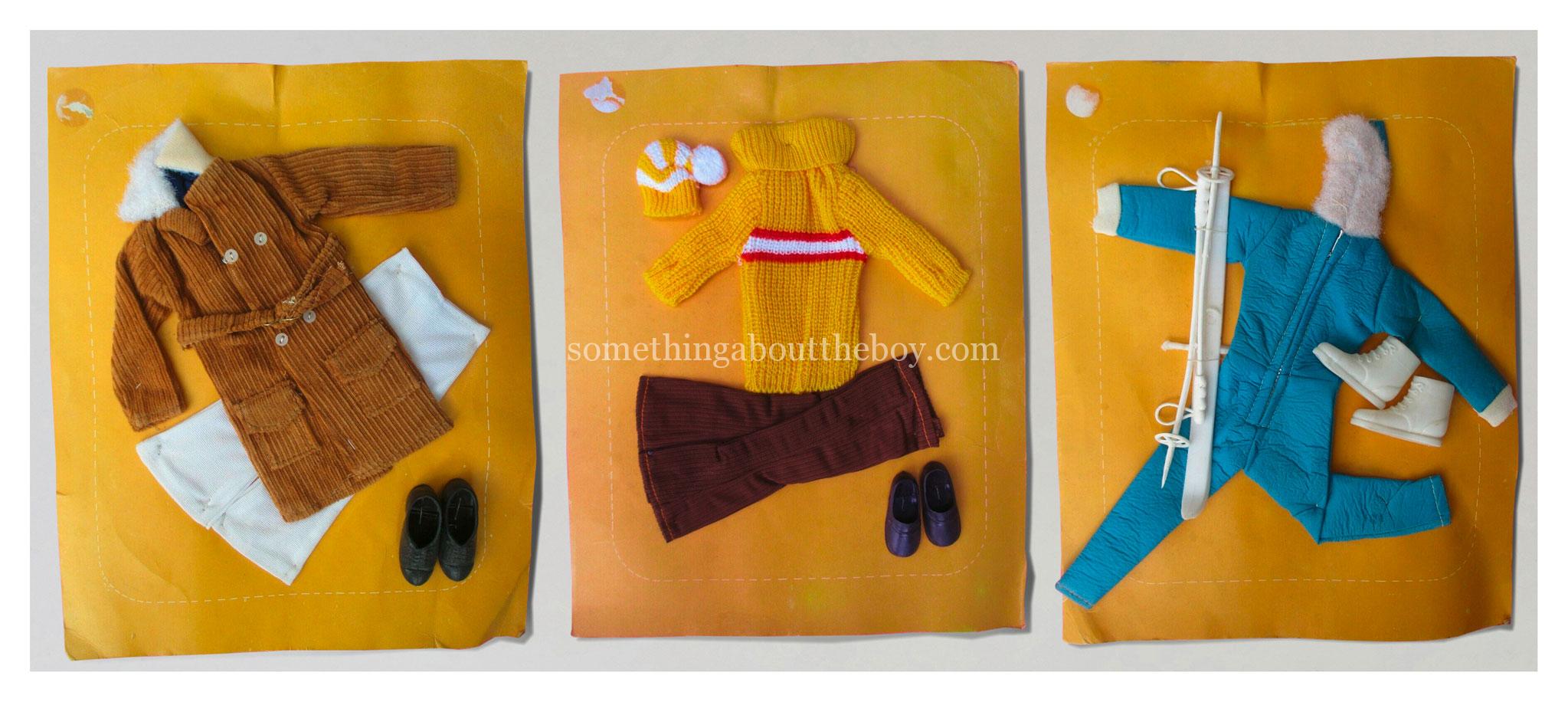
The Boy Doll featured in the 1972 JCPenney Christmas catalogue is a classic Mod Ken clone. He reappeared for several years in various guises, sold by companies in Europe and the US (see Now Look and Superstar clone clothing sections).
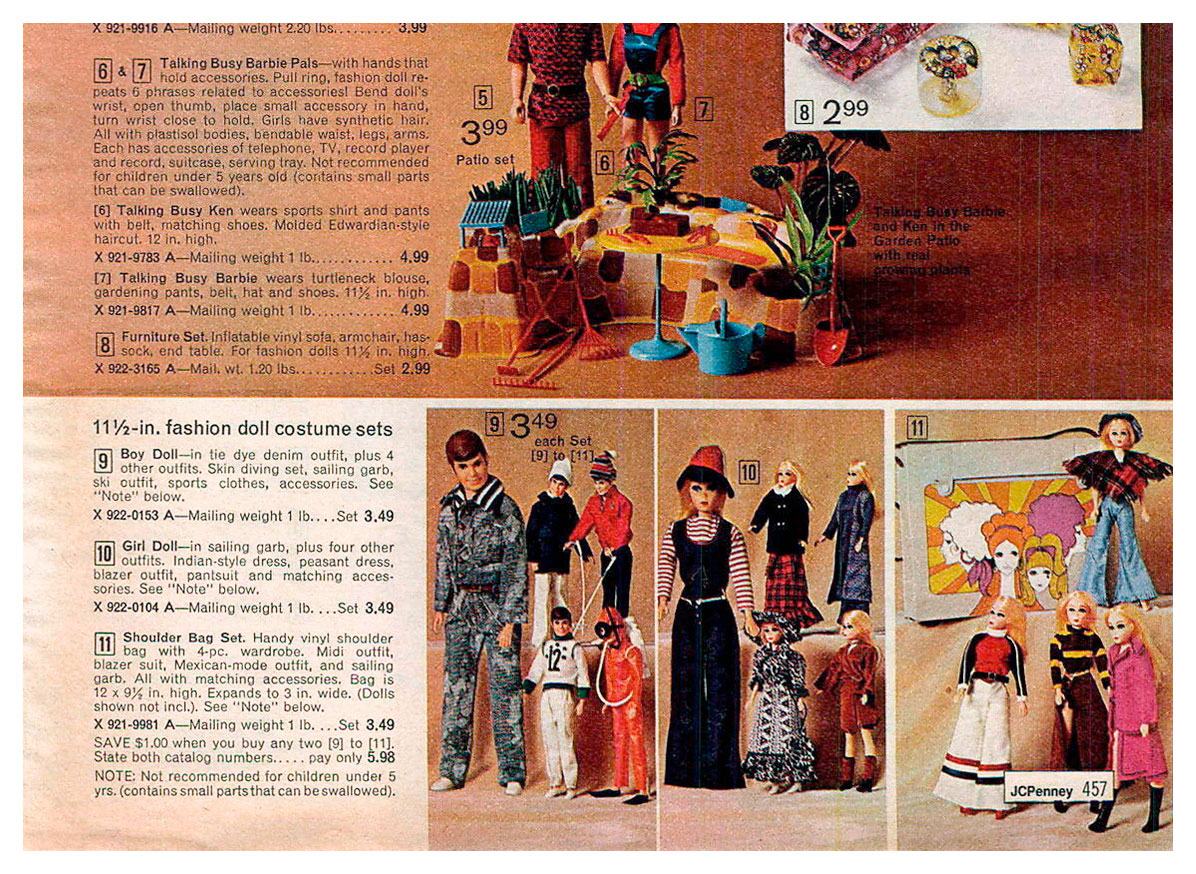

FRED BY PLASTY (GERMANY)
In the Plasty catalogue for 1969 Fred still looks like the vintage painted hair Ken. The packaging for 1970 shows a new look Fred for the first time. This version was sold until 1972. The ‘leather’ coat is from his 1972 collection, and the reverse of the packaging shows all the other outfits available that year.
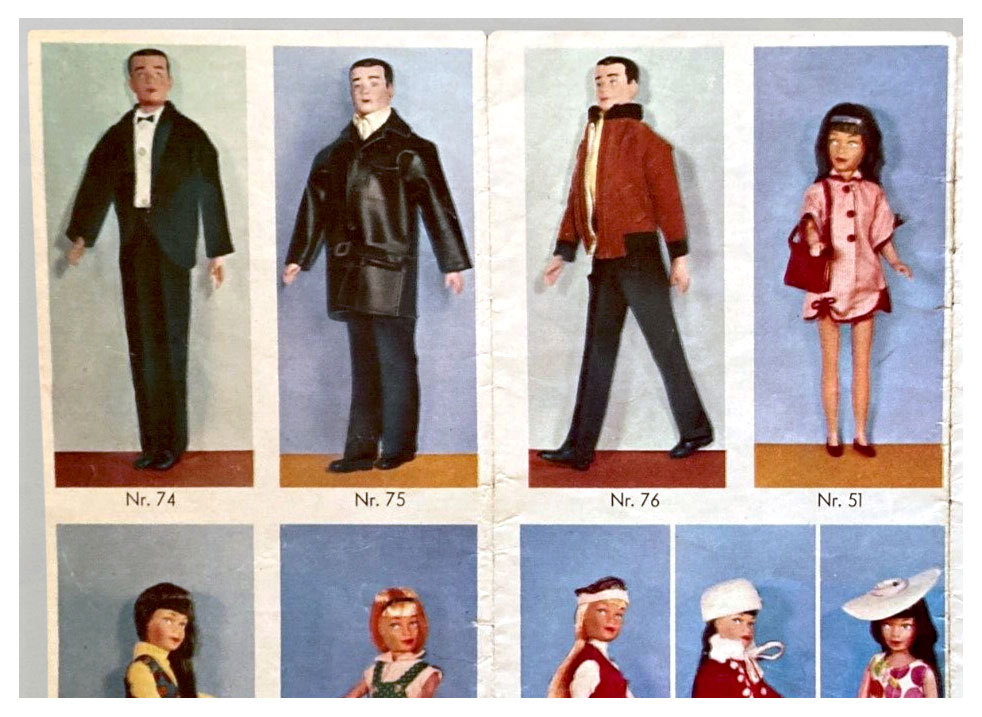
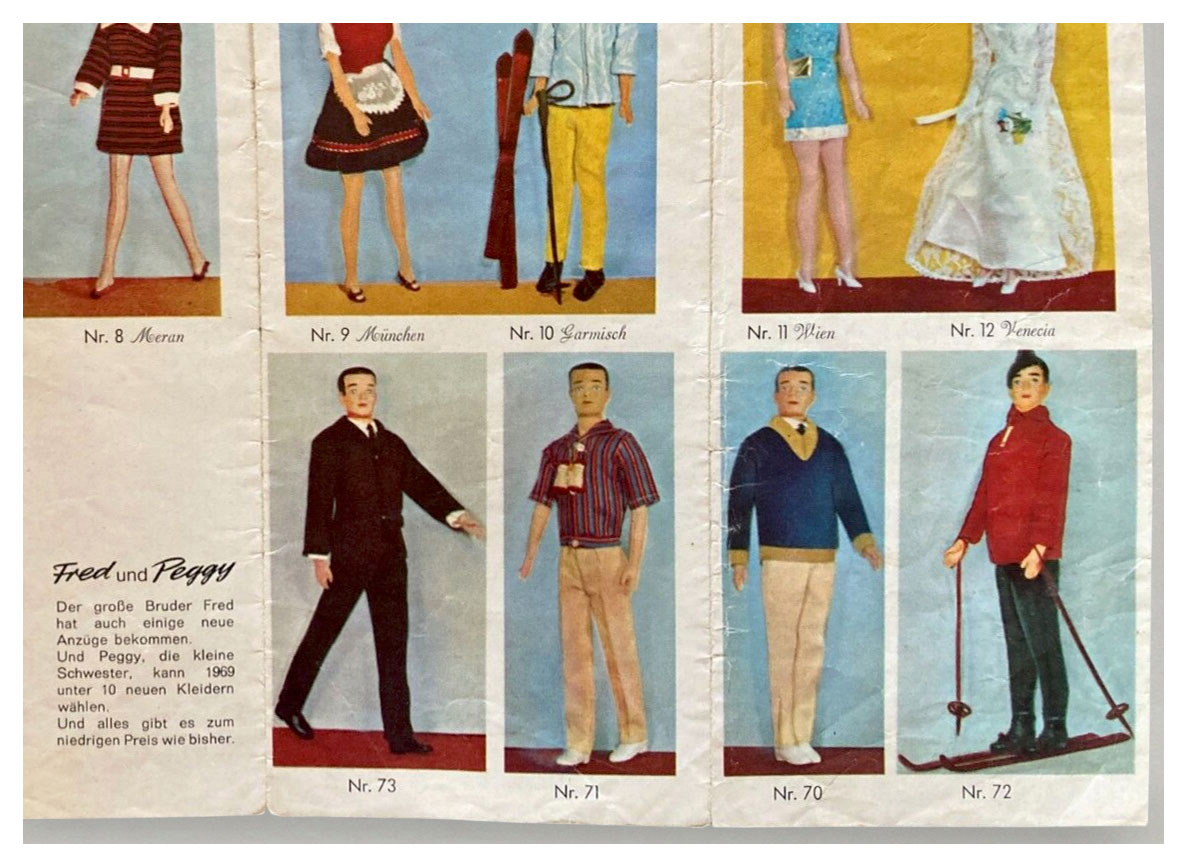
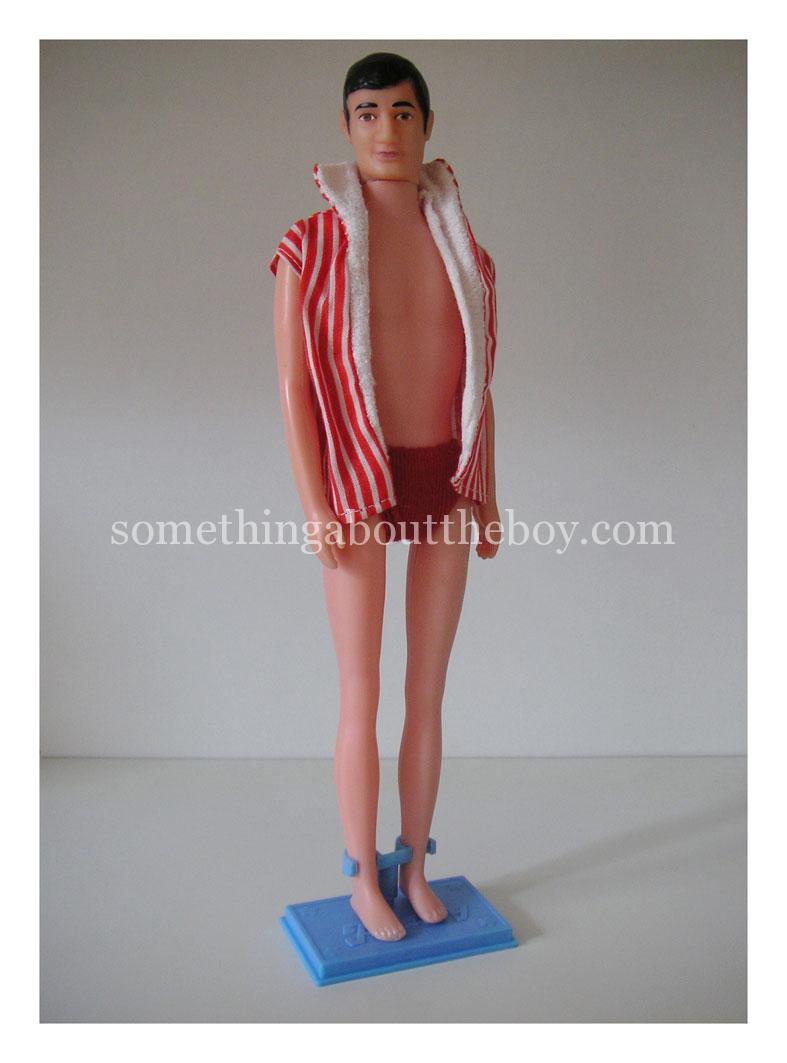
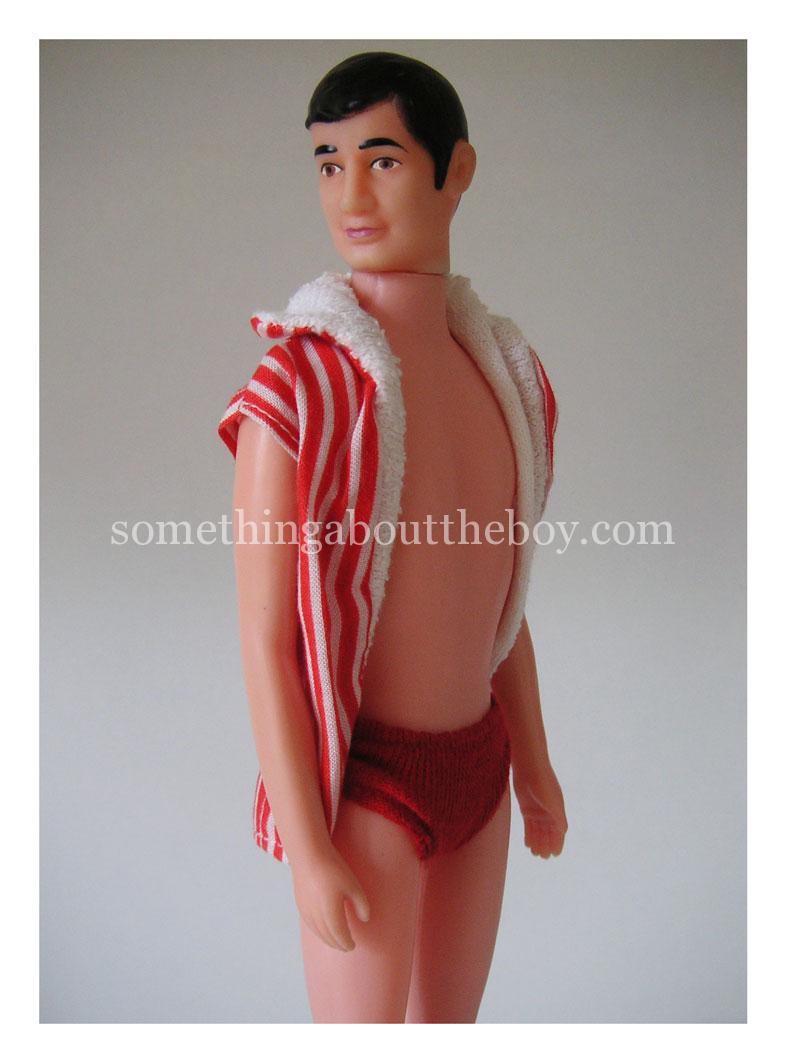
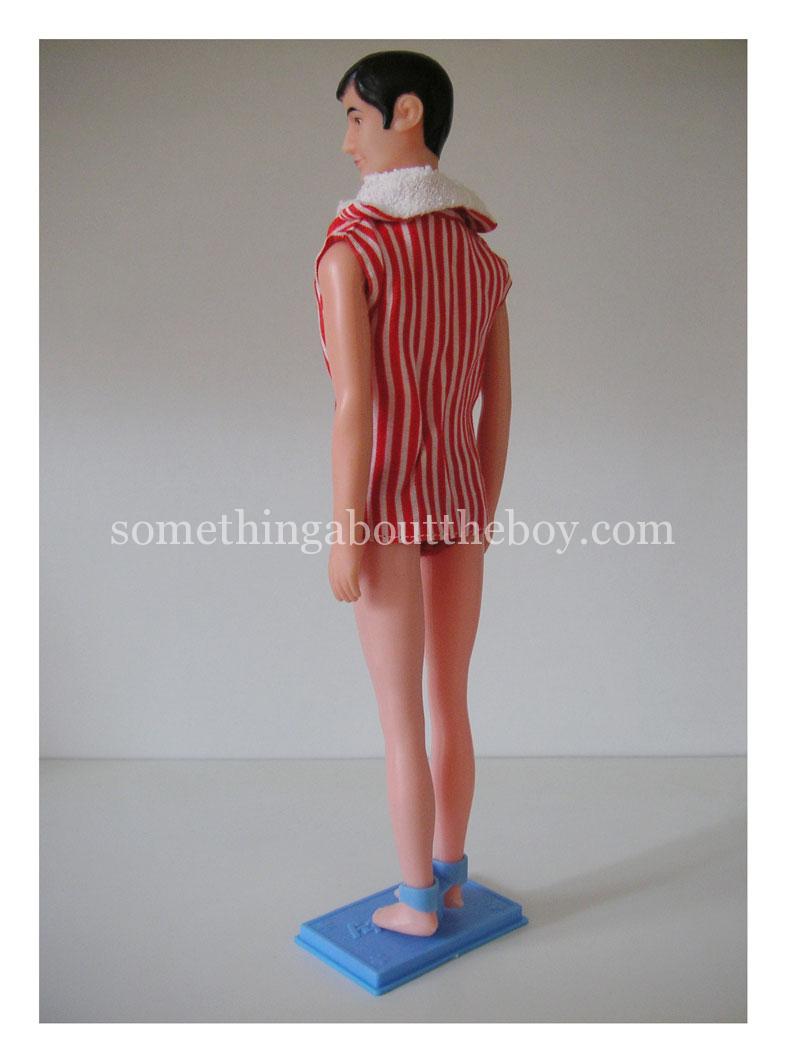
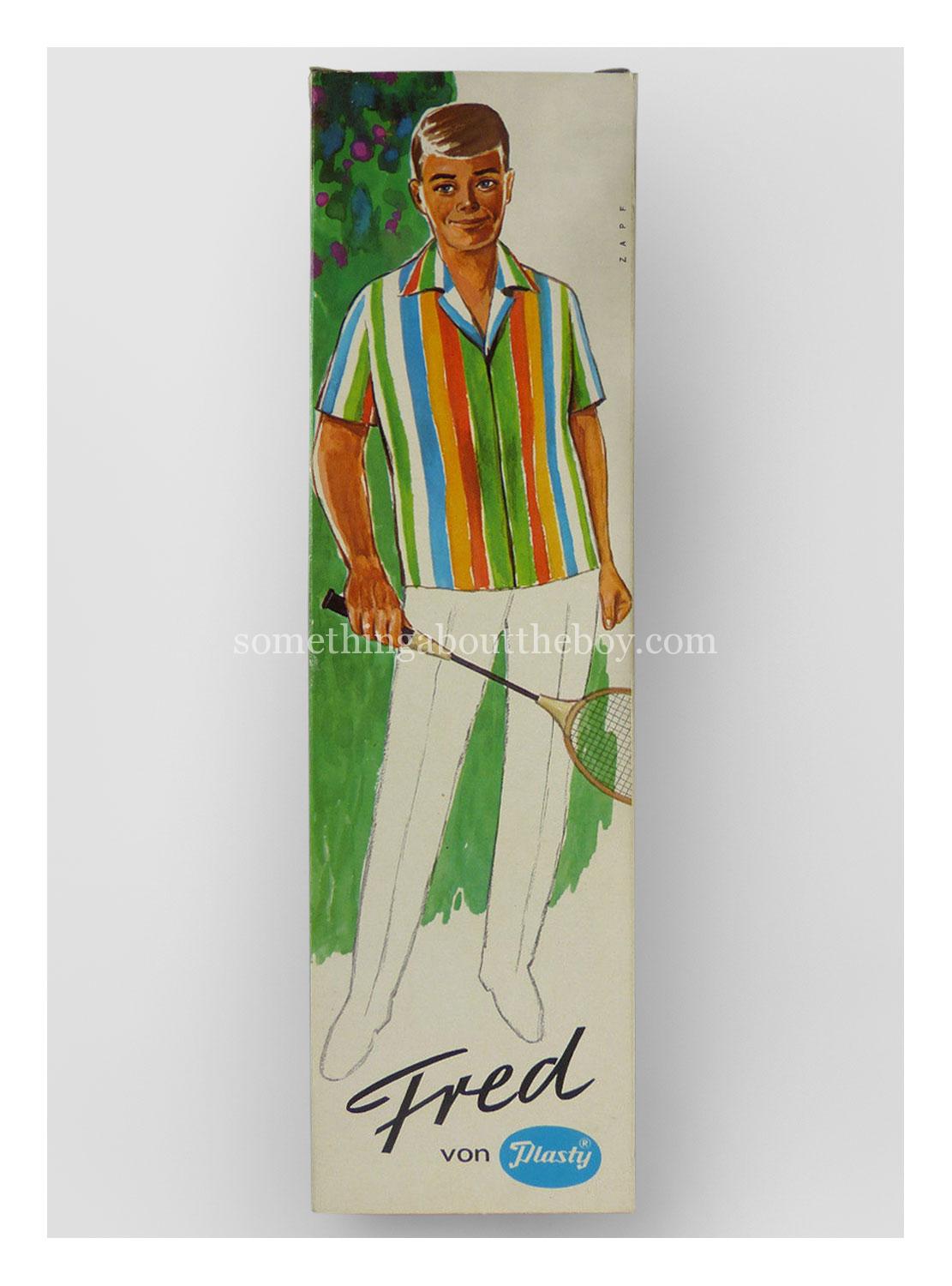
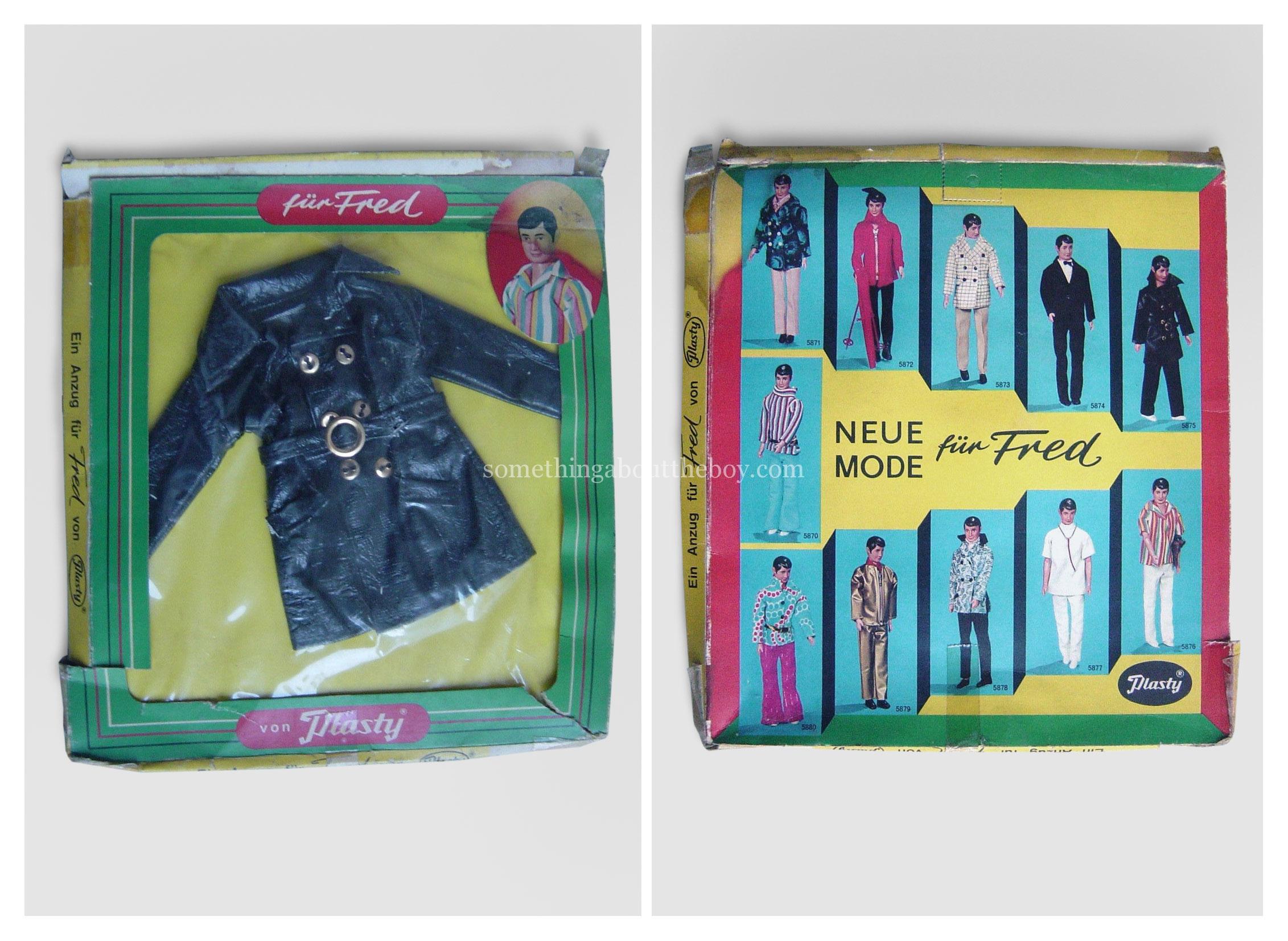

In 1973 Plasty introduced a redesigned Fred, a slightly more boyish doll than the previous model shown above. He was sold until around 1977.
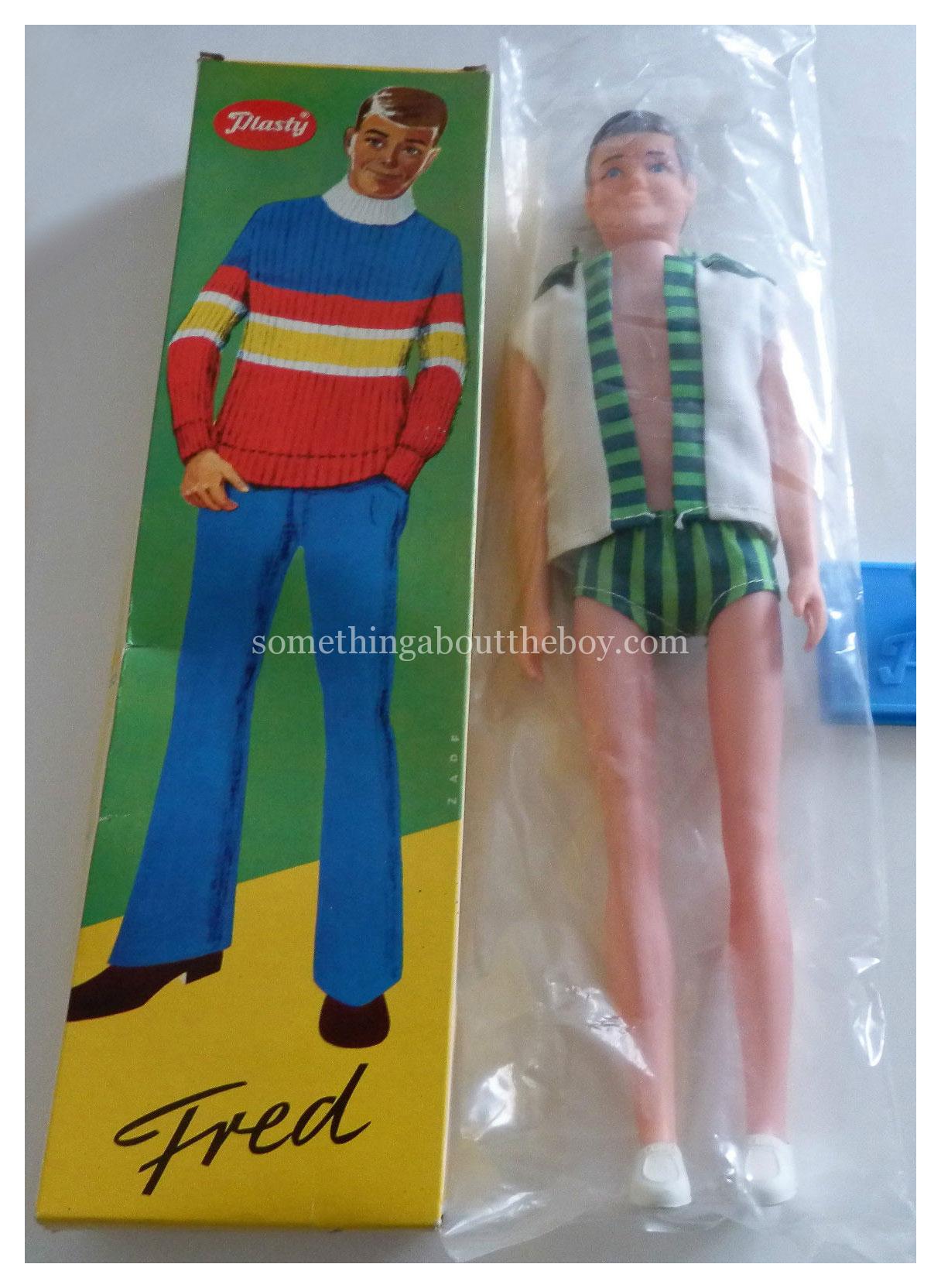
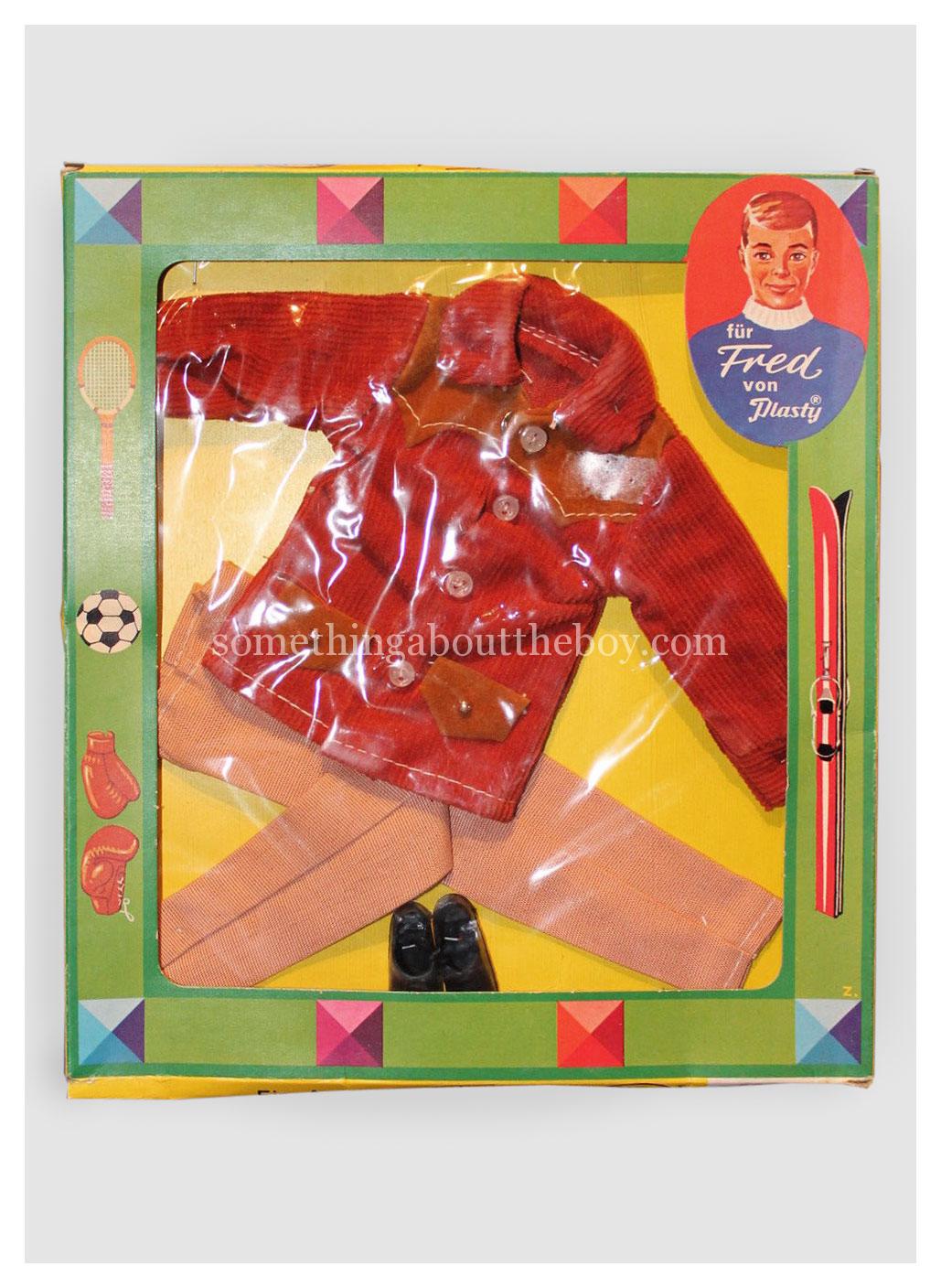
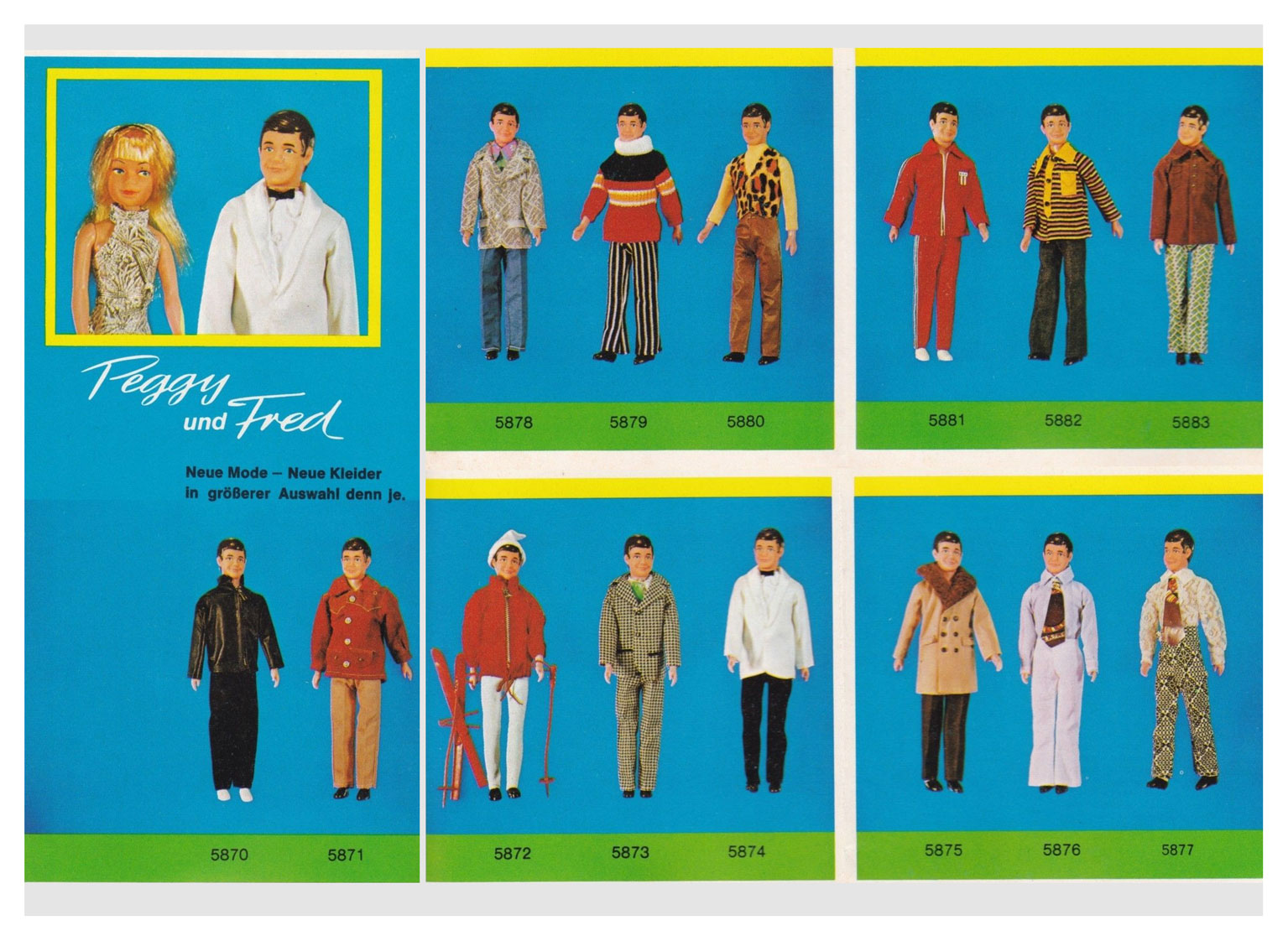
GARY (USA/CANADA) & TONI/FRANK (GERMANY)
The doll sold as Gary in North America and the German-market dolls Toni and Frank have so many cross-overs, both with the dolls/outfits and the packaging. As the packaging is rarely dated, it is difficult to pinpoint the exact year of production. I’ve included them here based on the style of outfits and the box design, though they could date slightly later. Gary was certainly sold as ‘teenage boy doll’ though the Montgomery Ward Christmas catalogues from 1975-1980, and from 1975-77 he came with beach outfit exactly as shown below (see section Now Look Clones & Clothing, also for more photos of German-market clones and clothing).
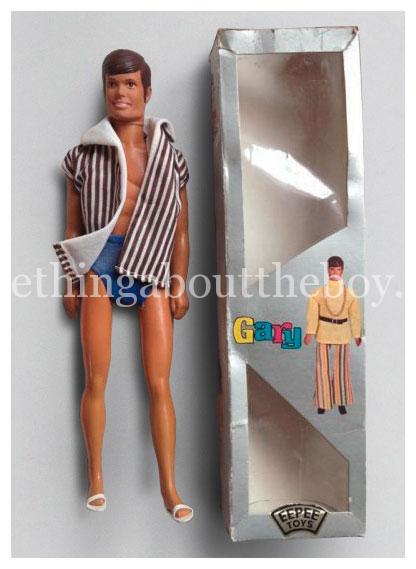
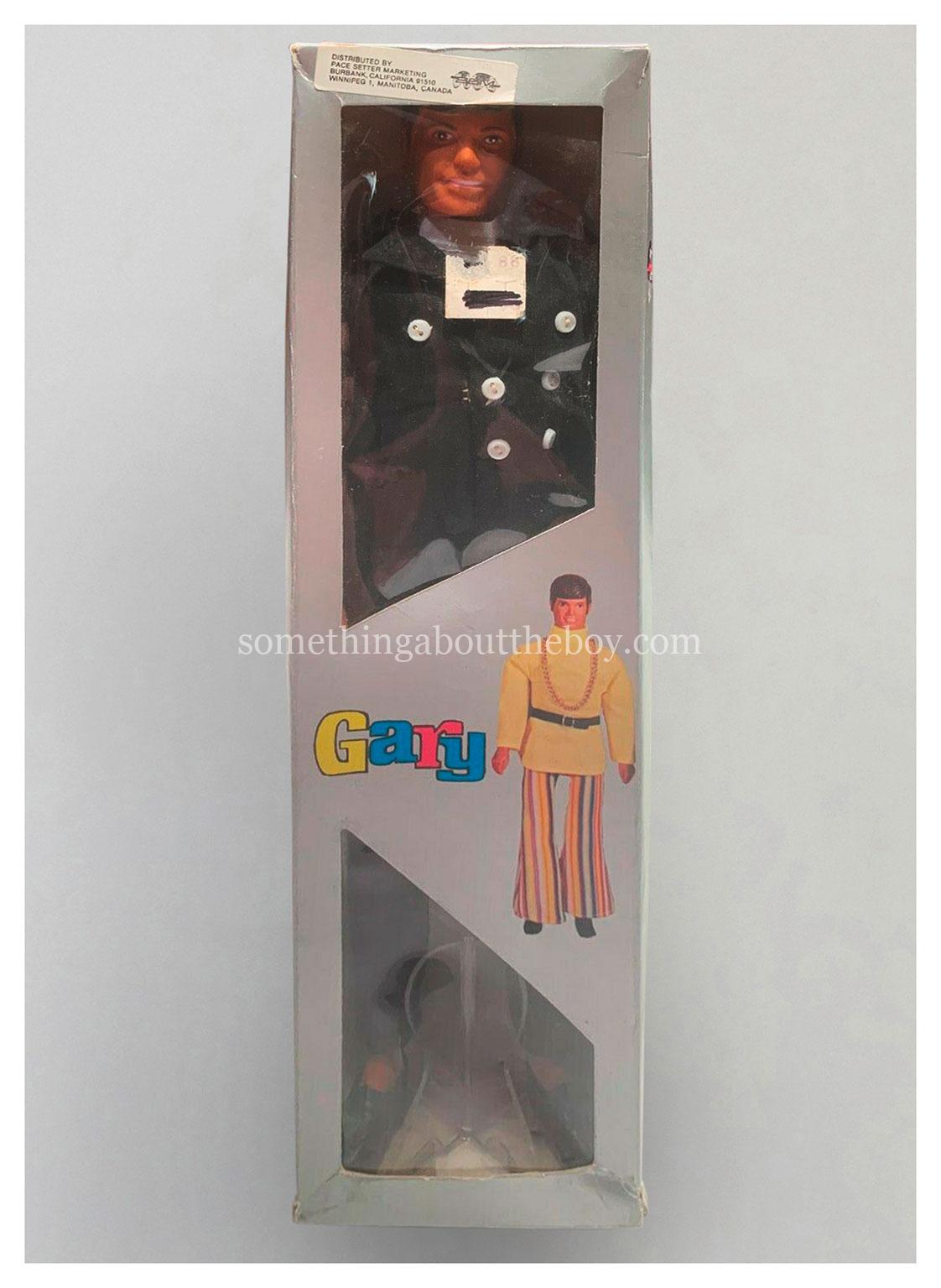
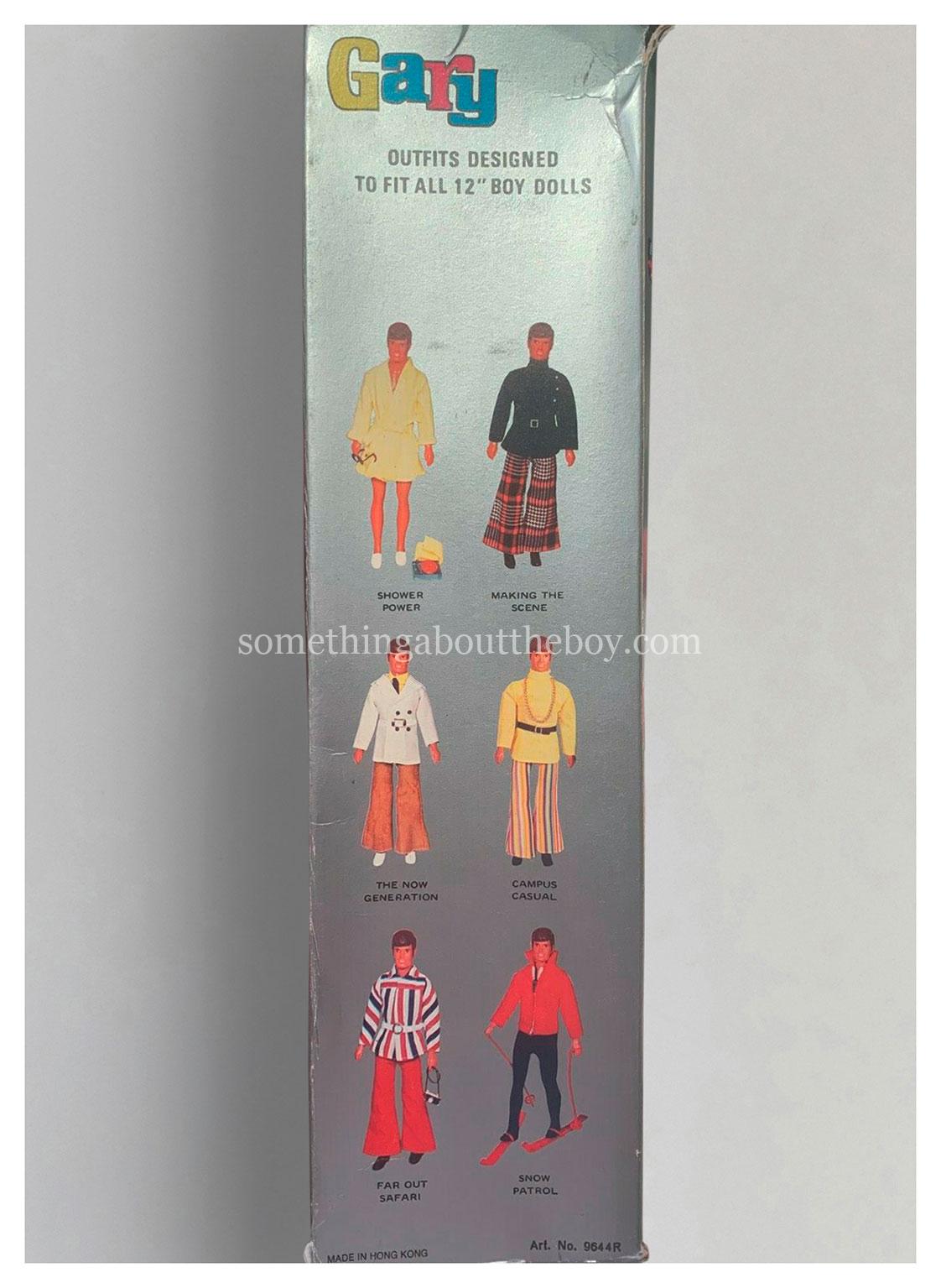
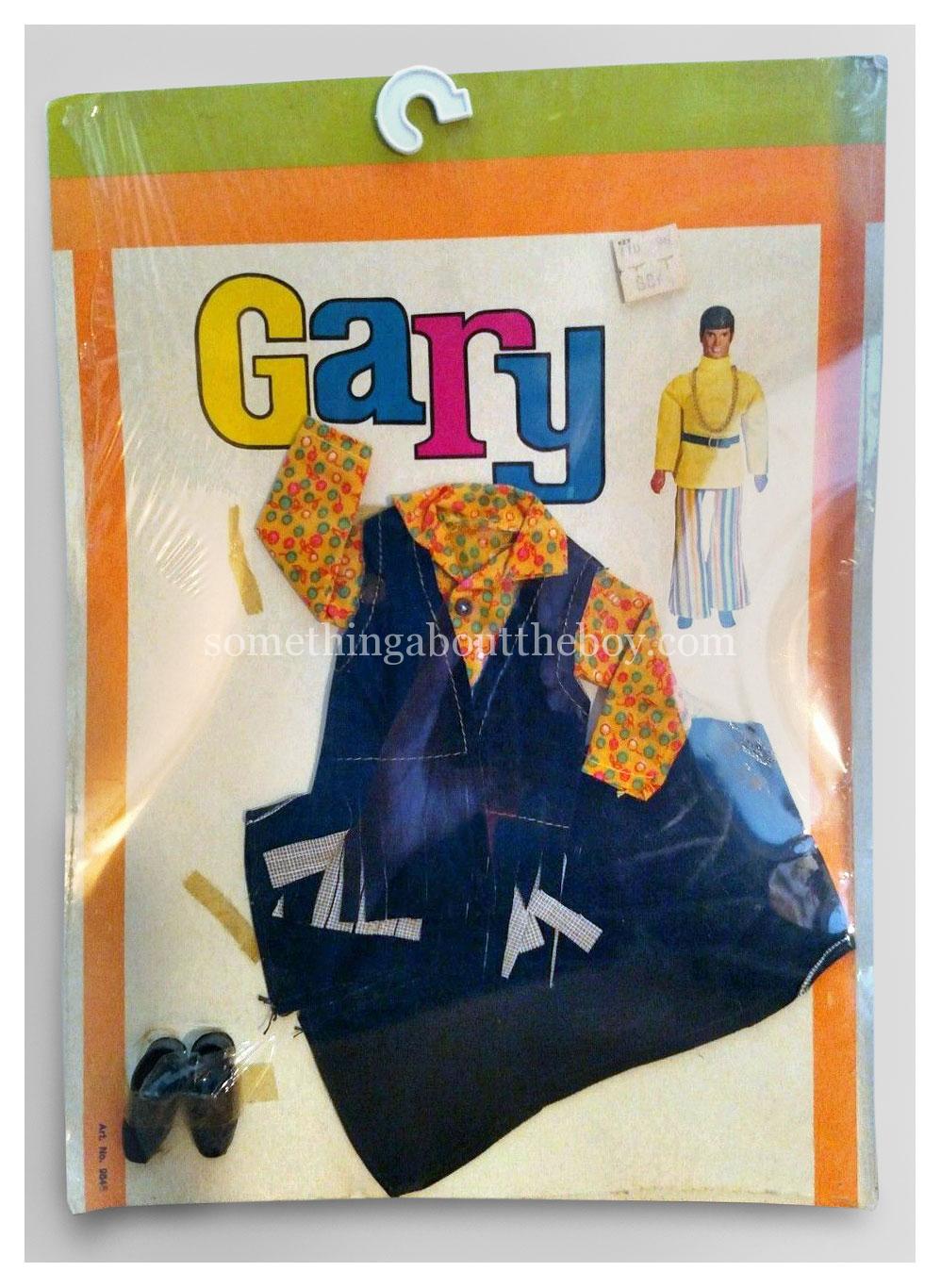
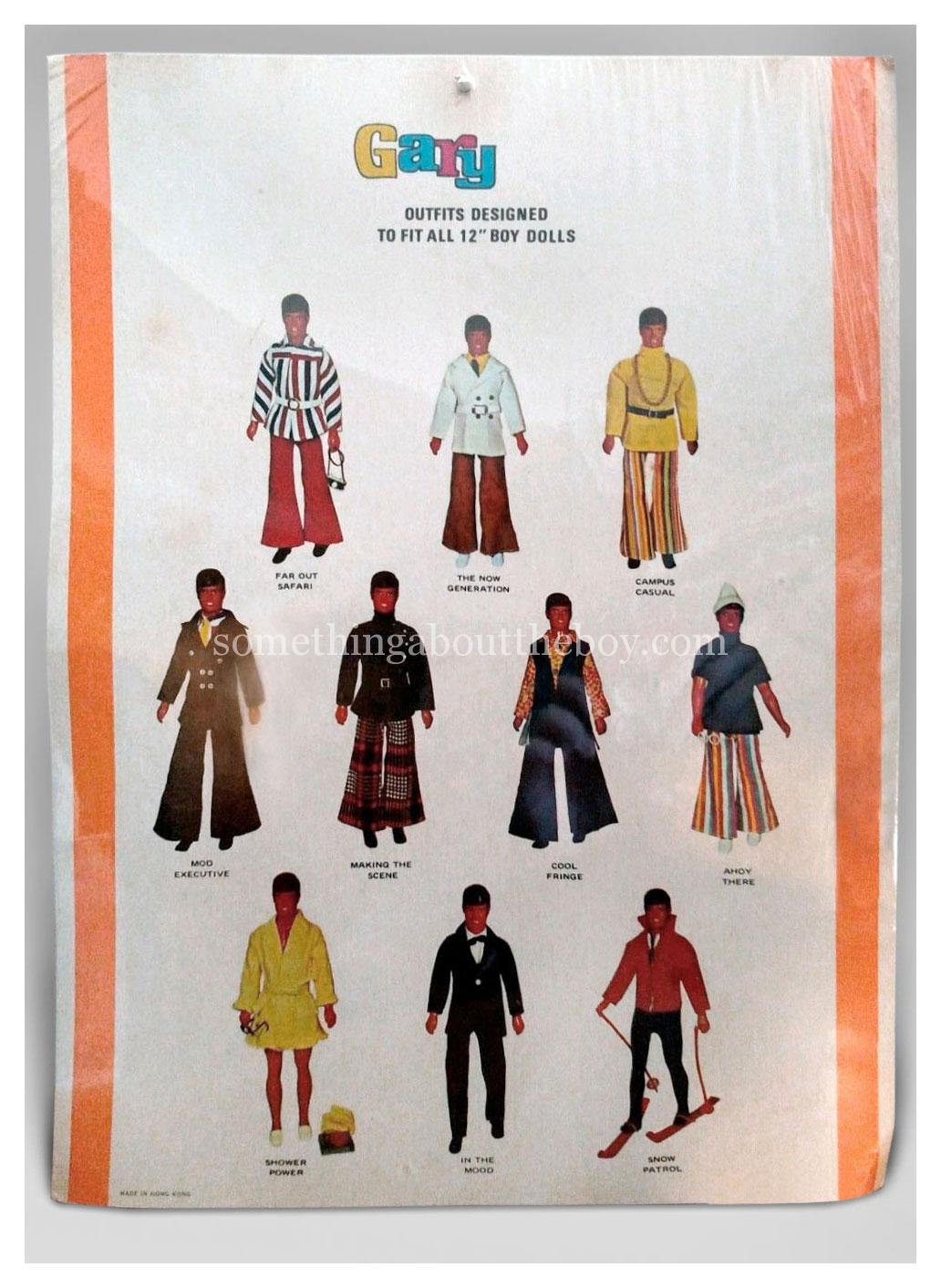
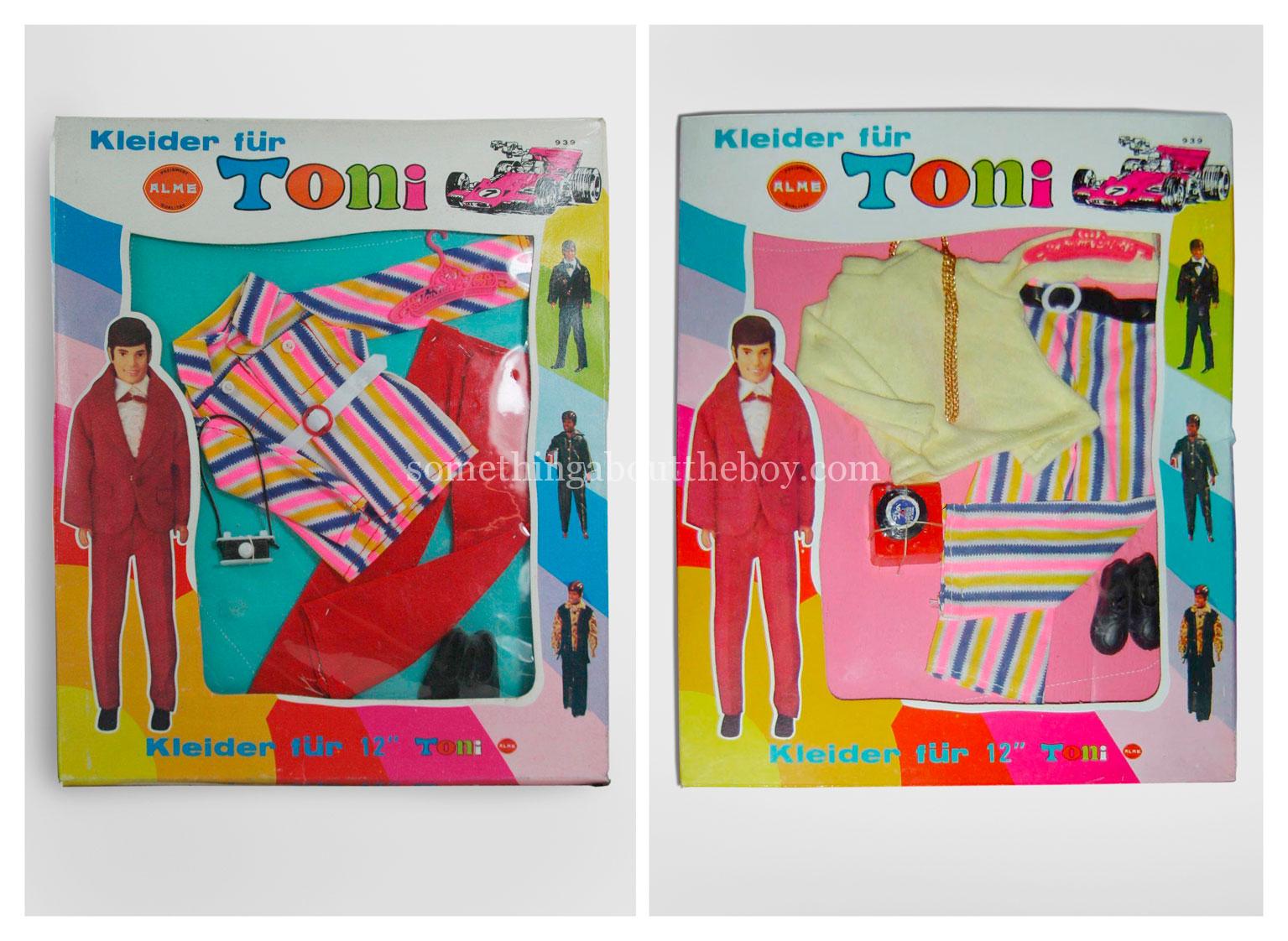
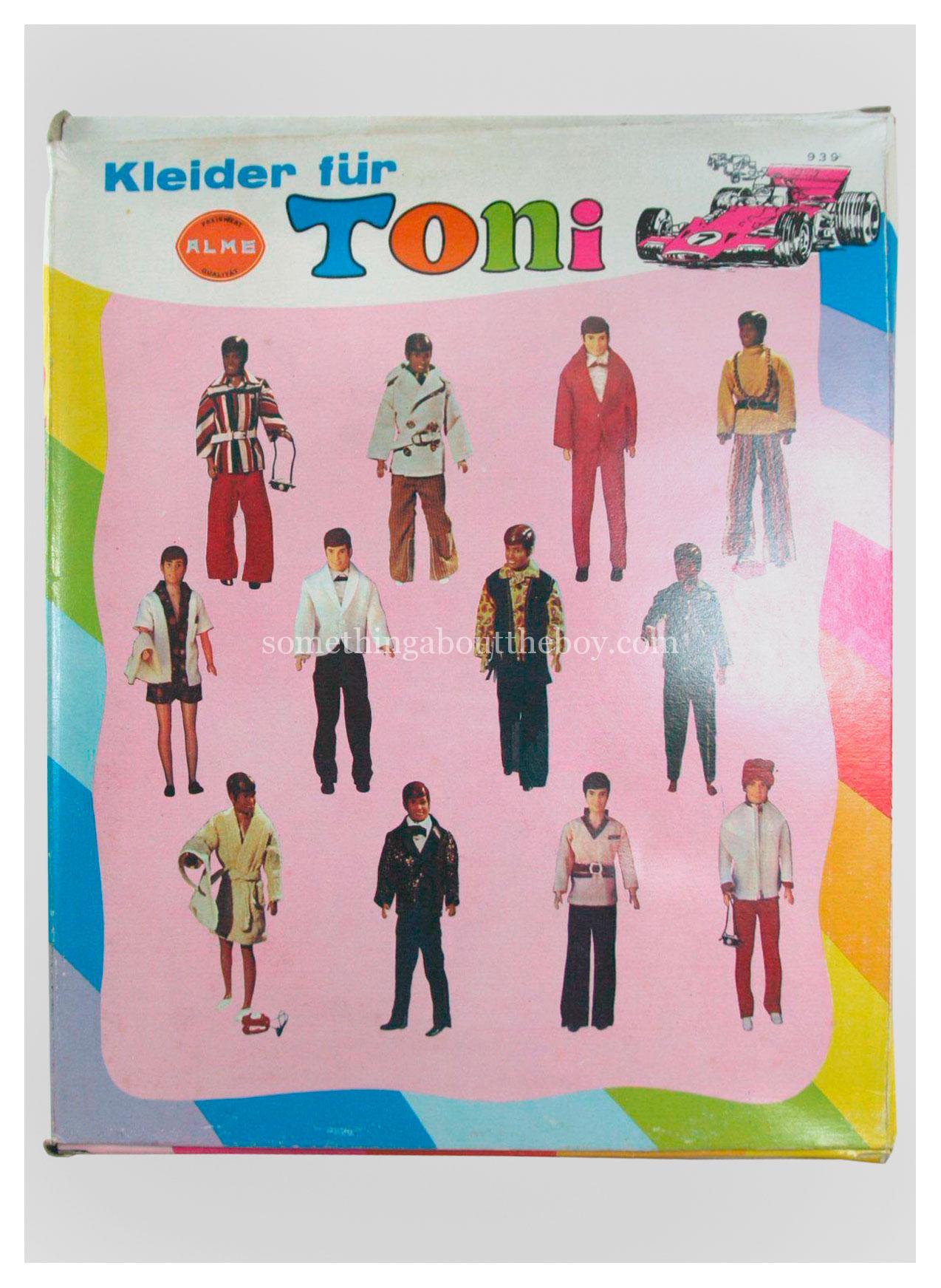
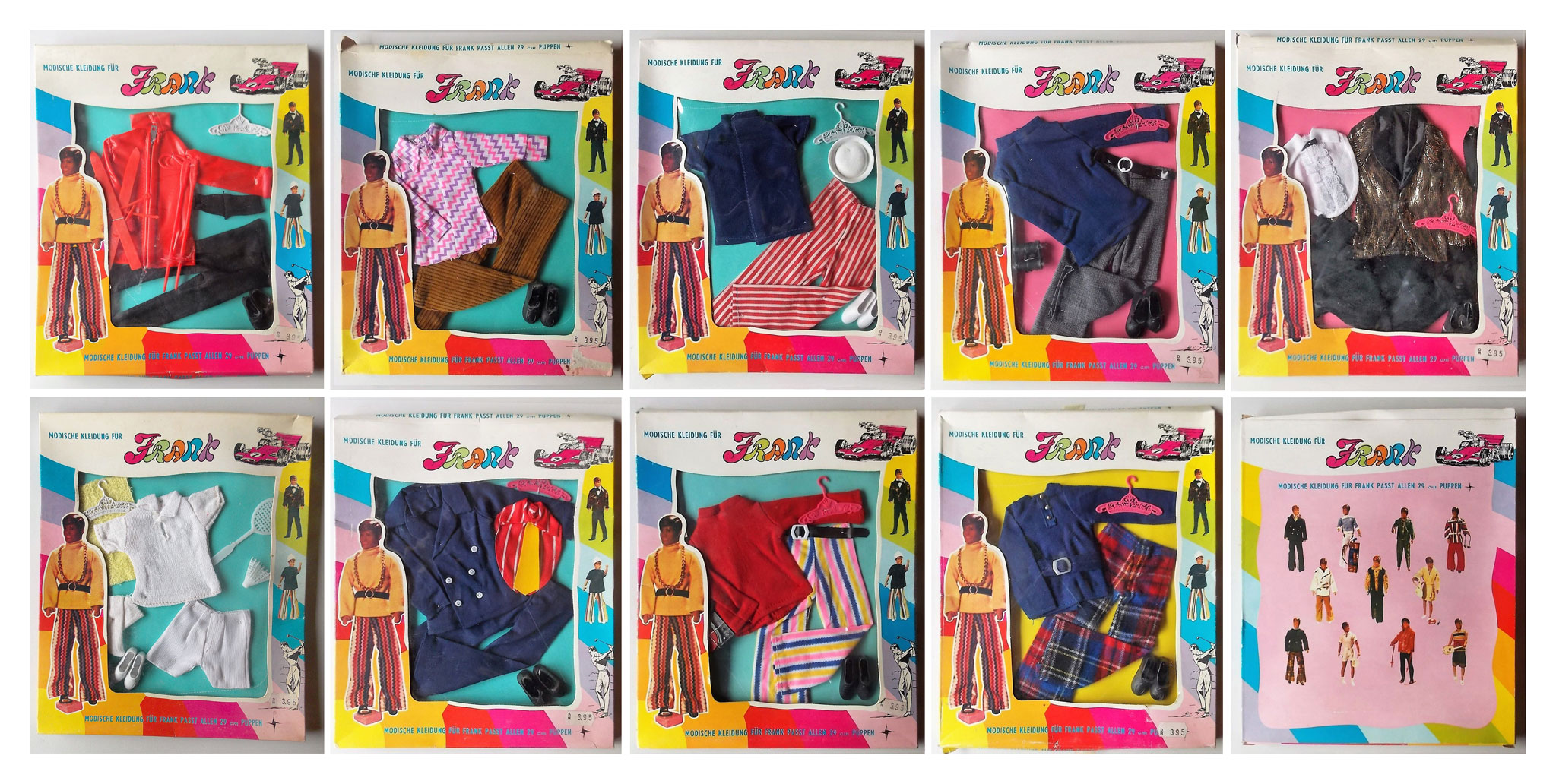
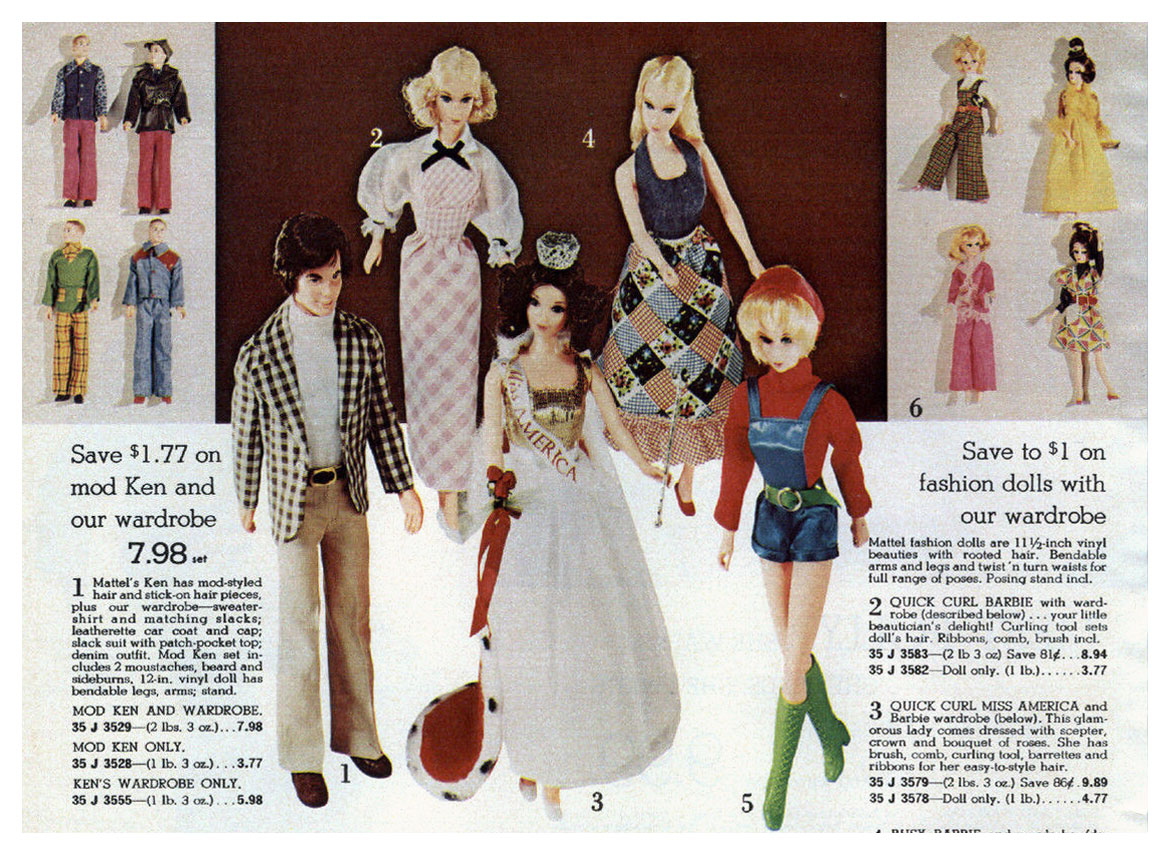
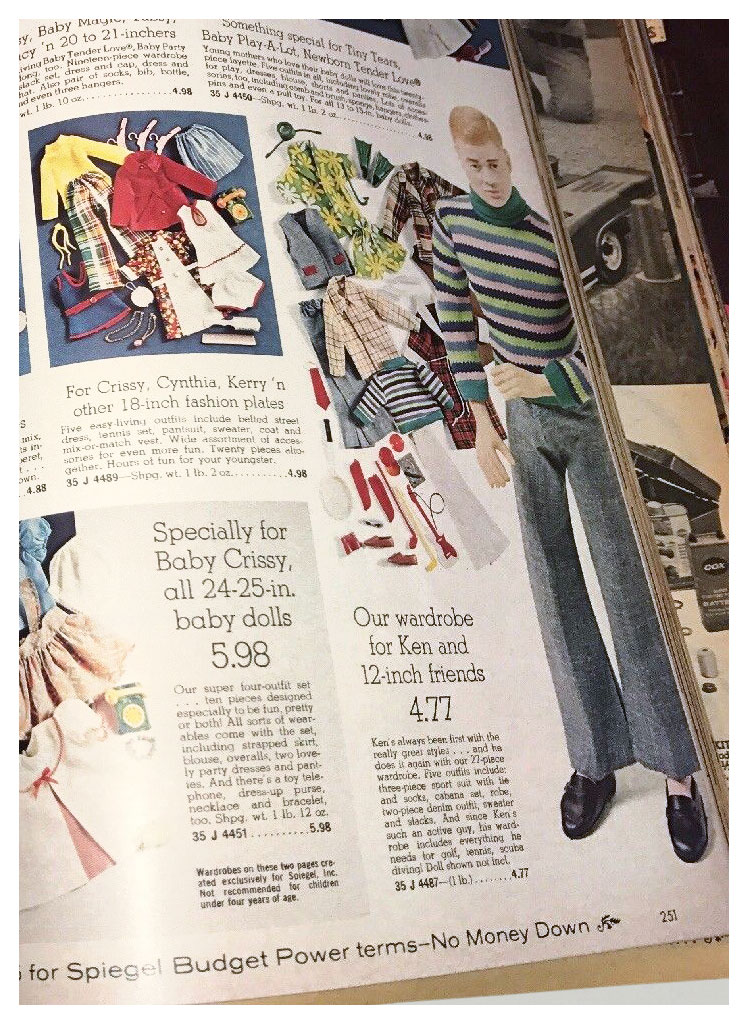
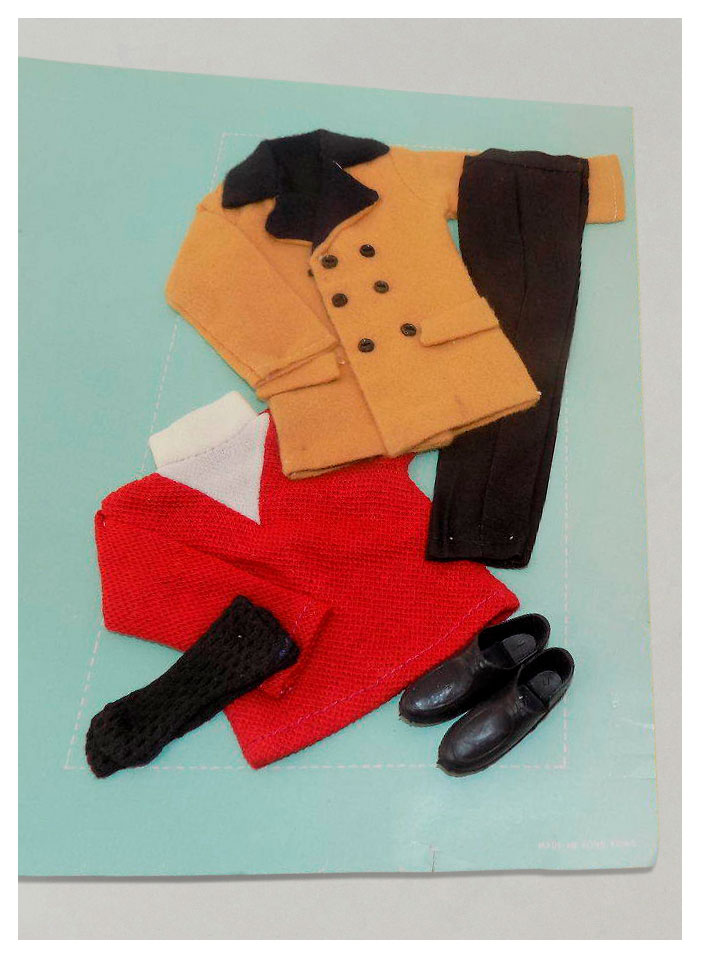

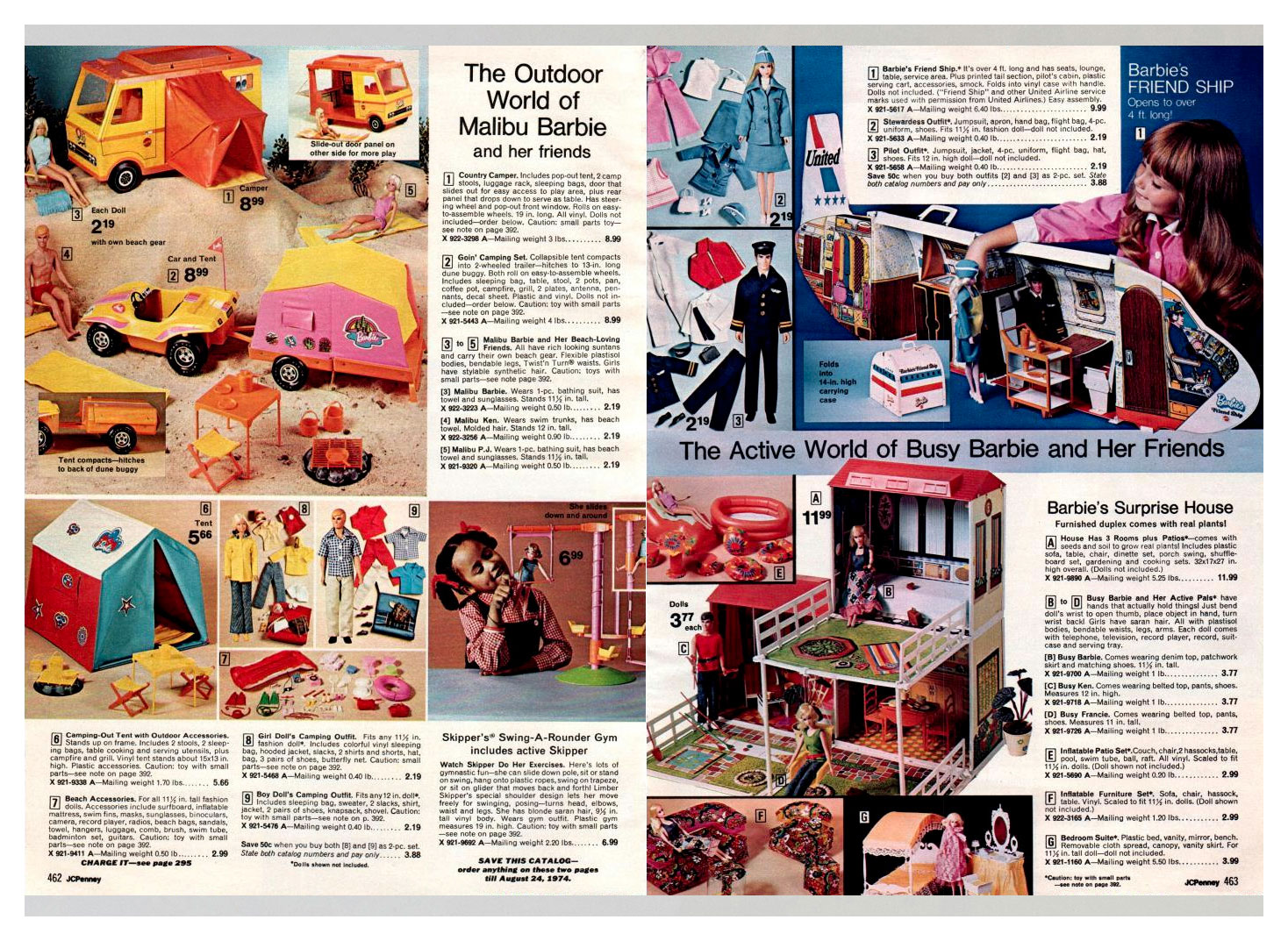
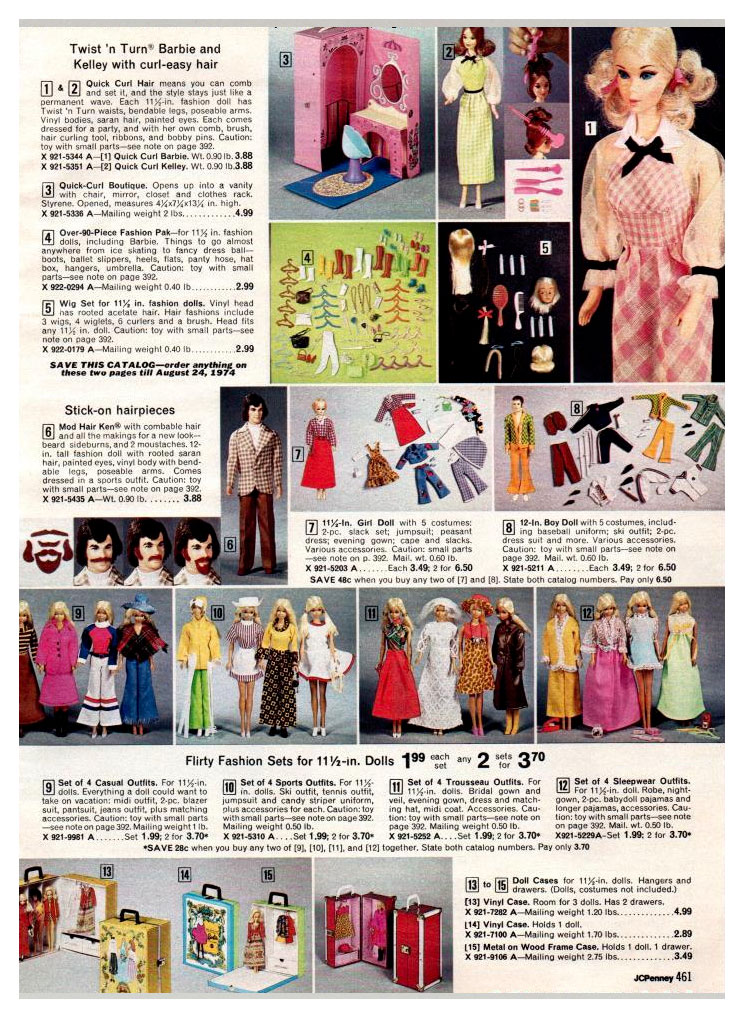
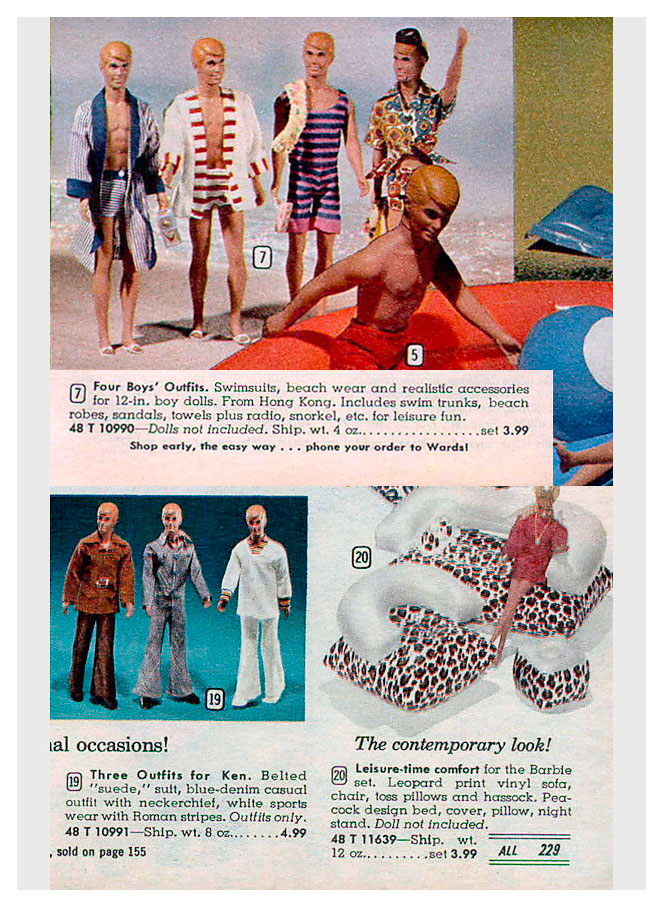
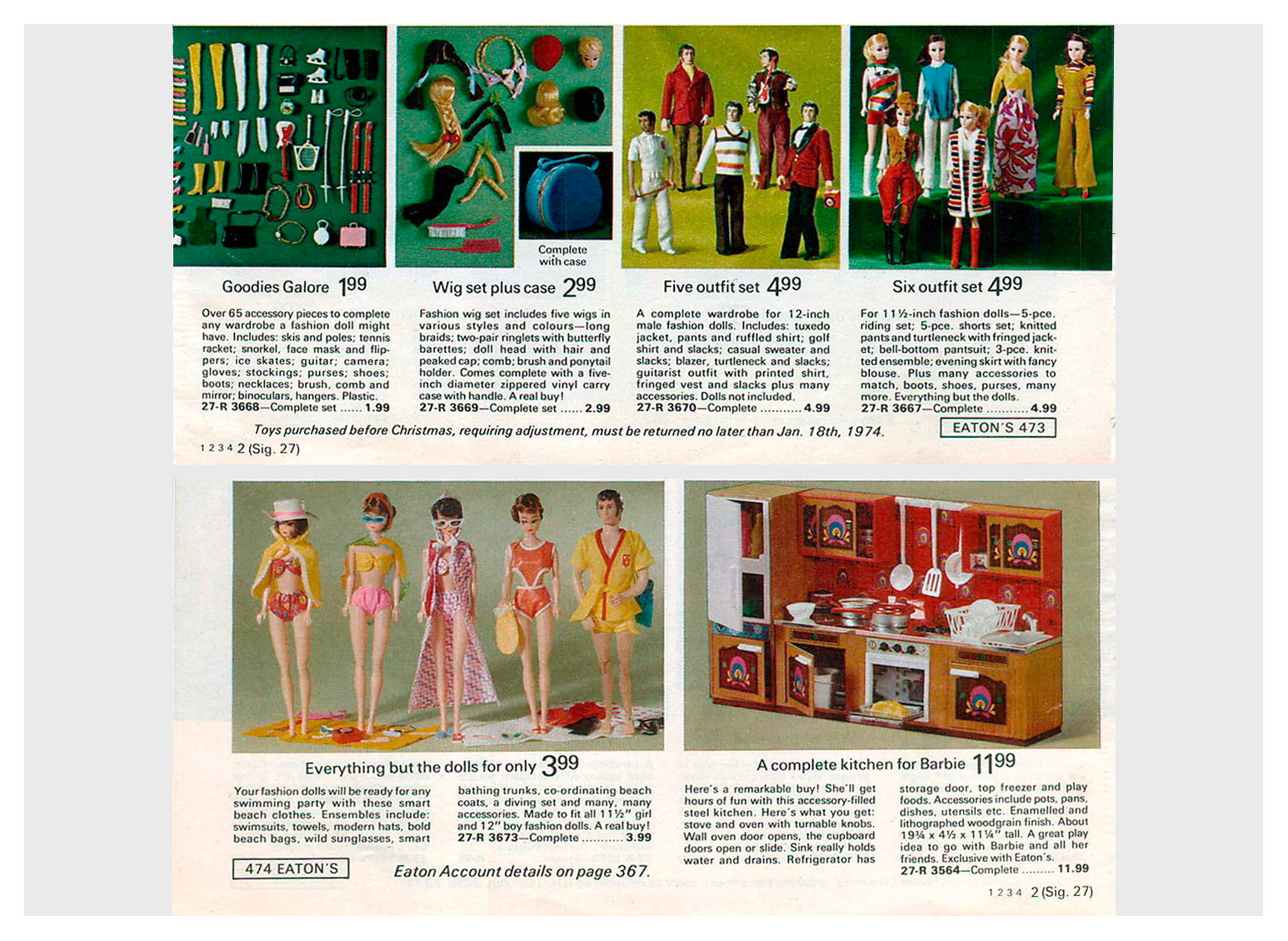
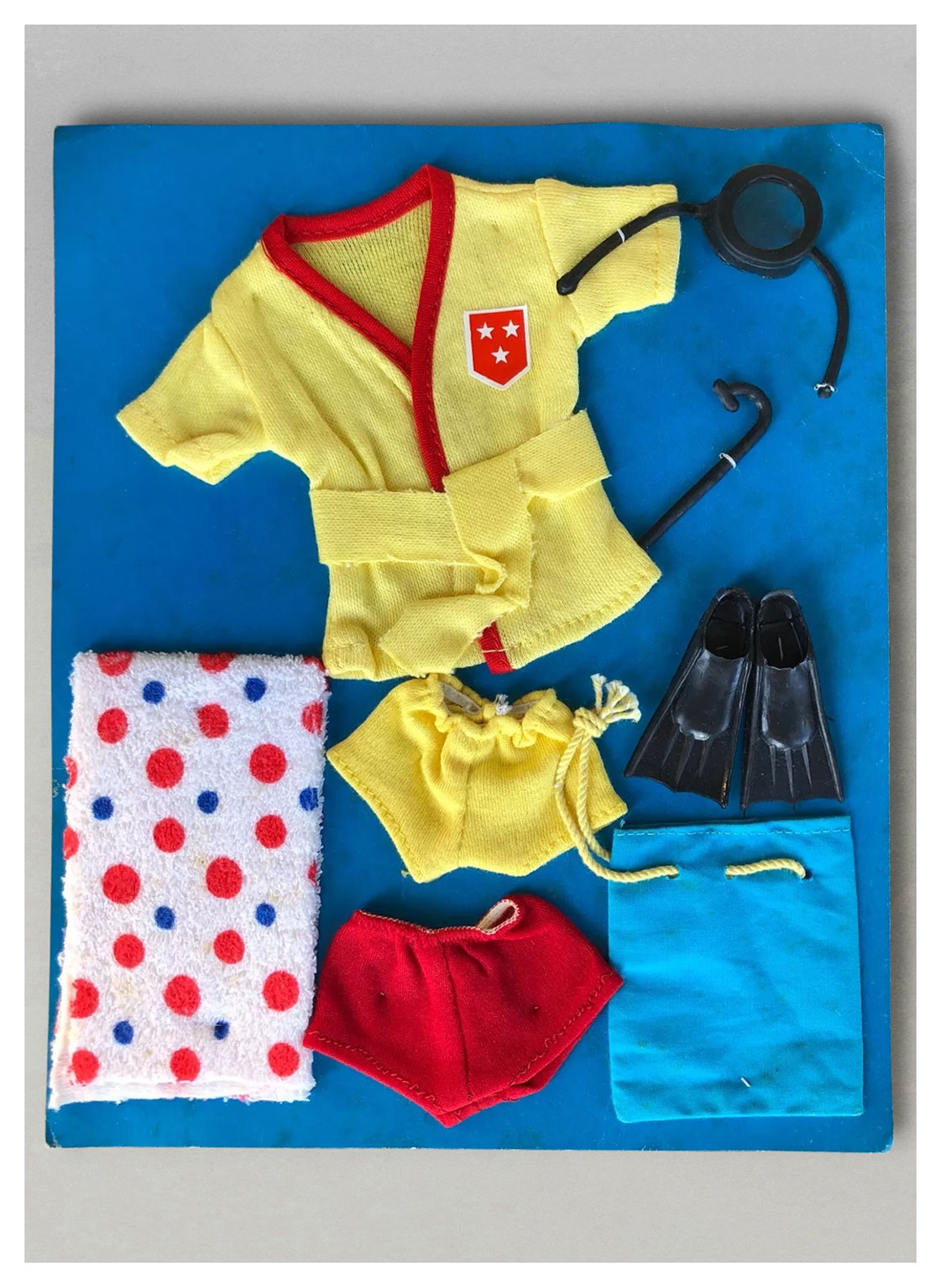
The outfit below right is interesting as it is the only one I’ve so far discovered which shows a picture of the genuine Ken on the packaging.
